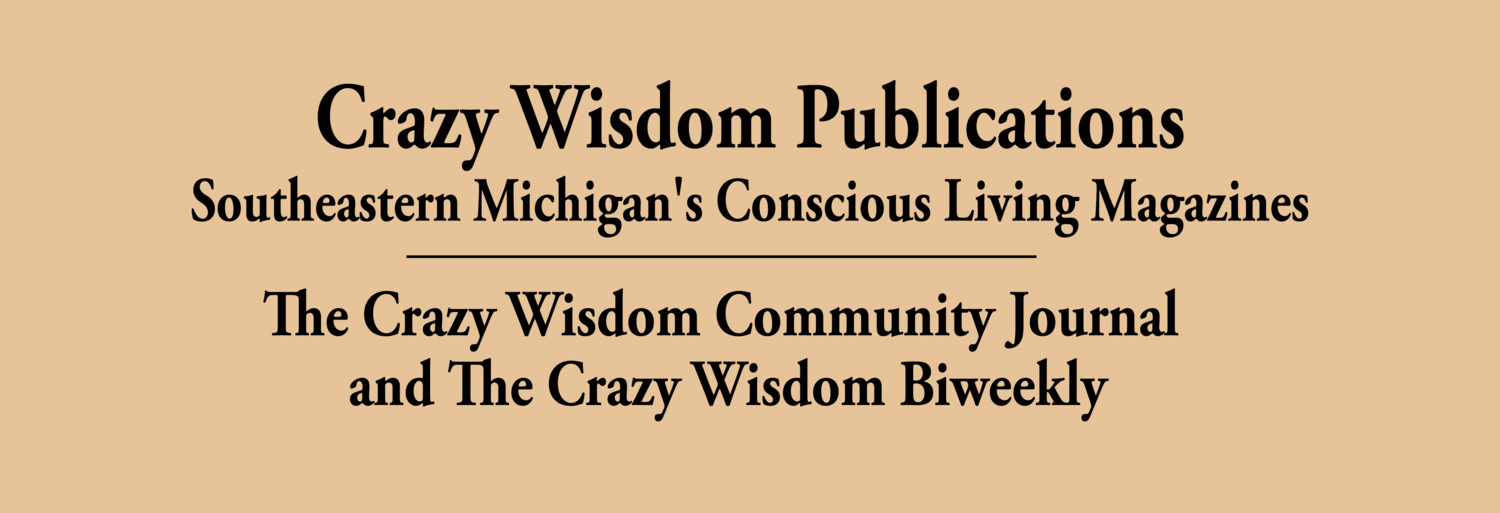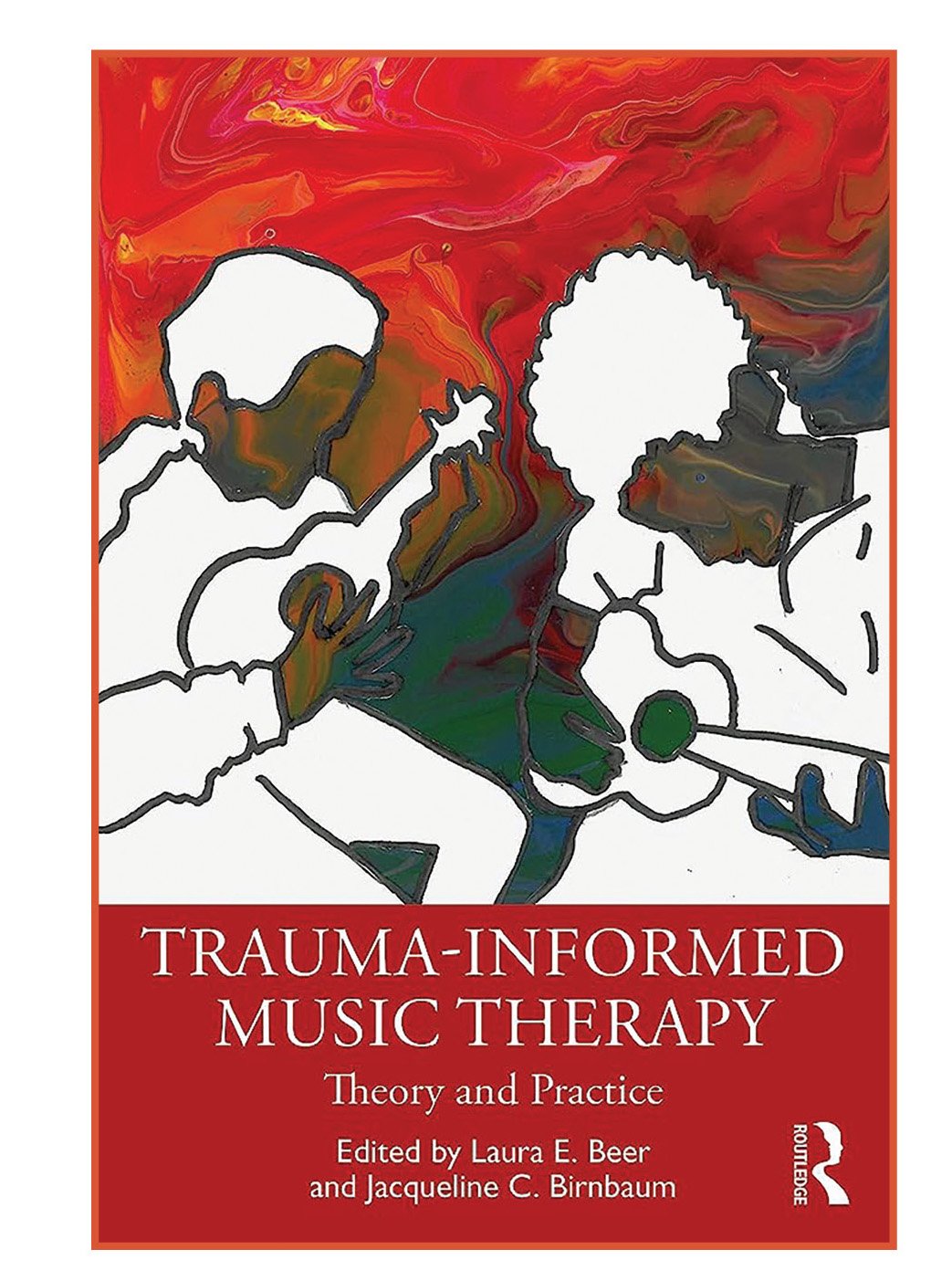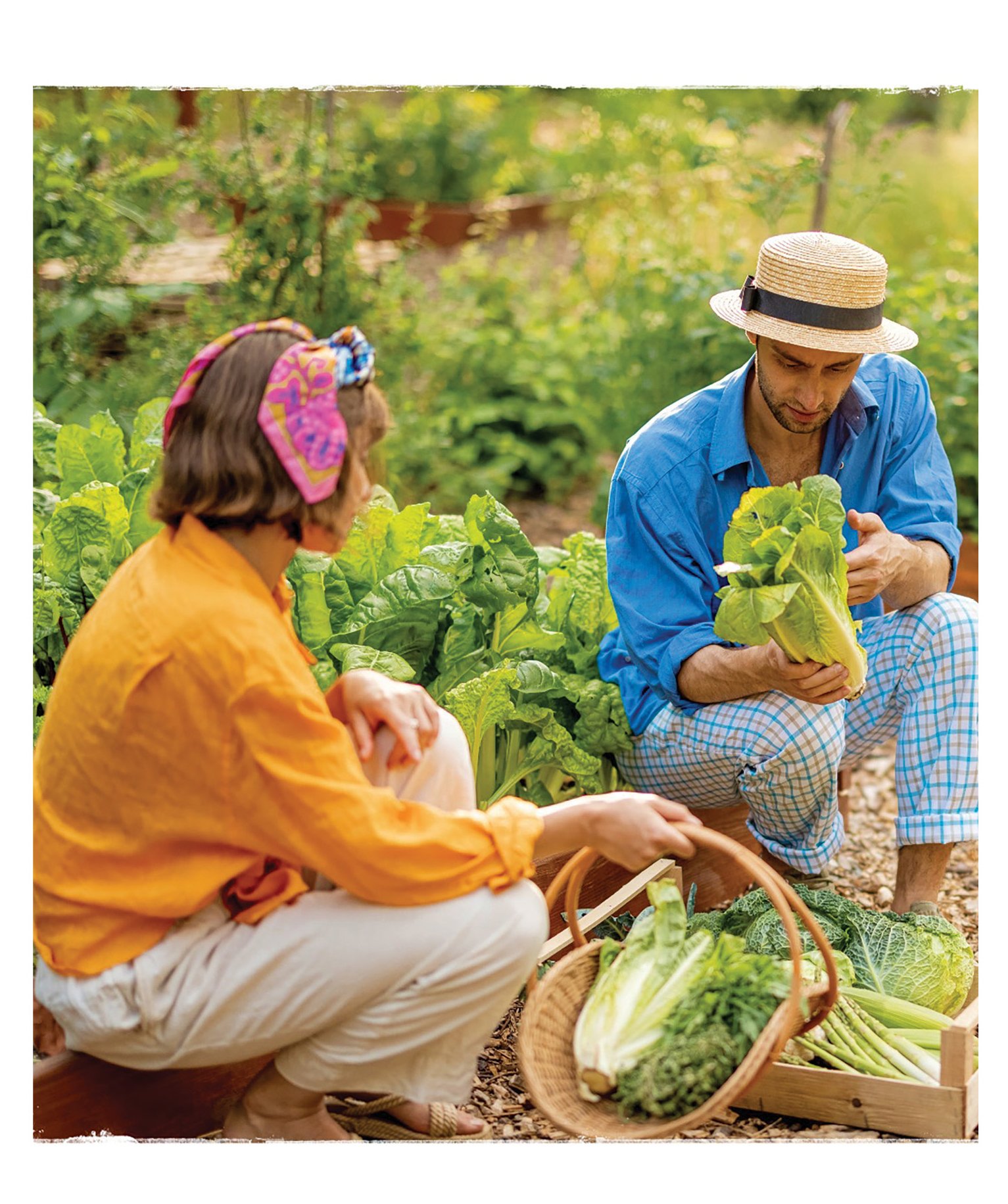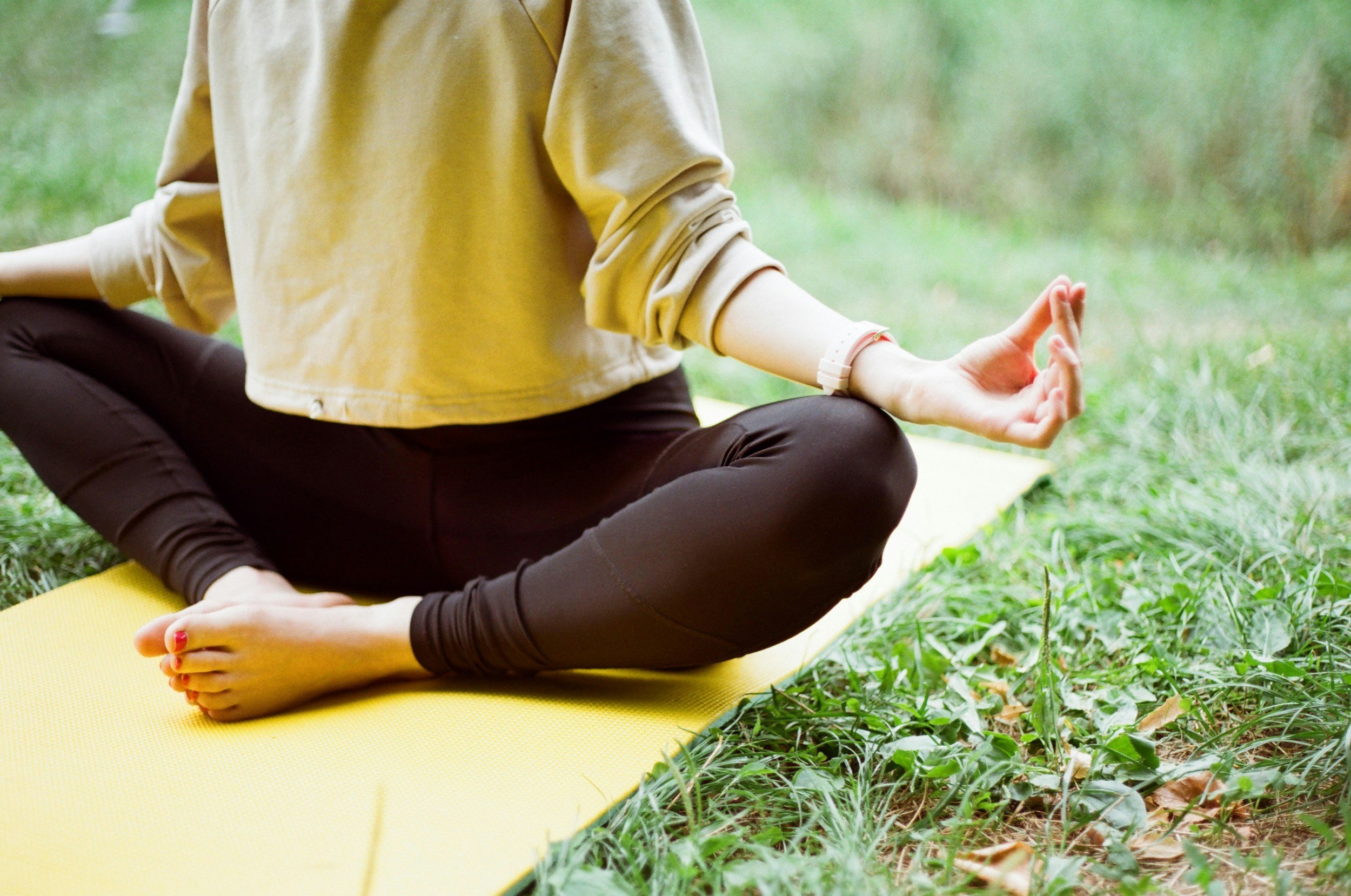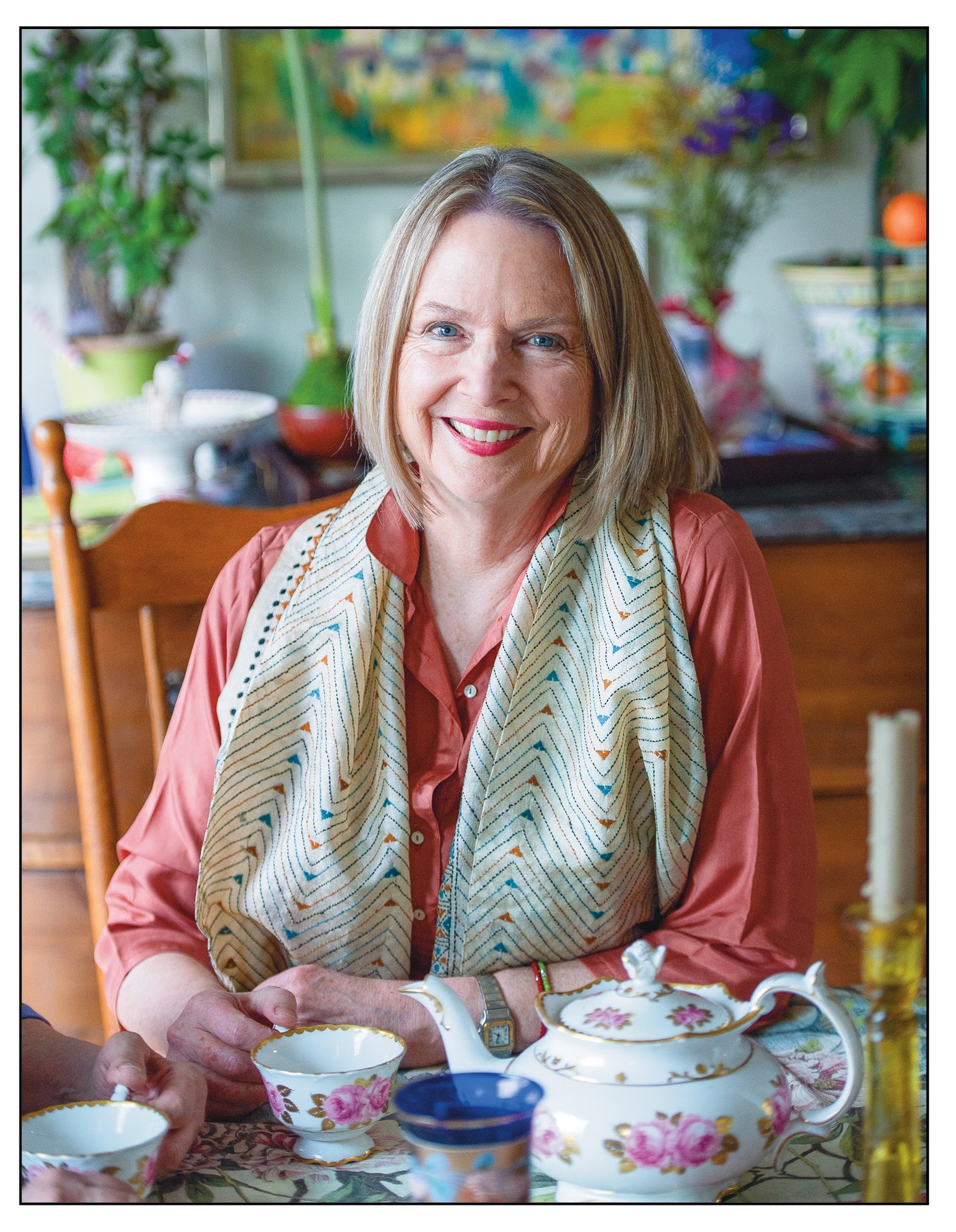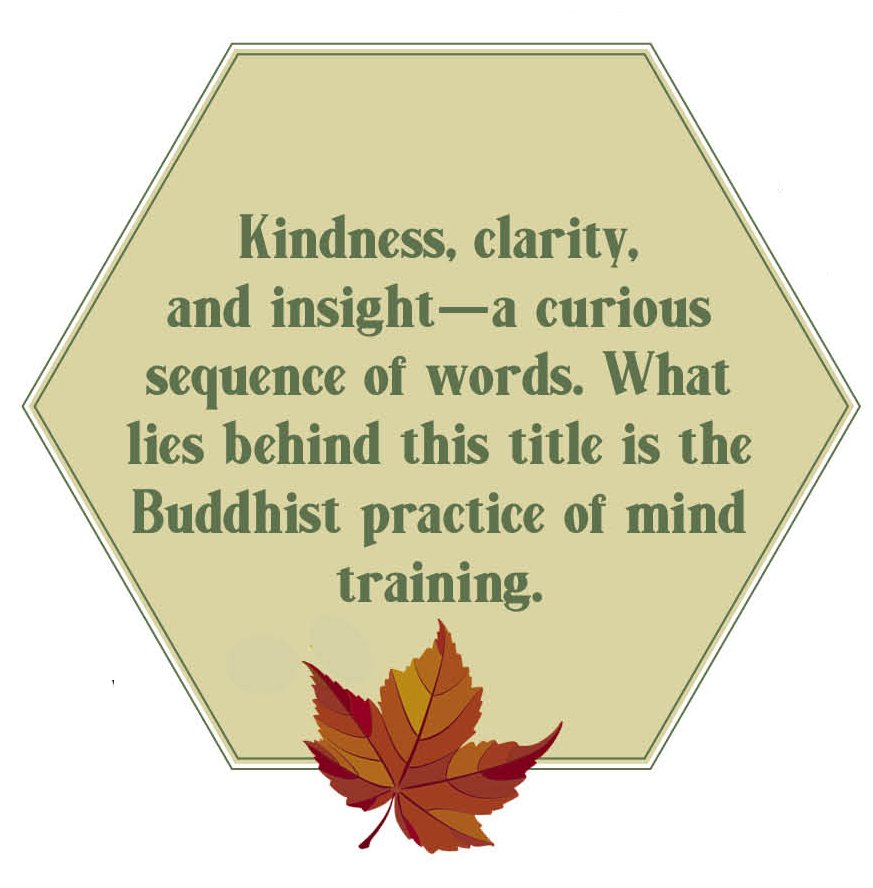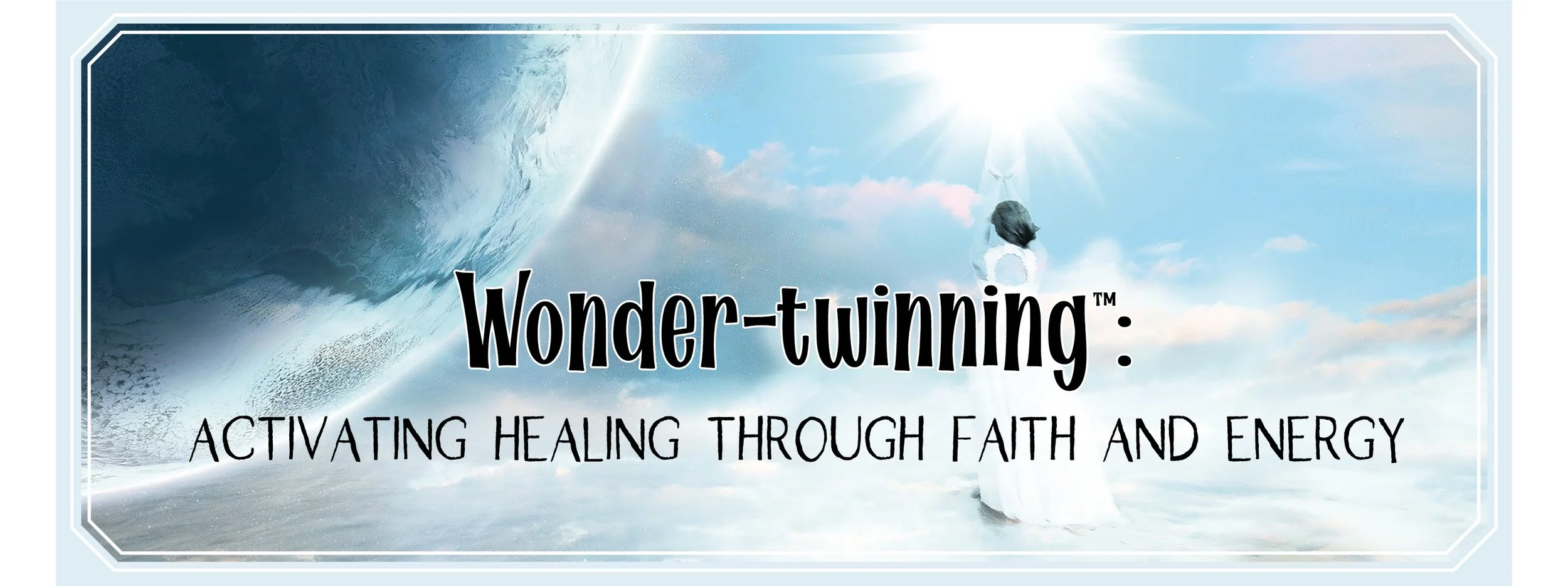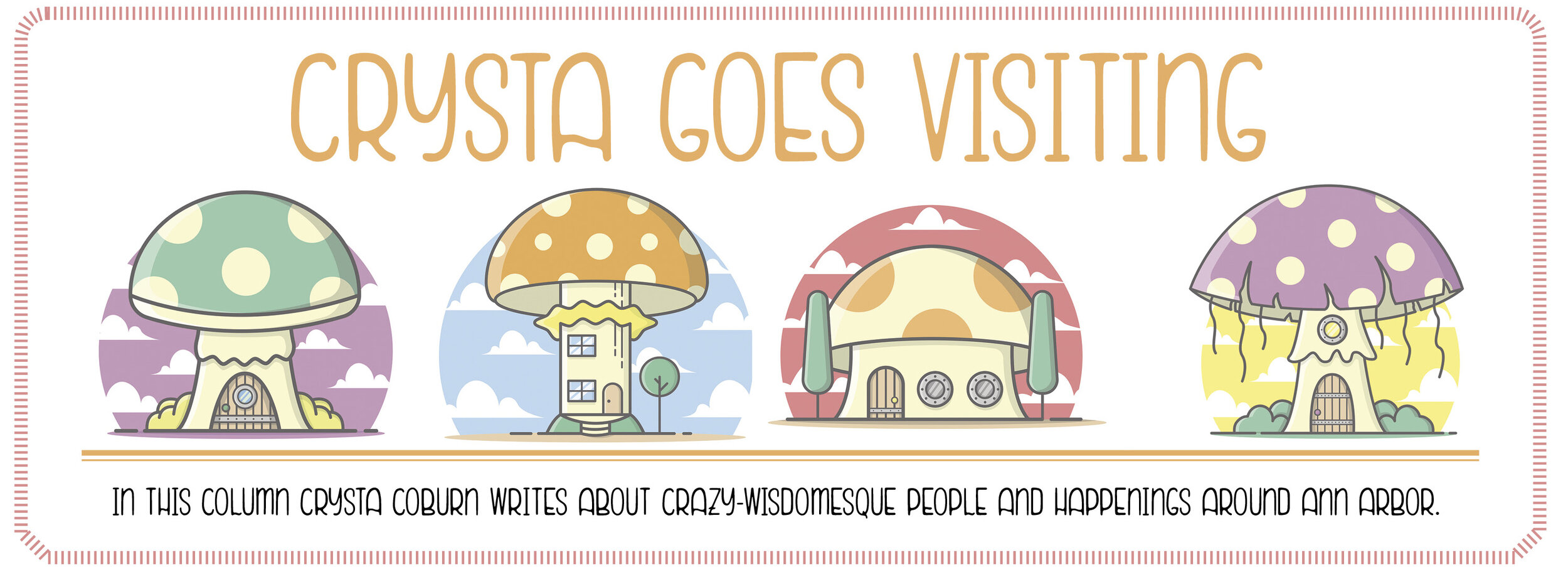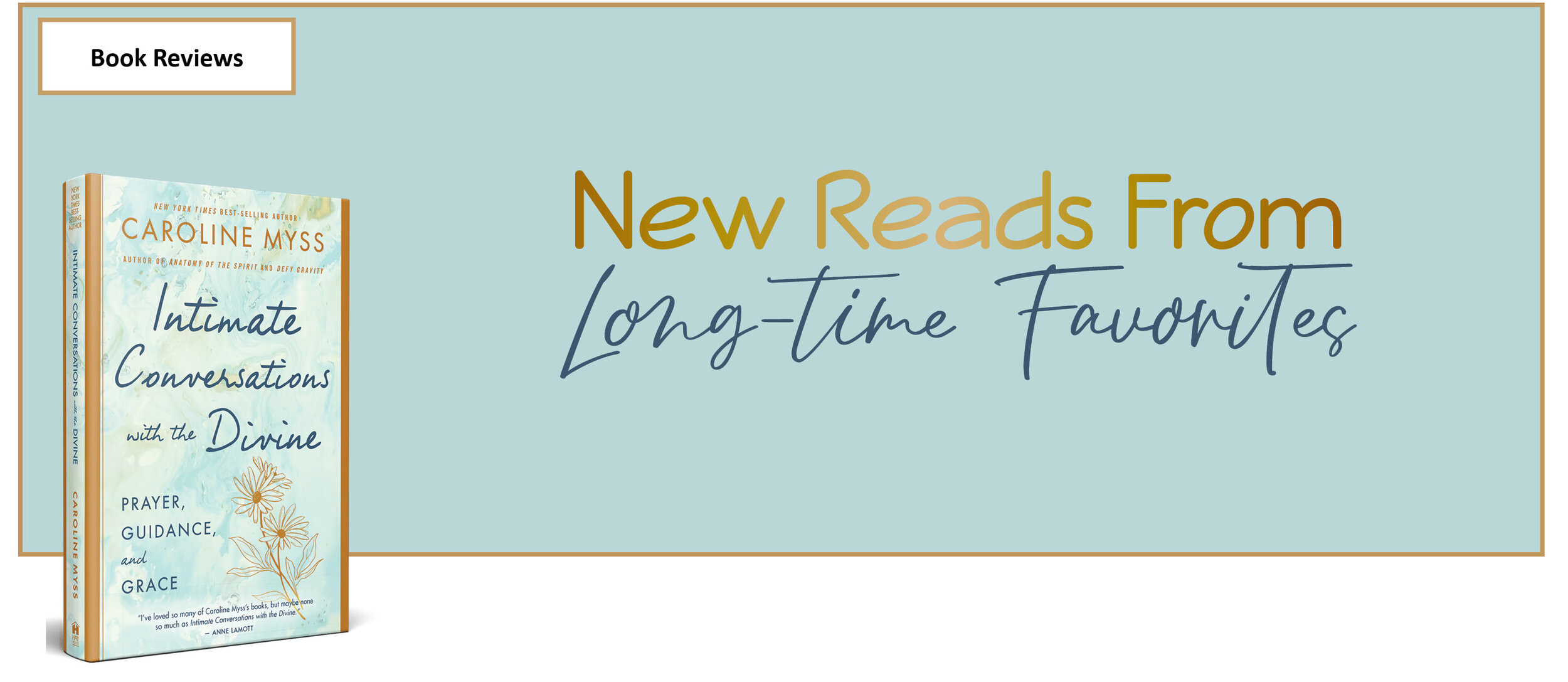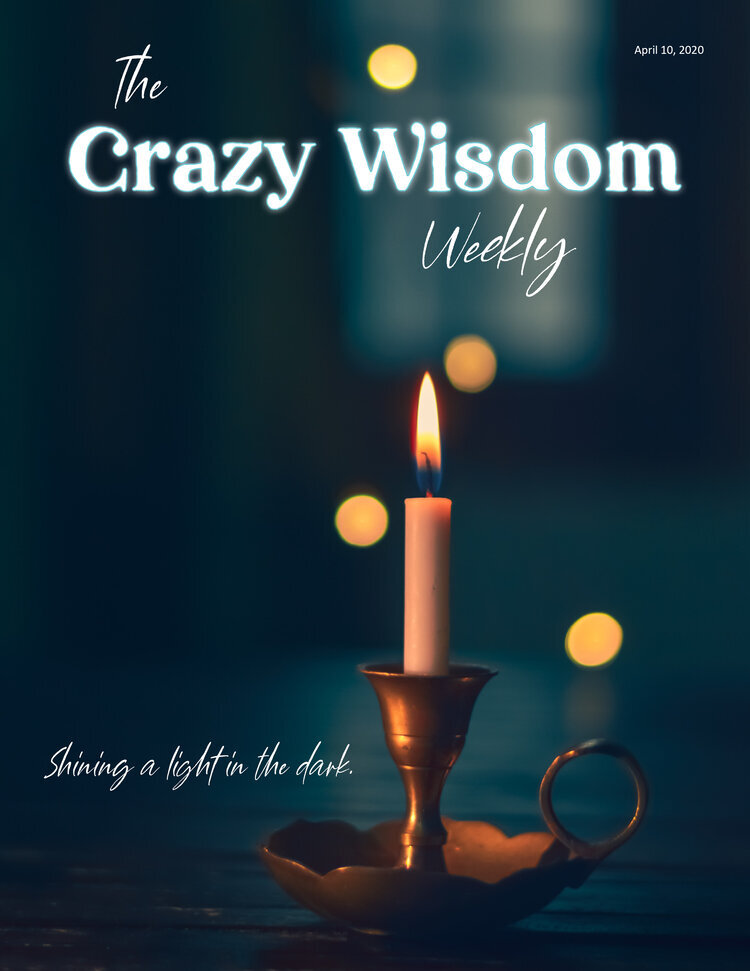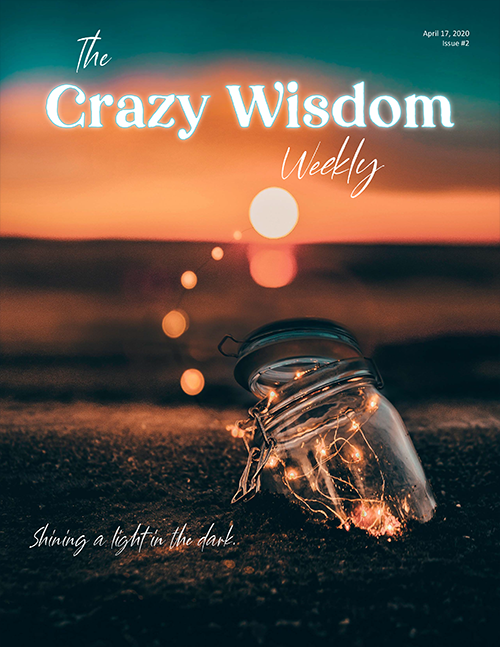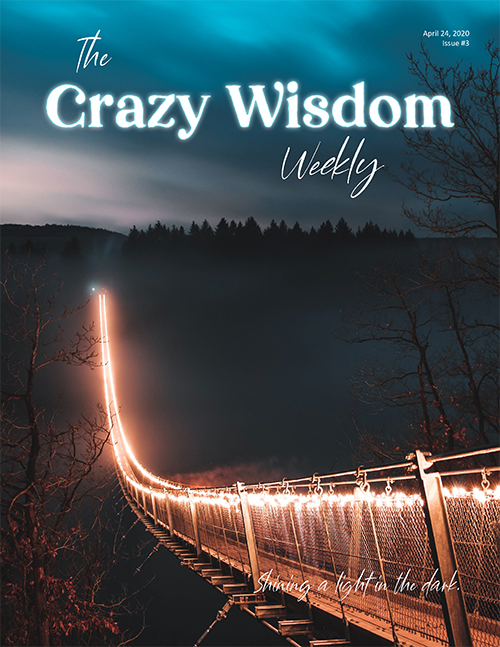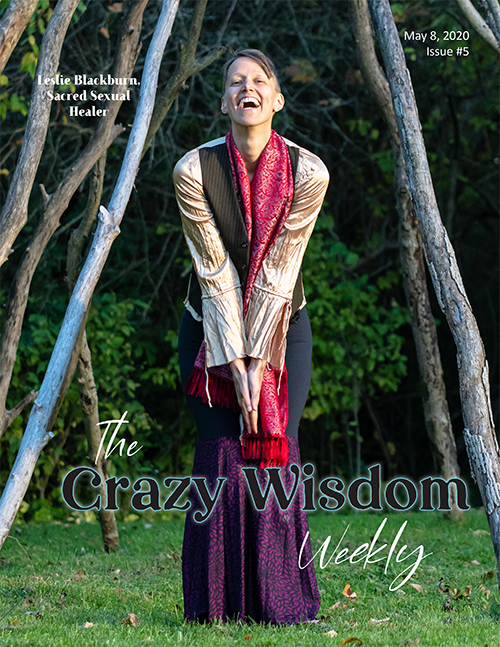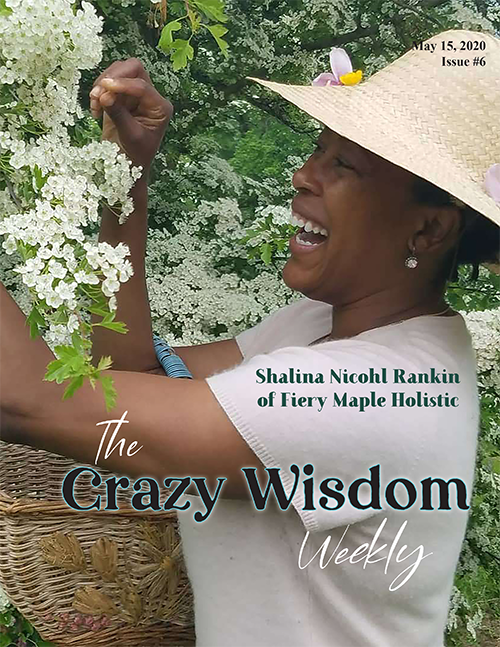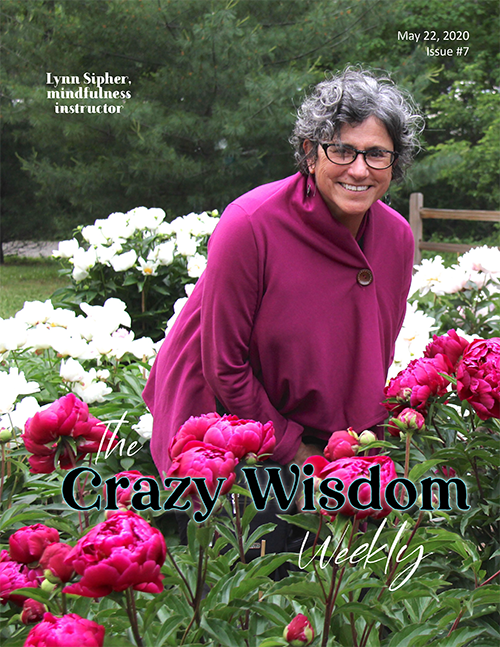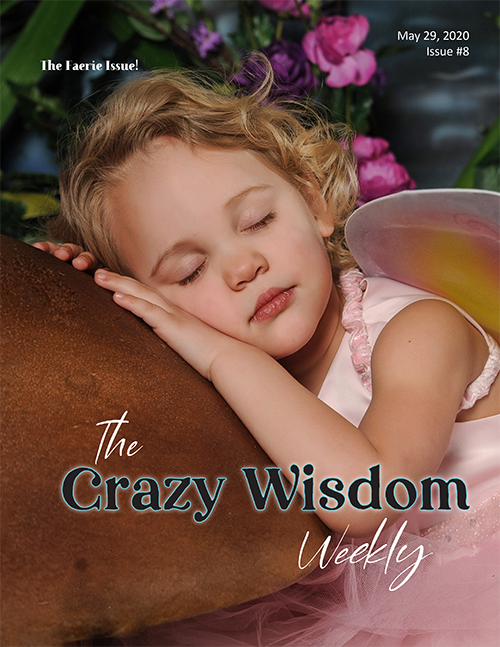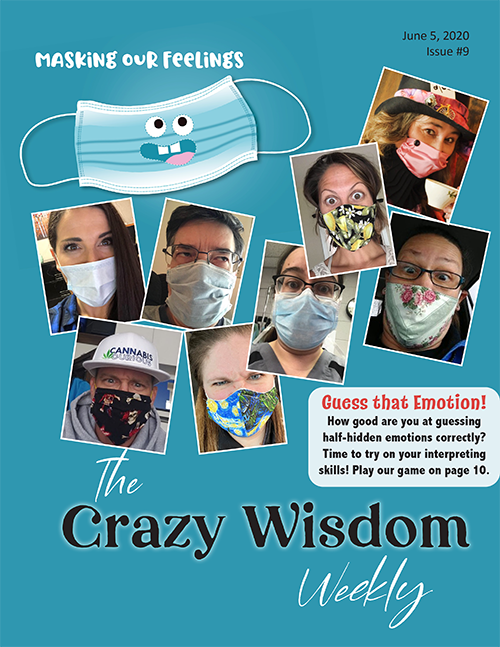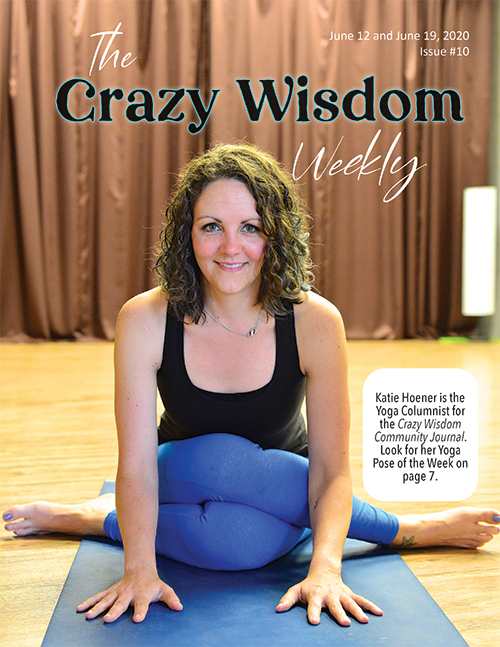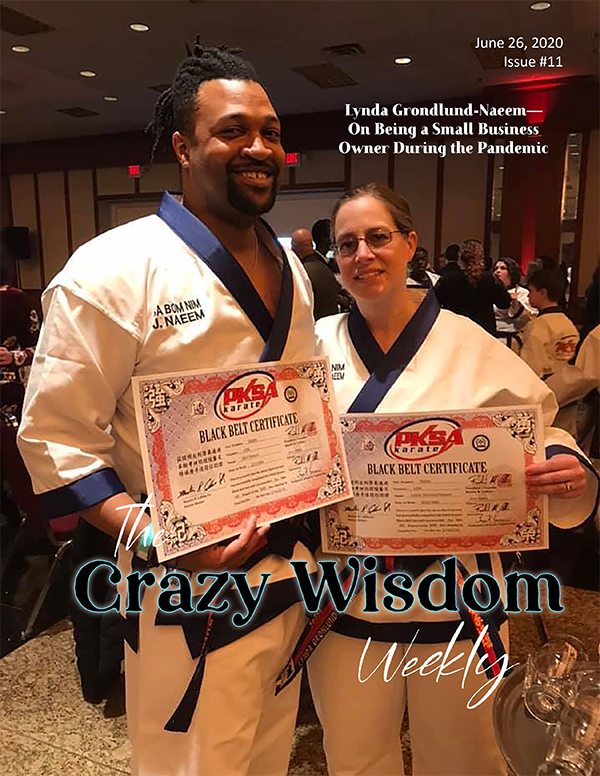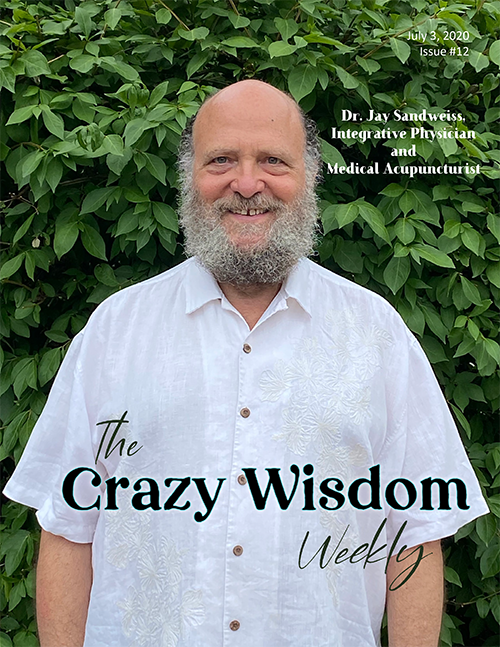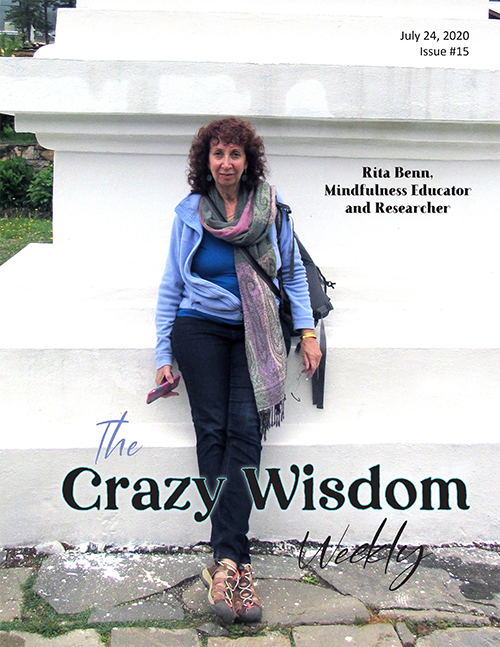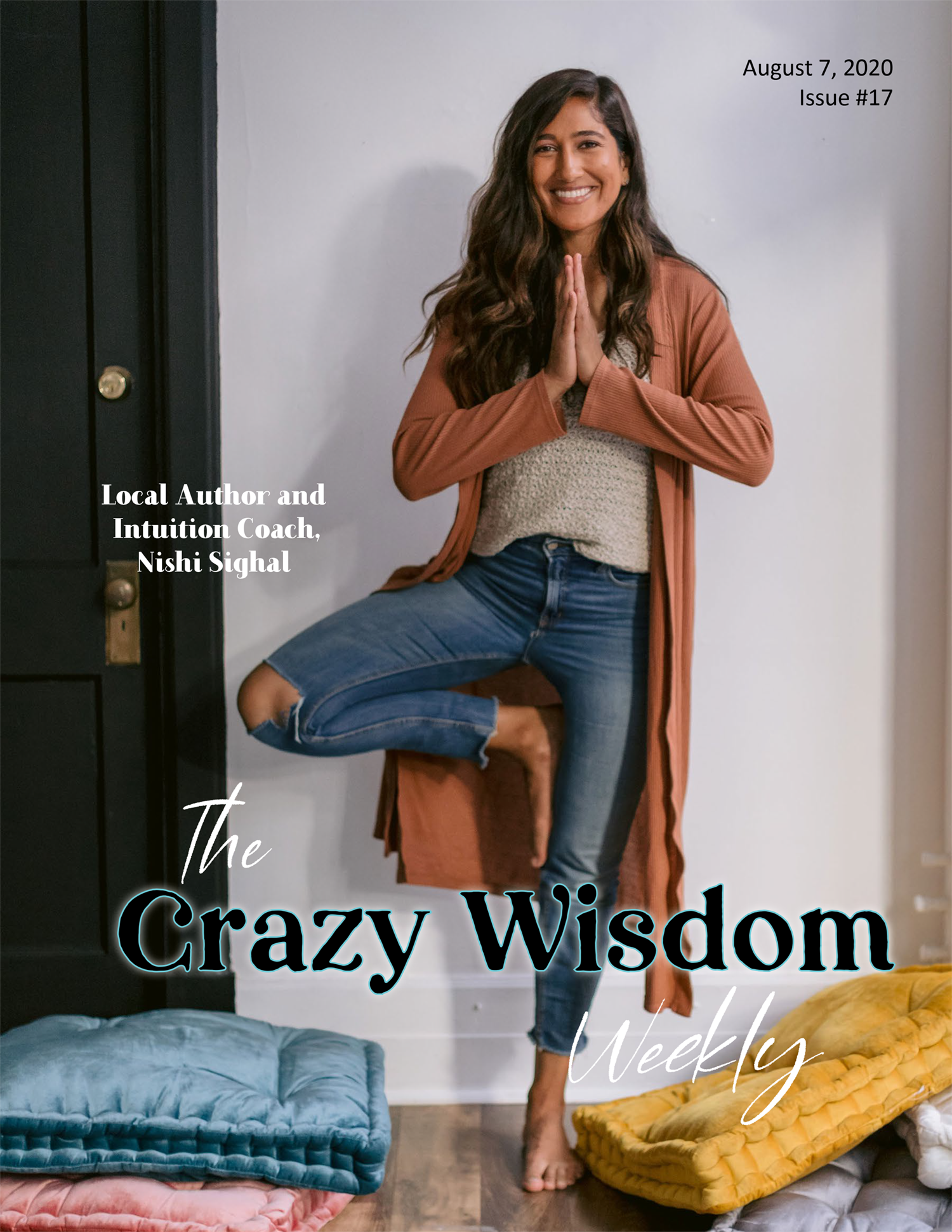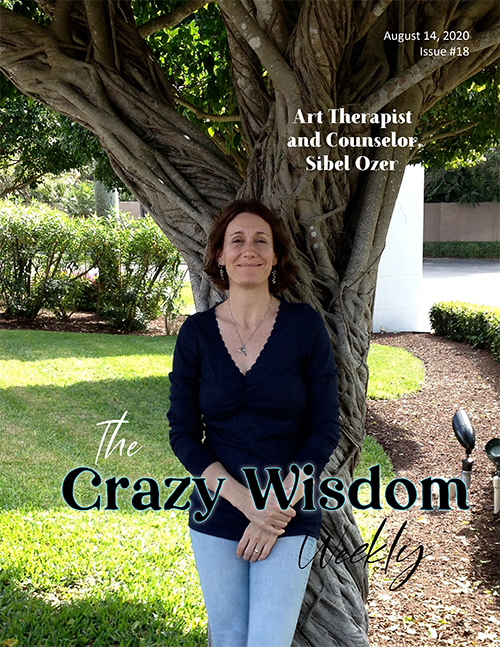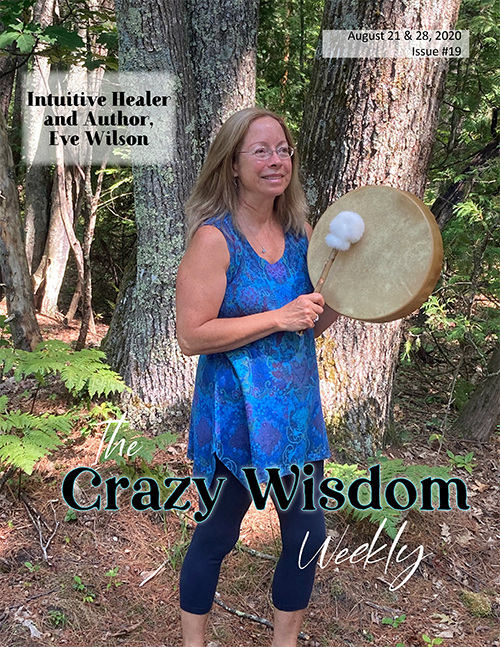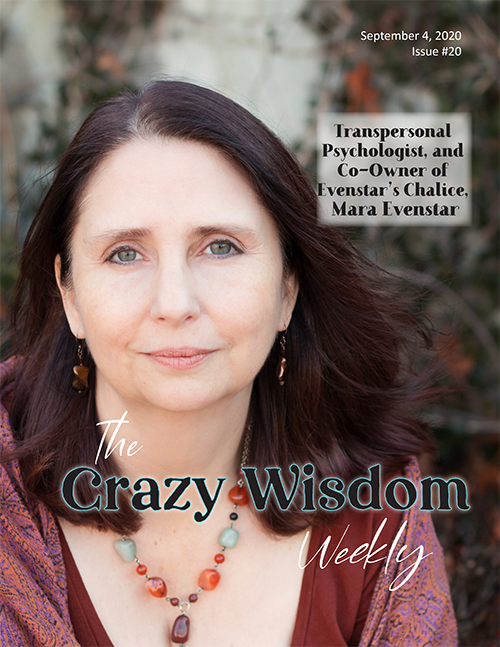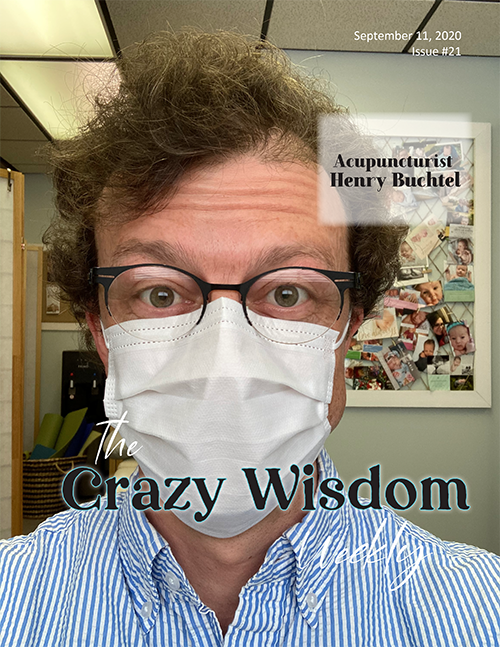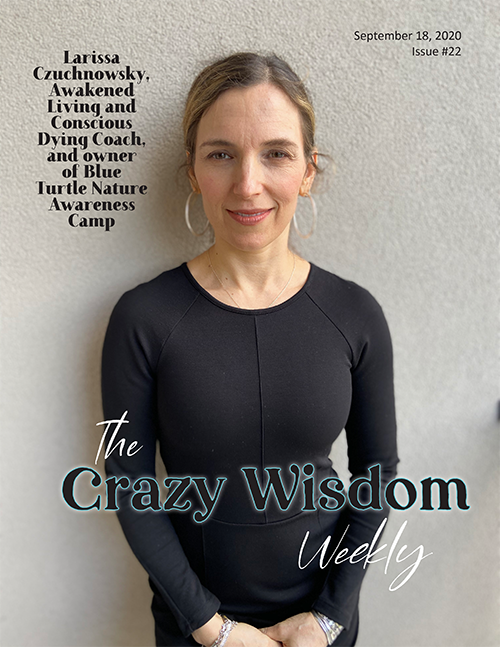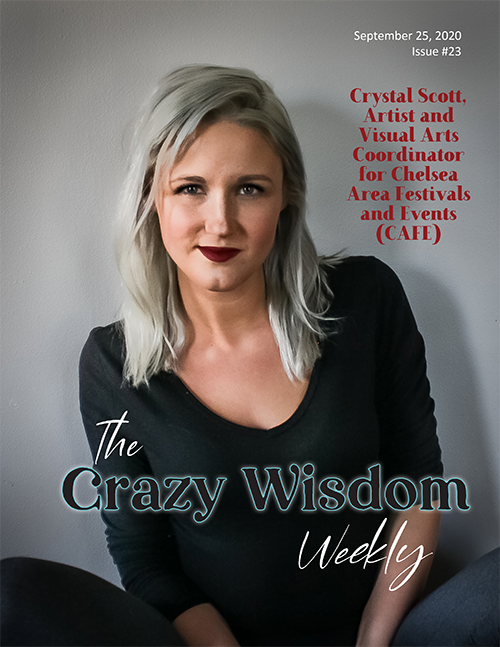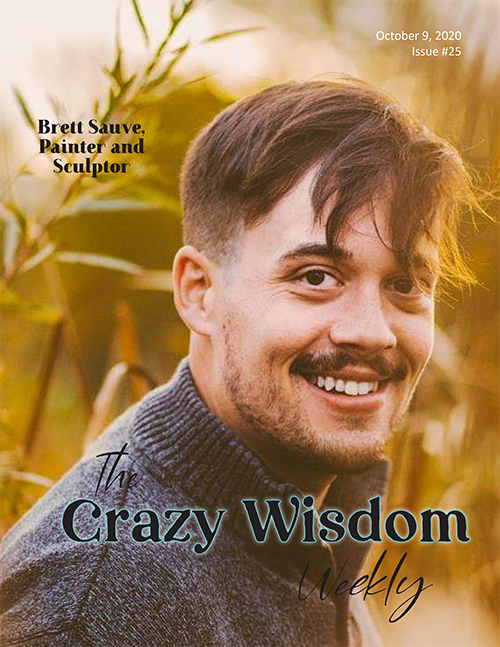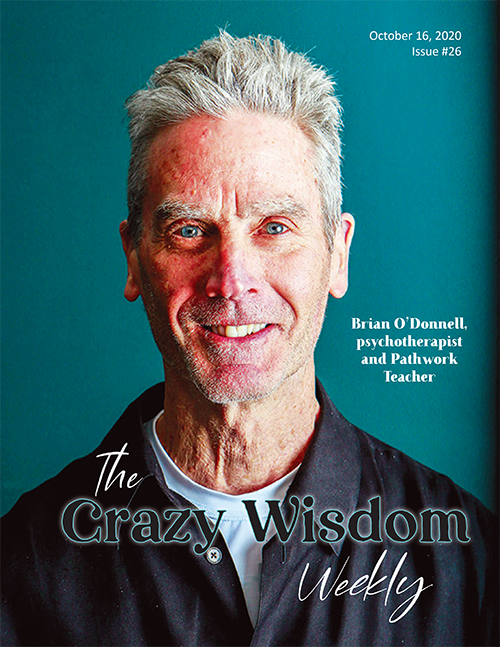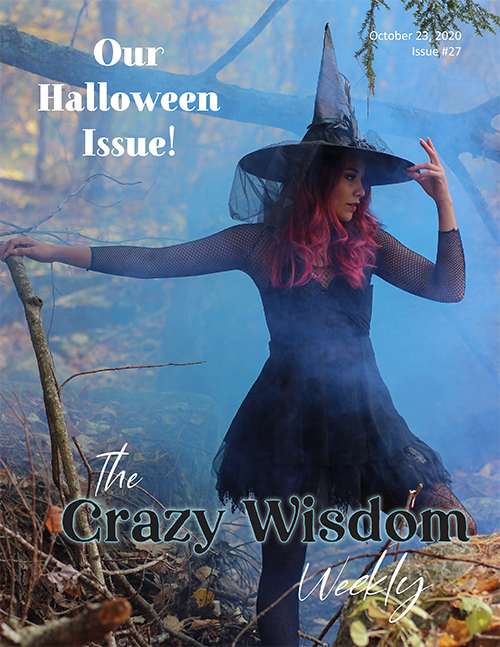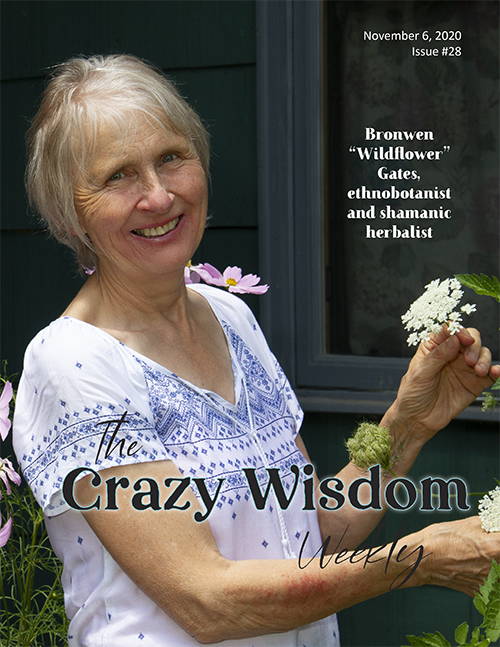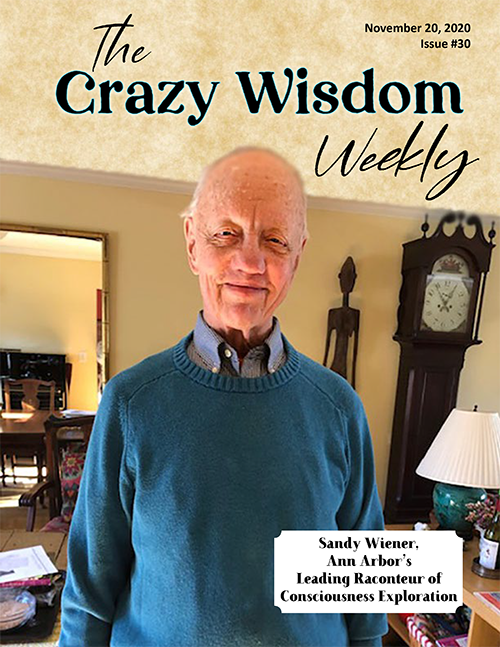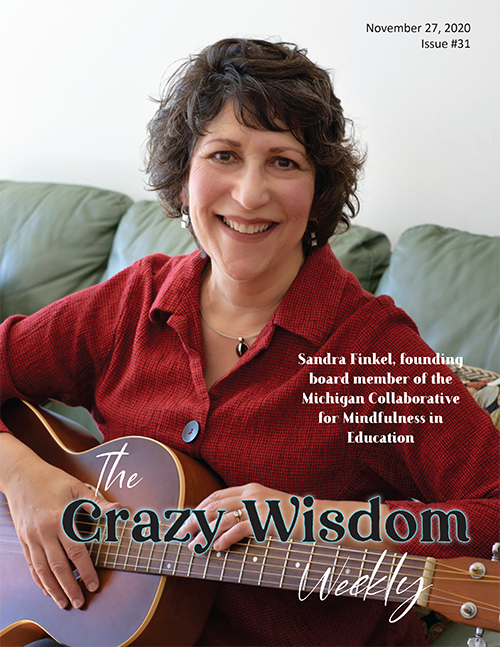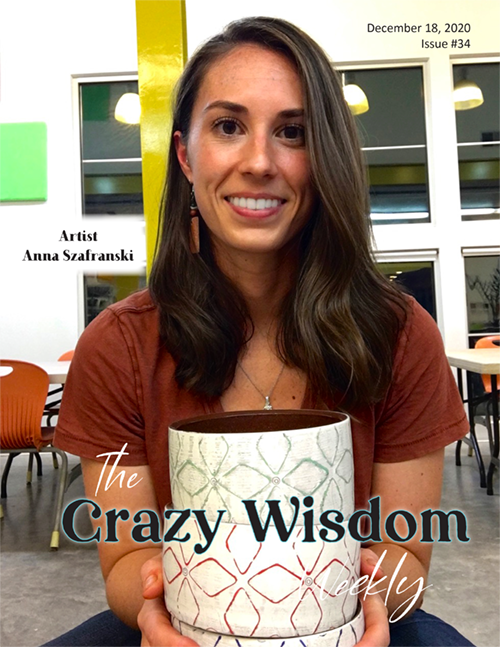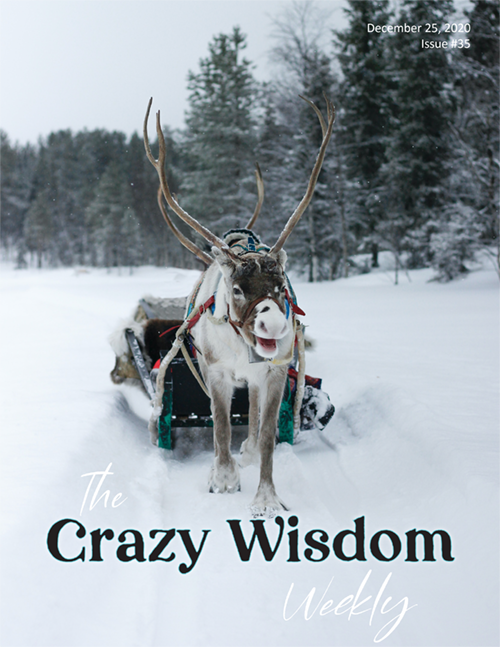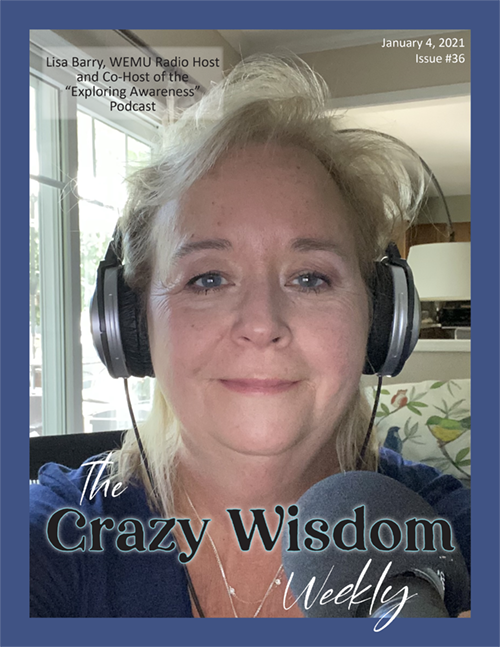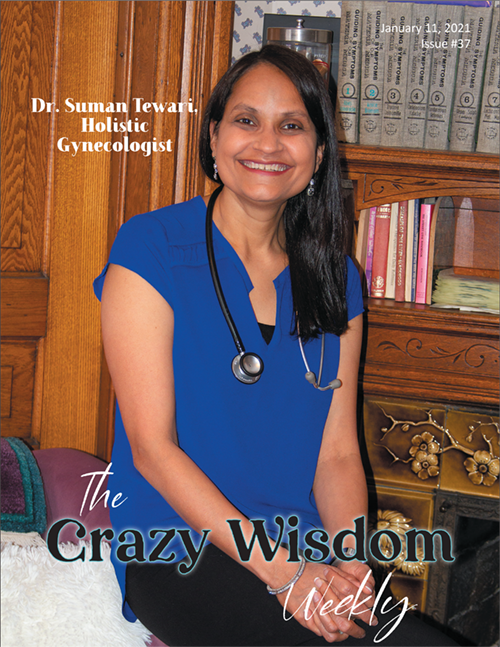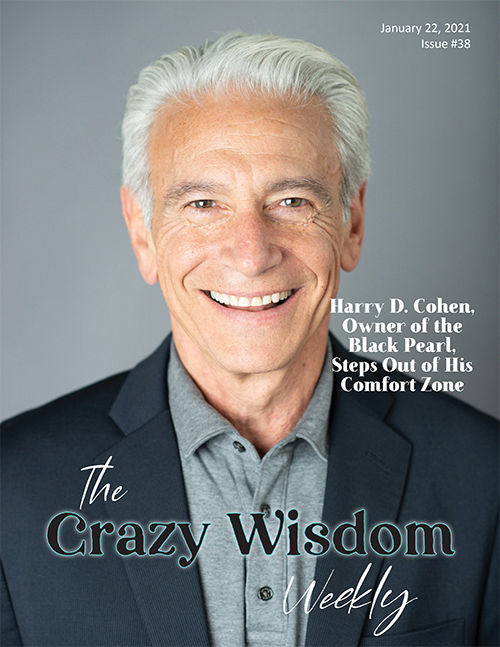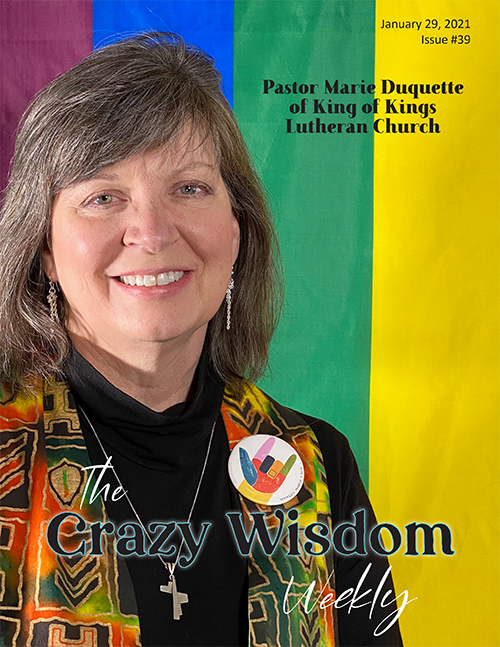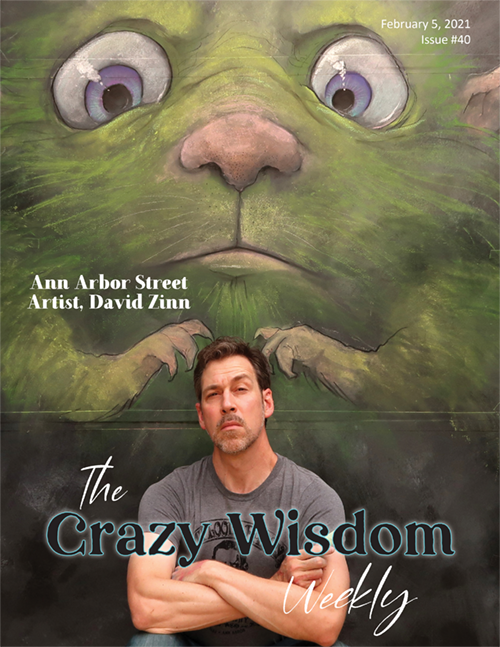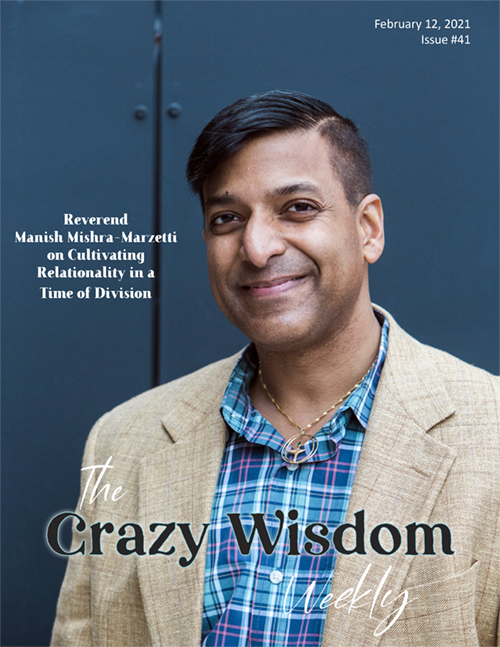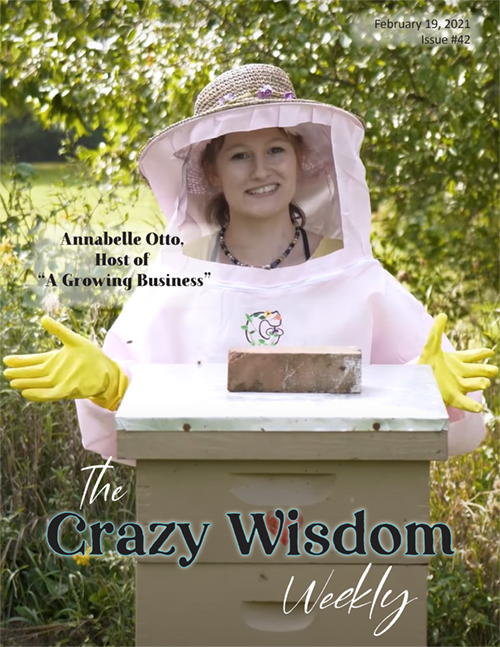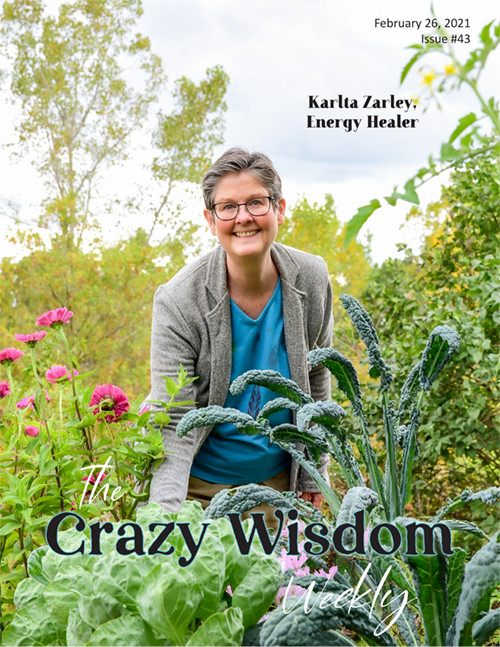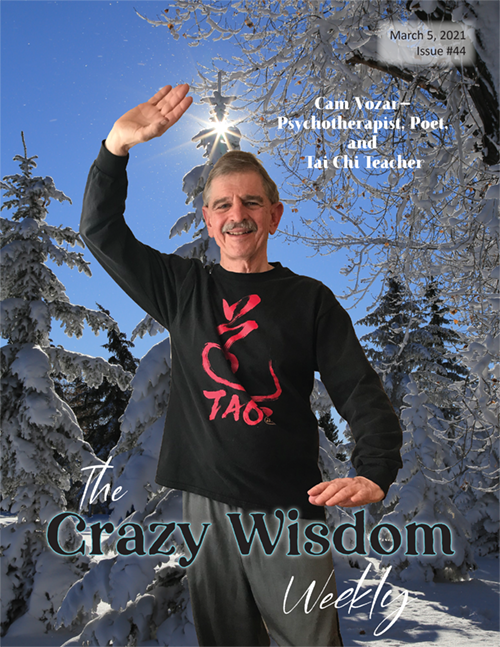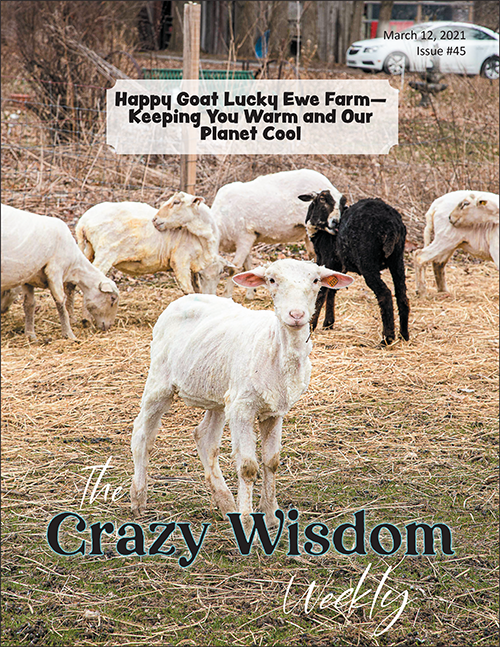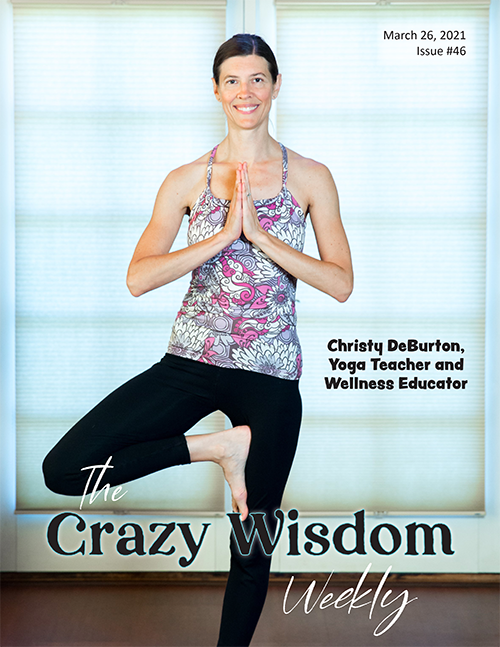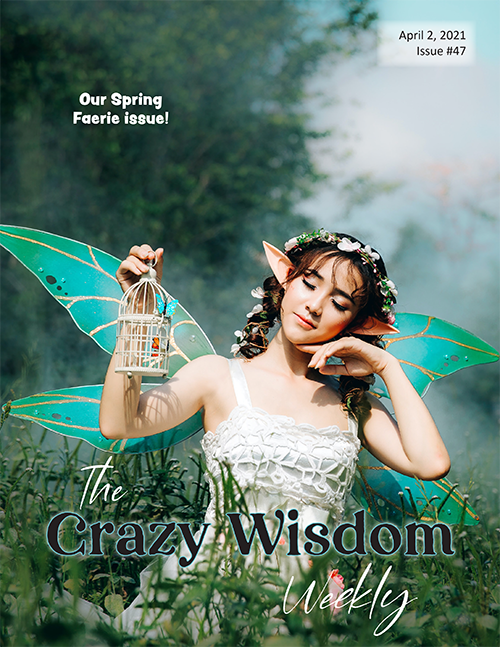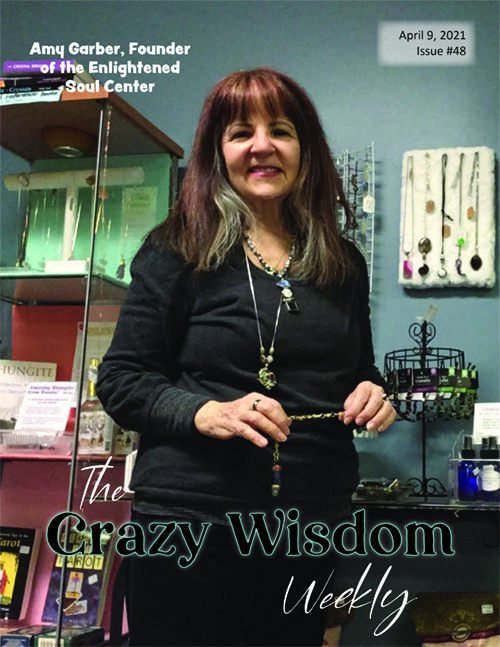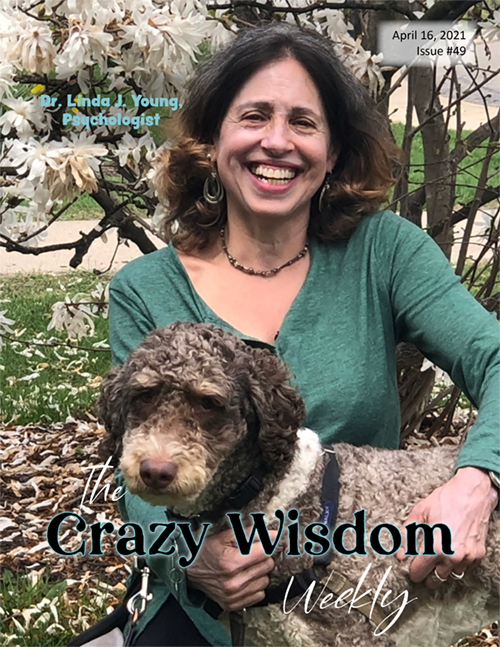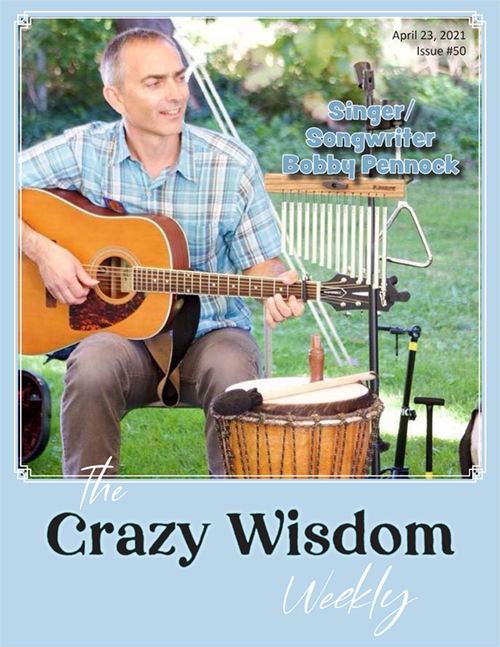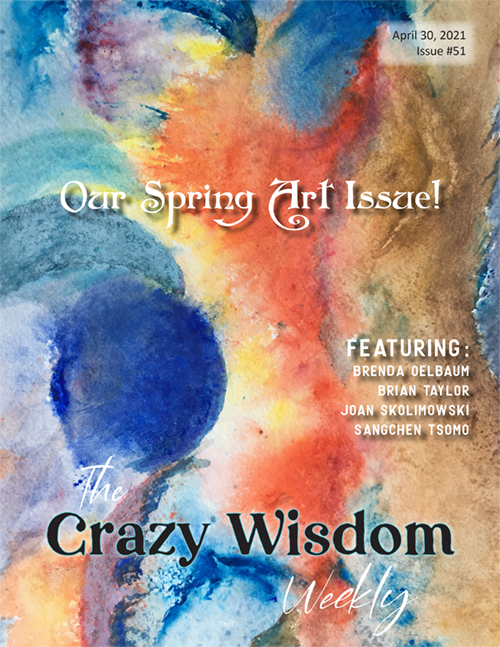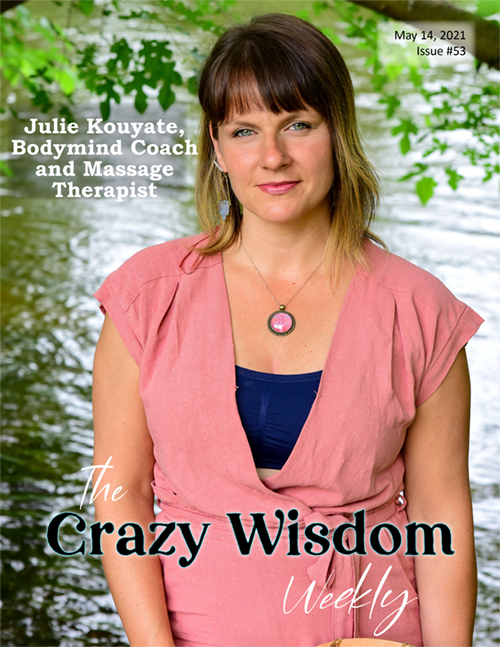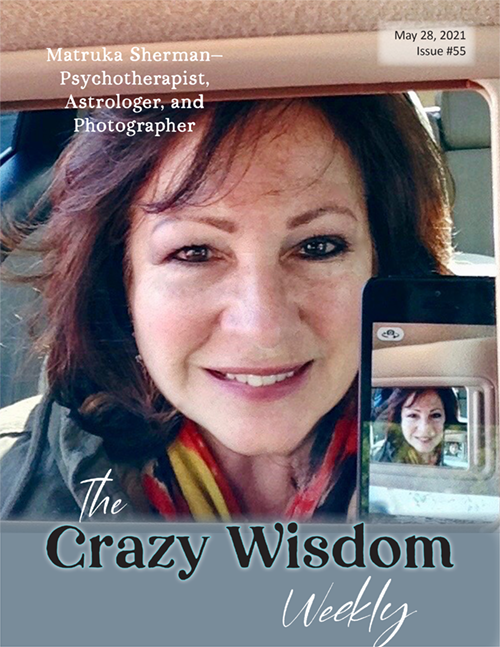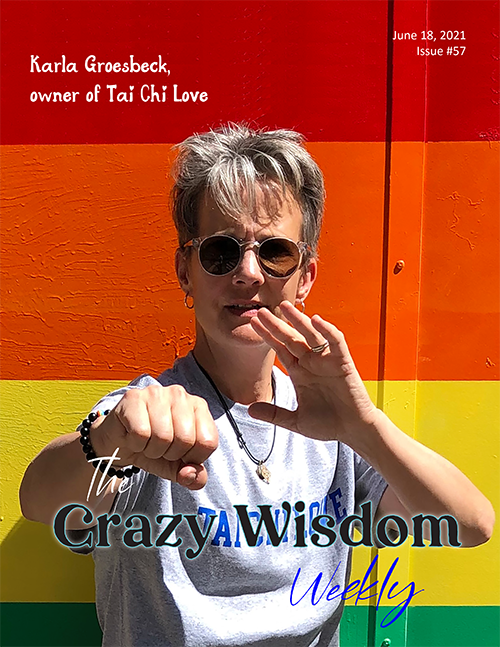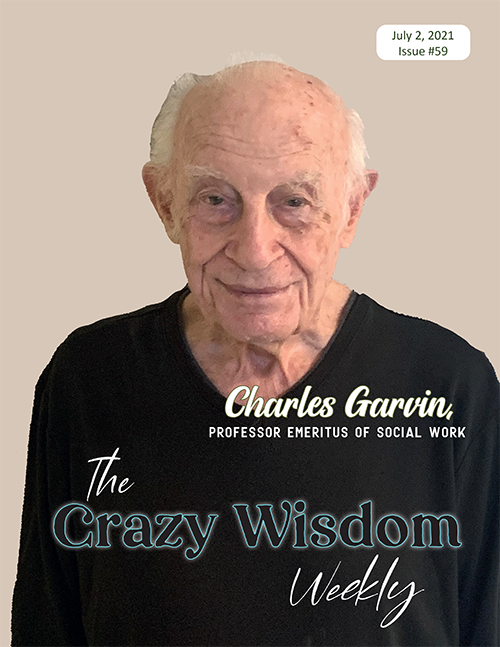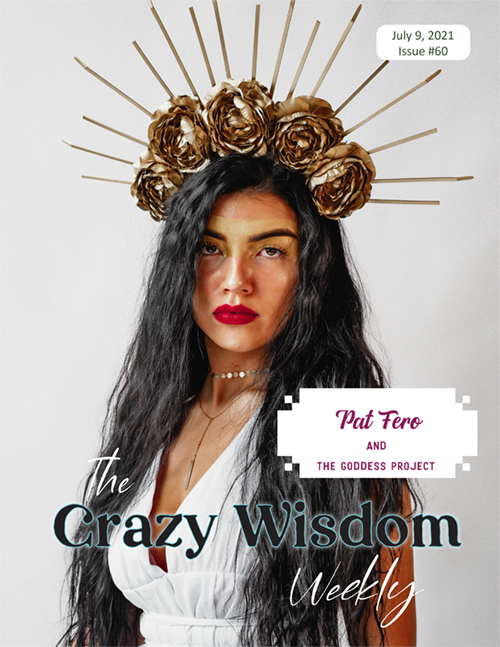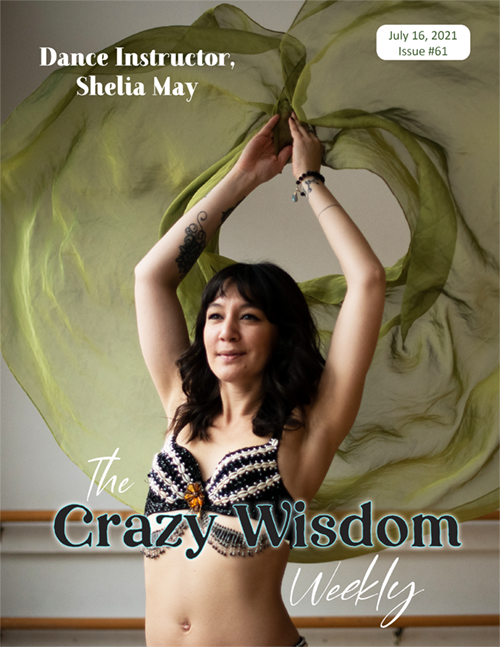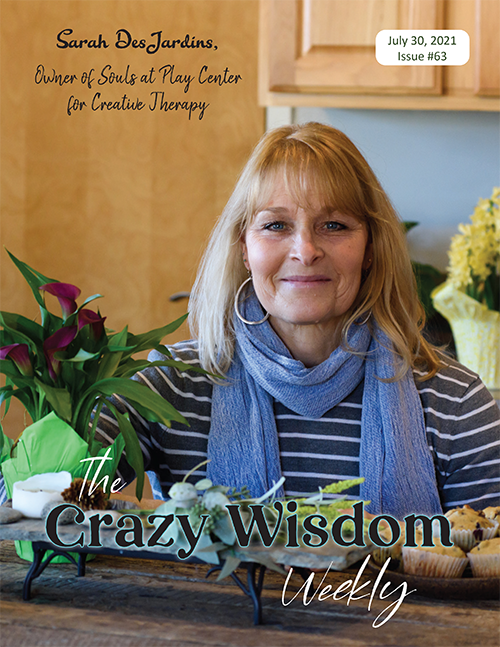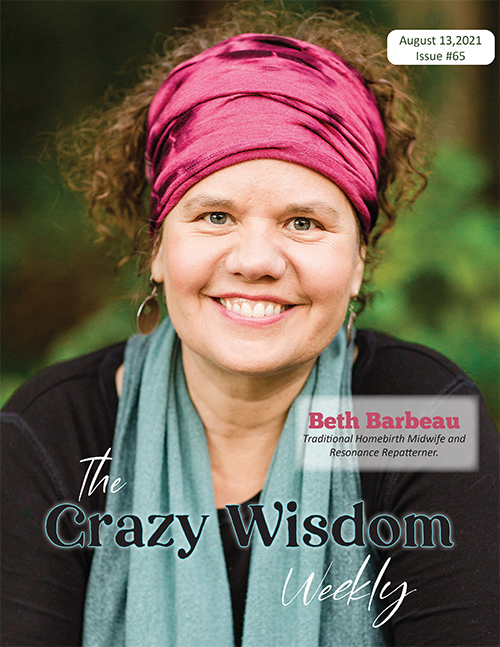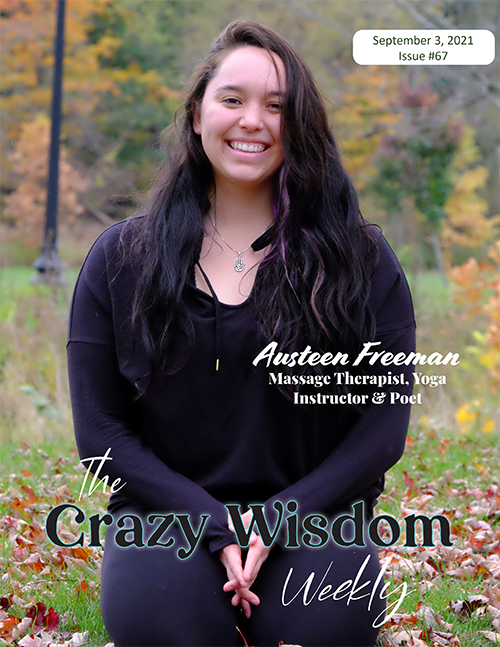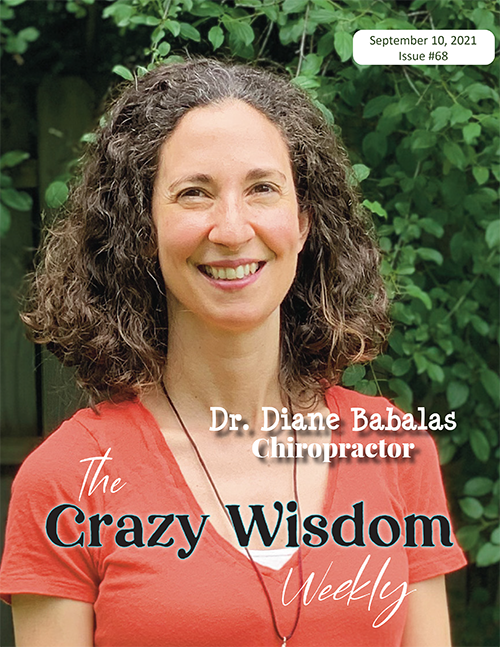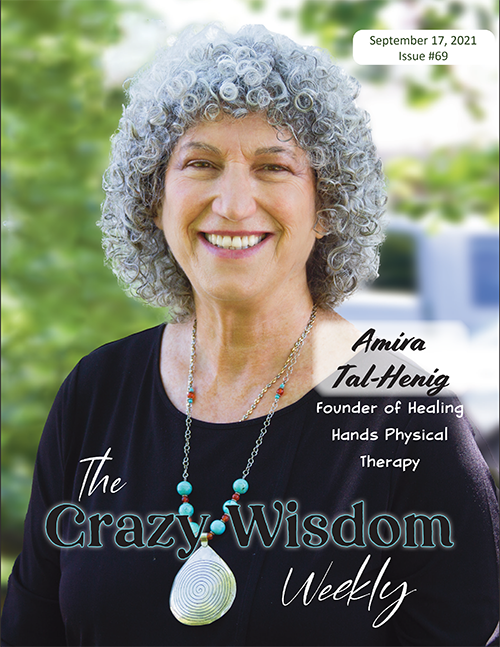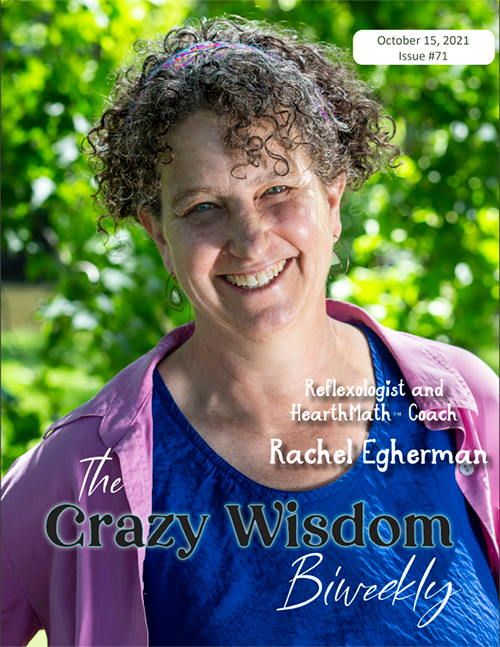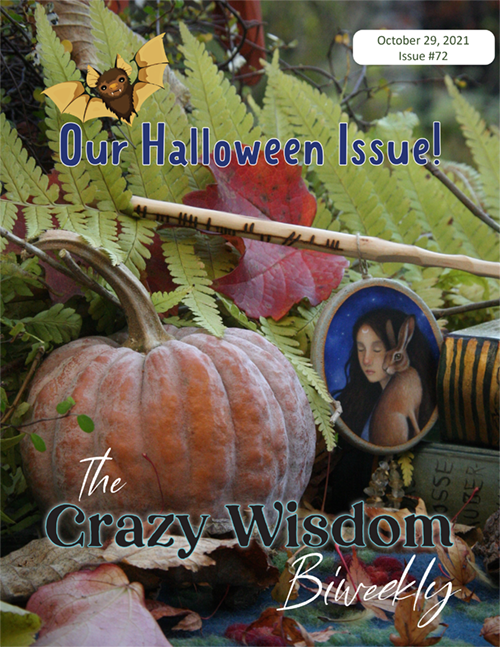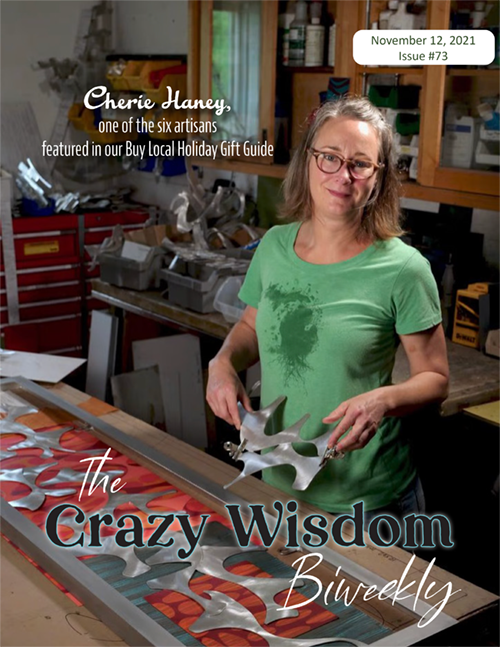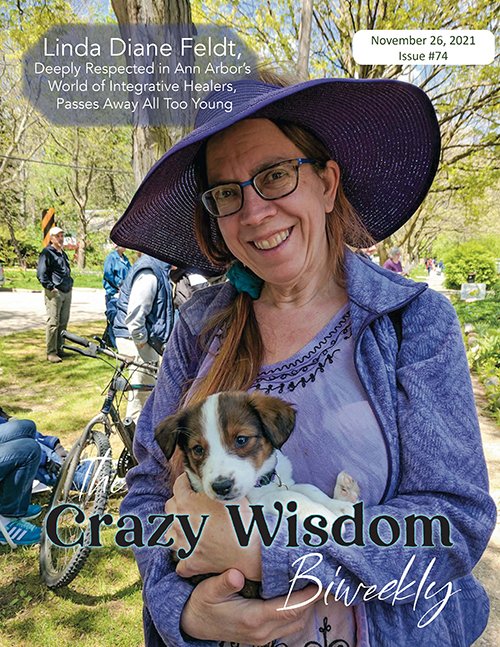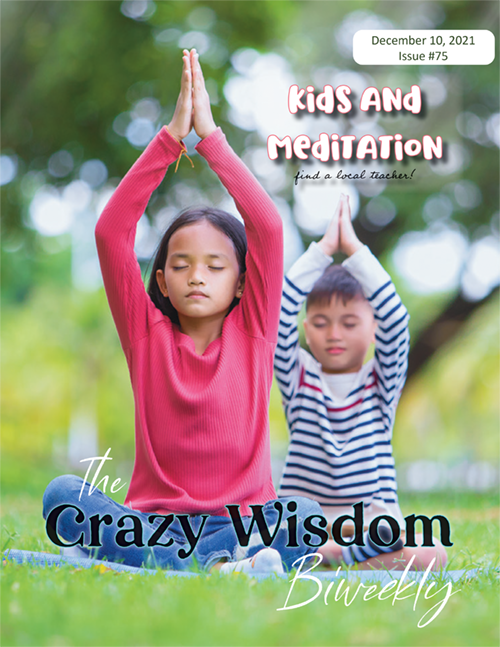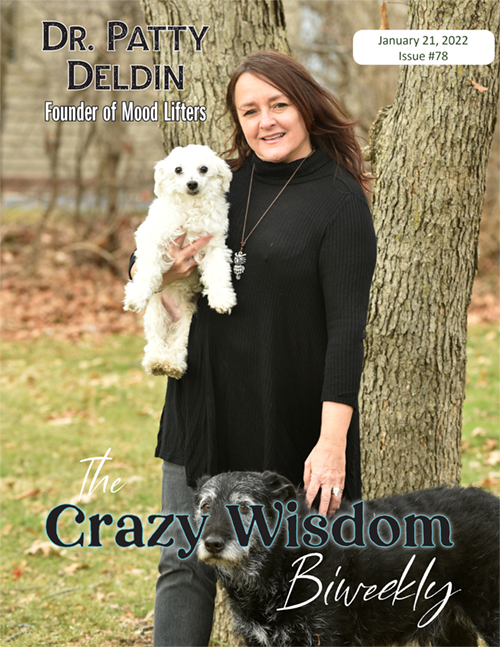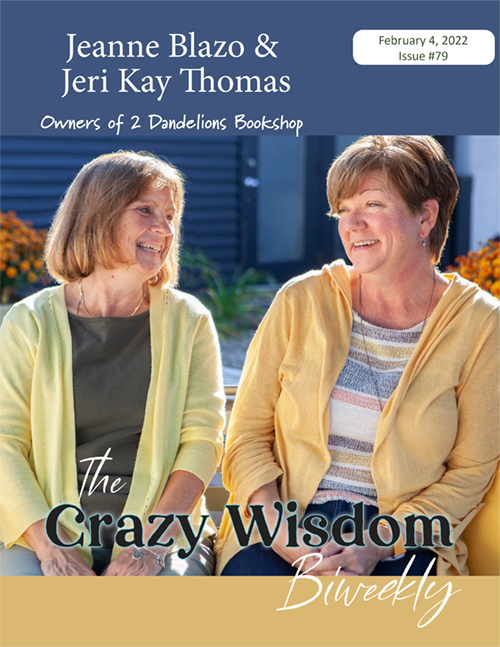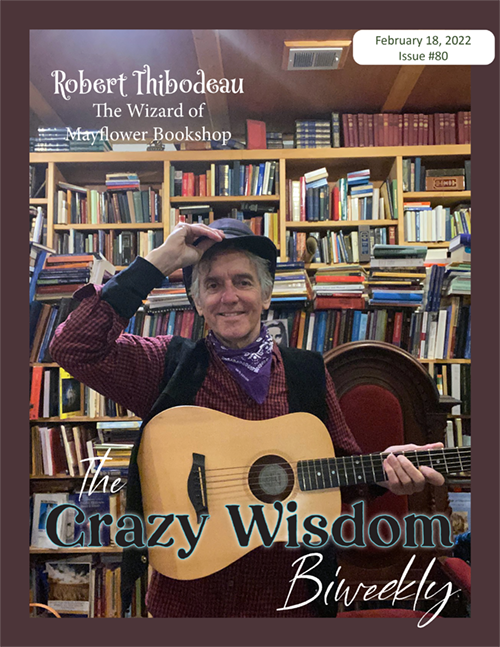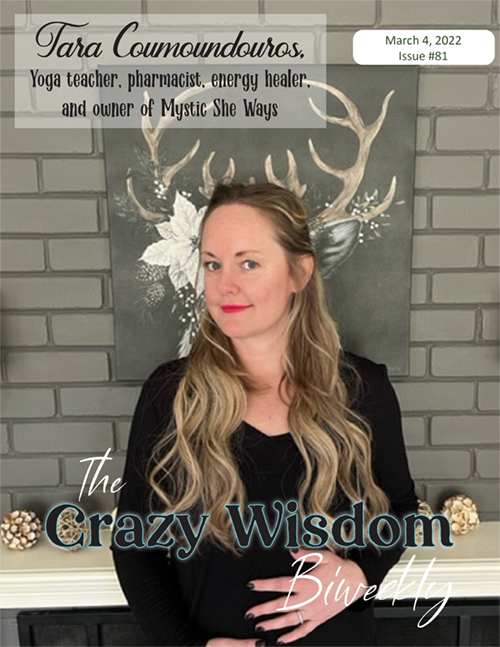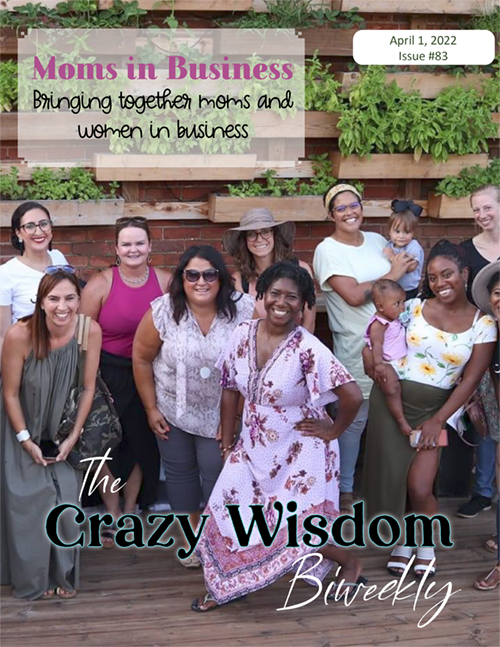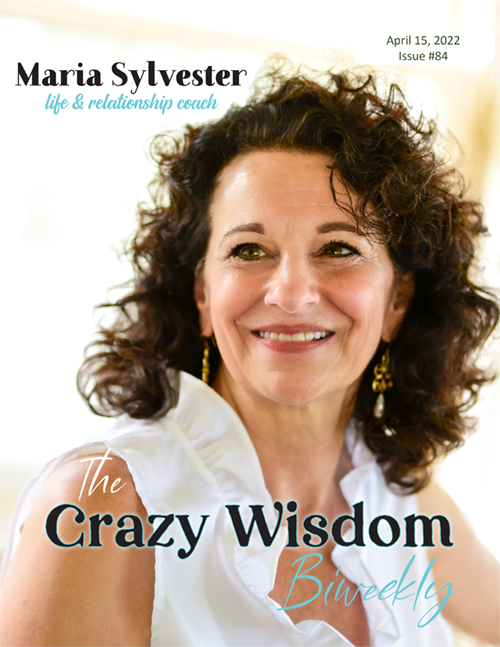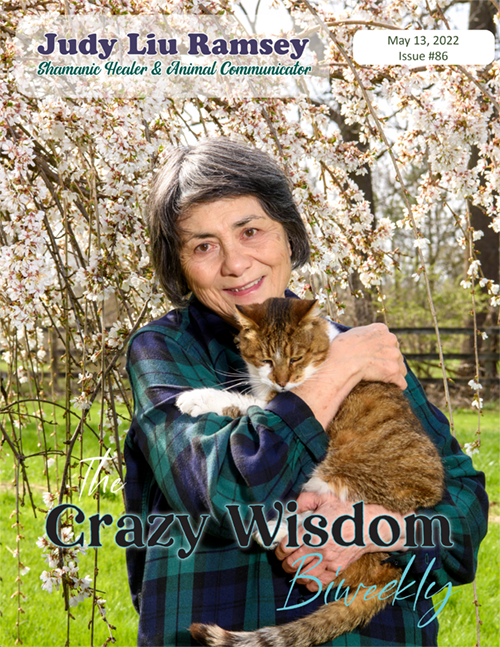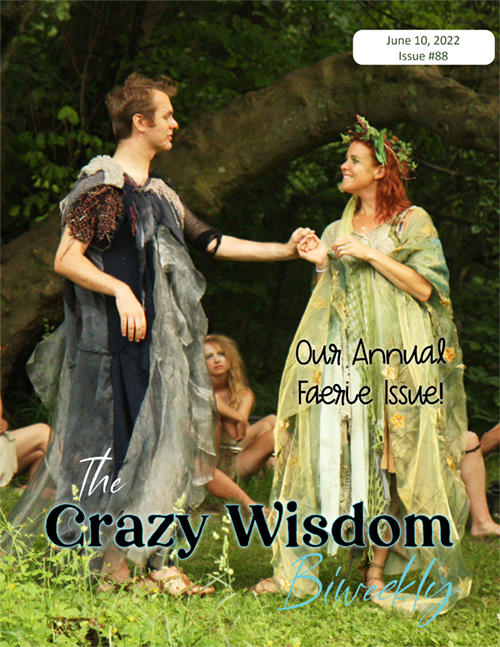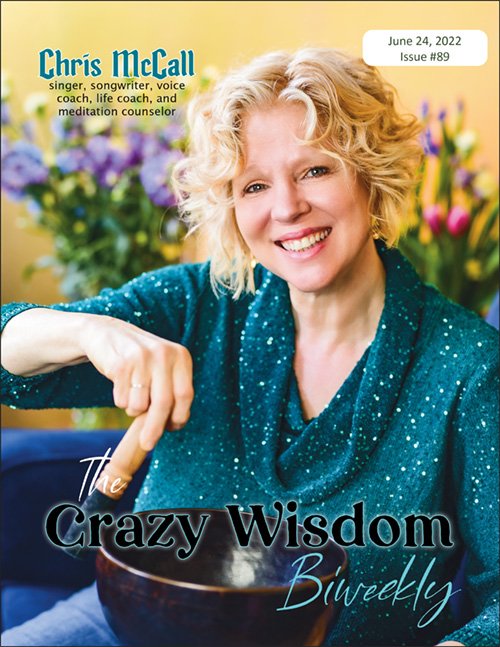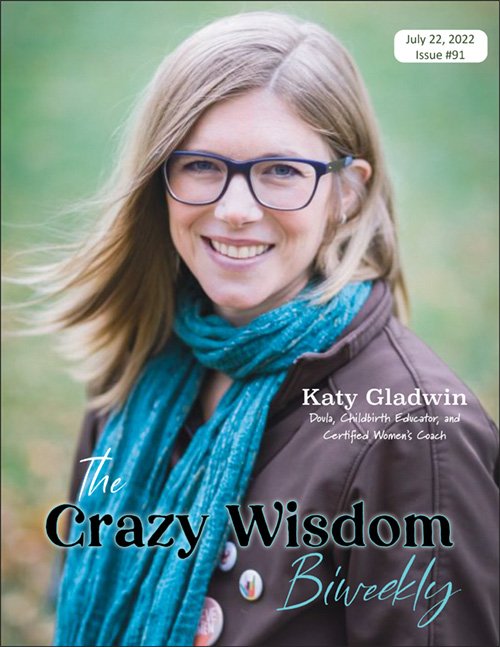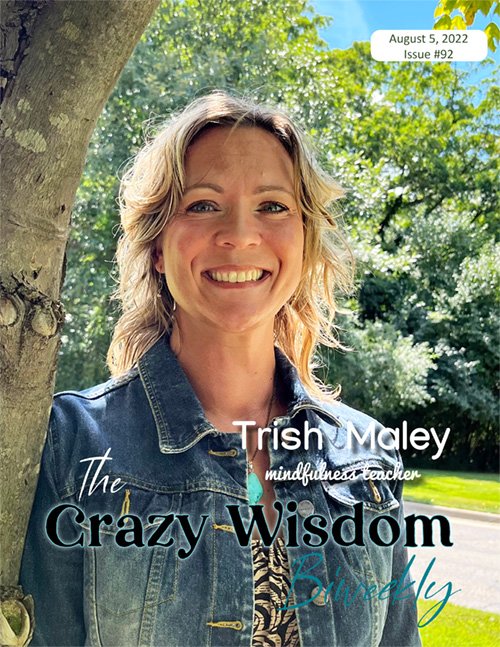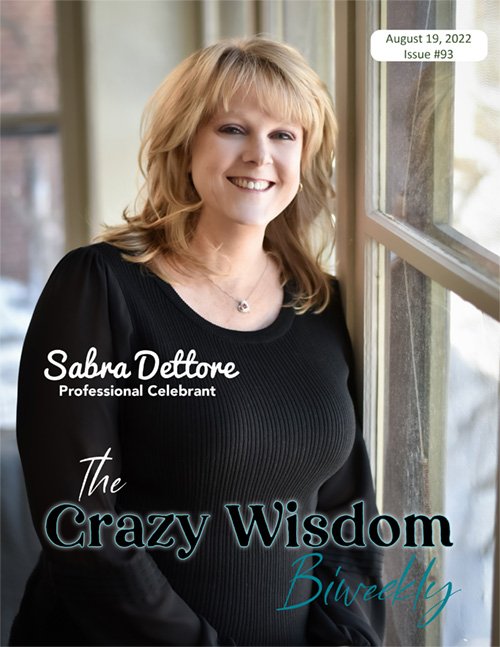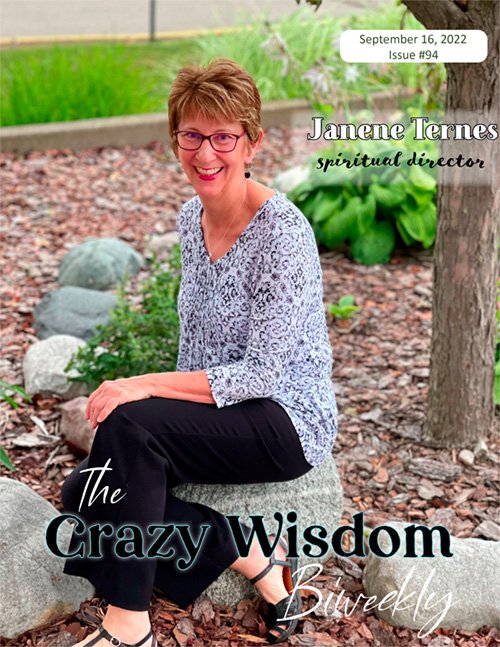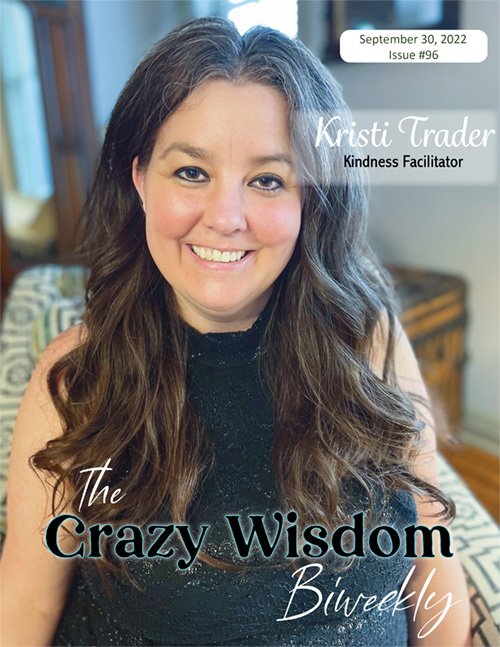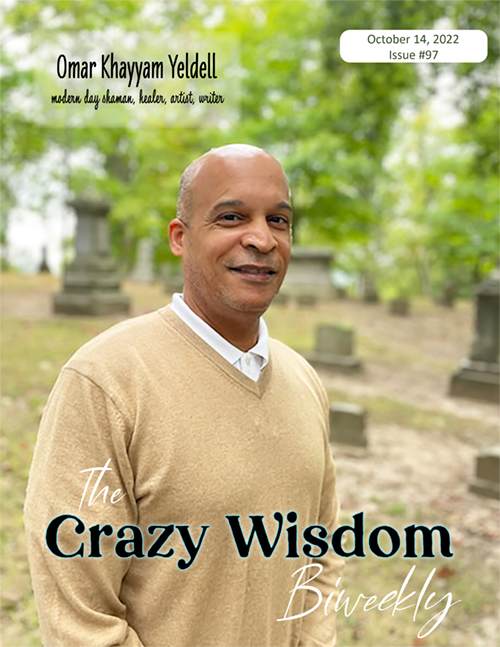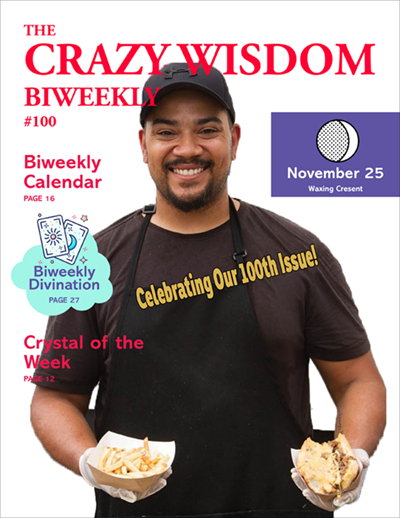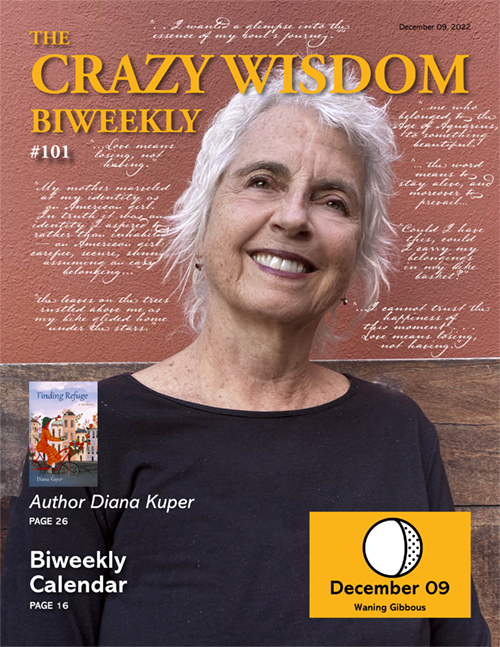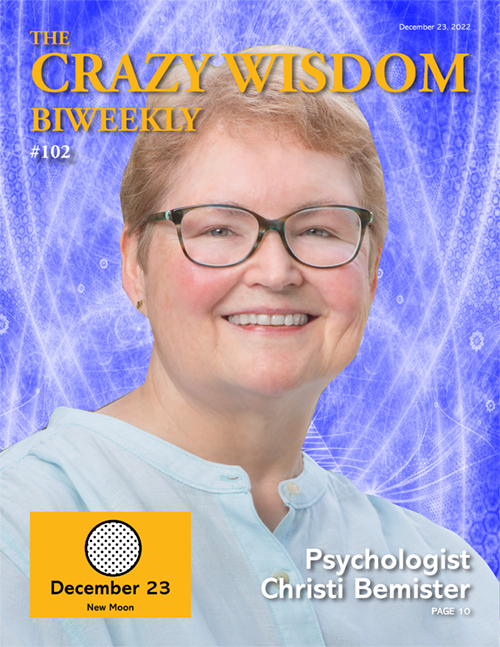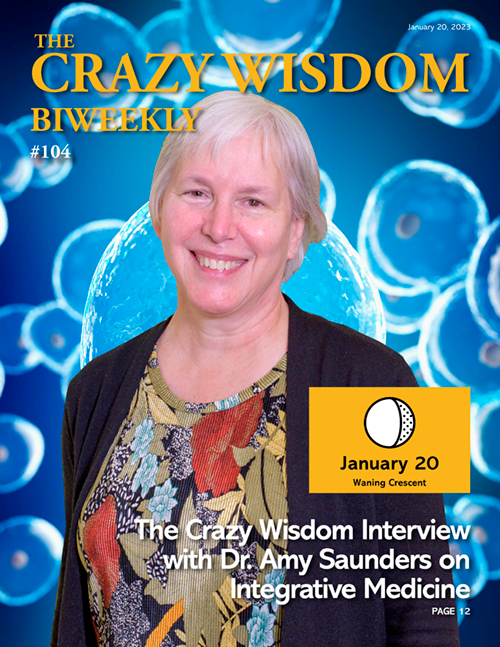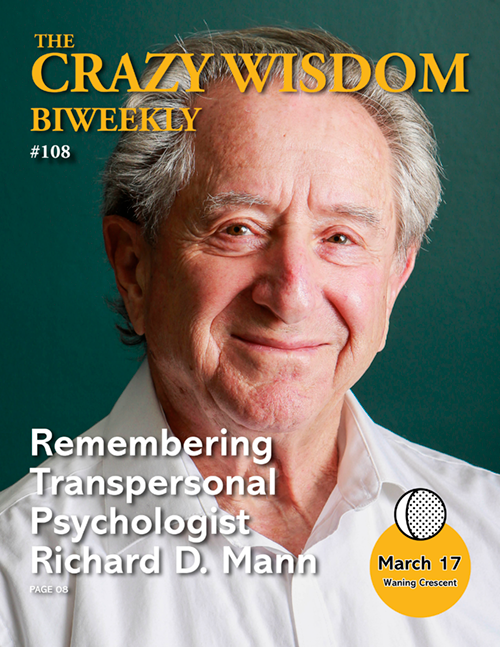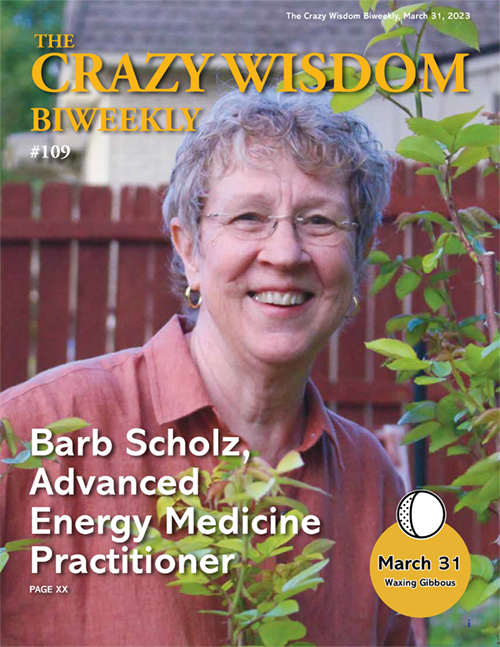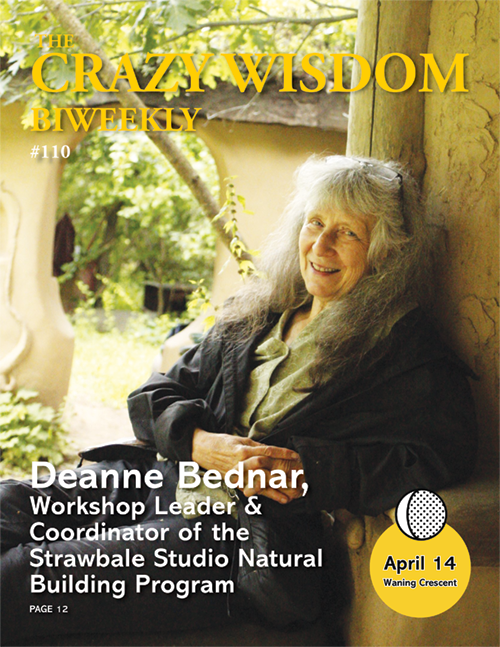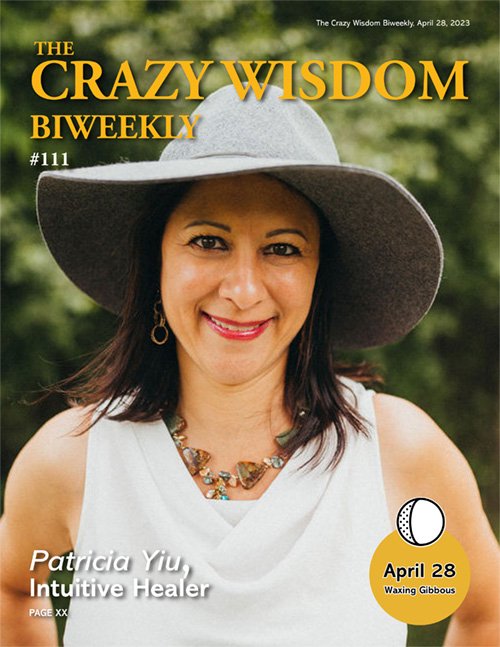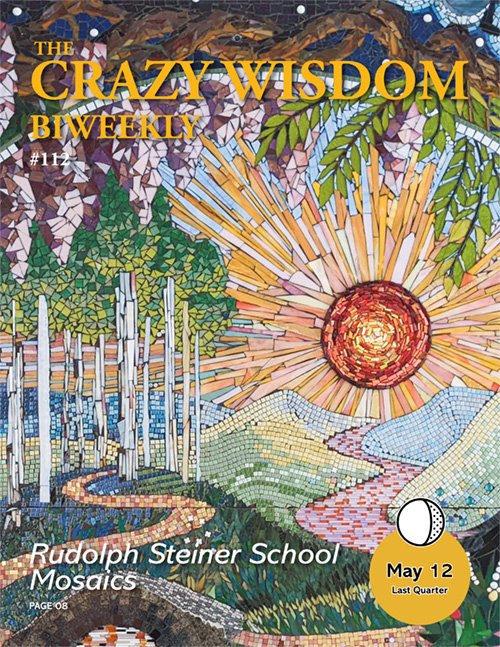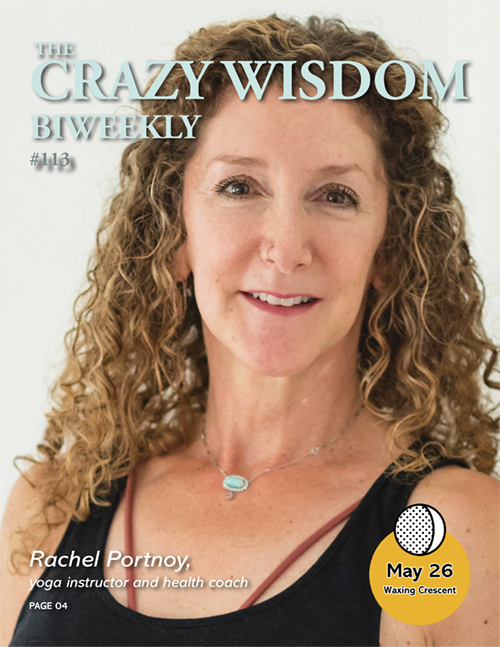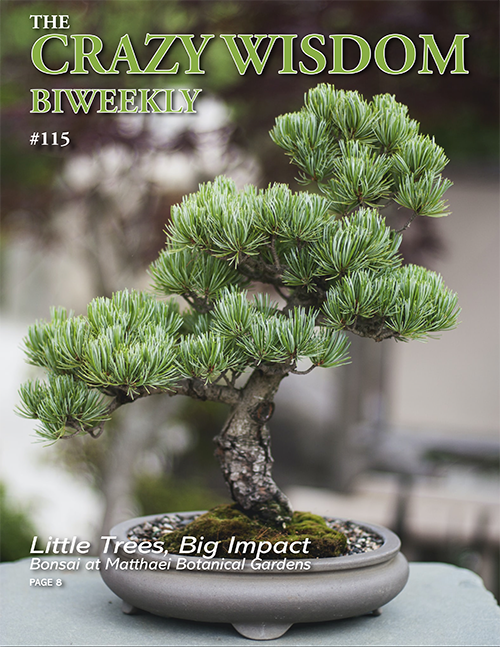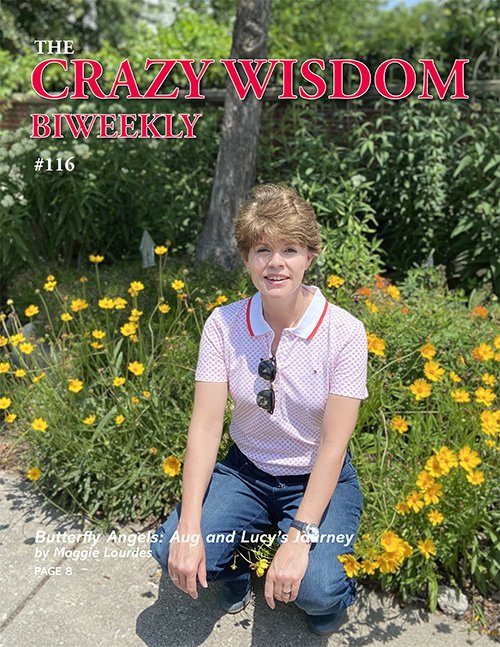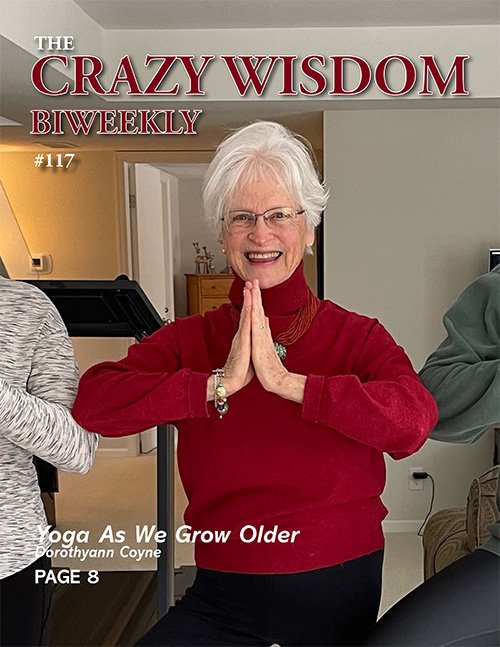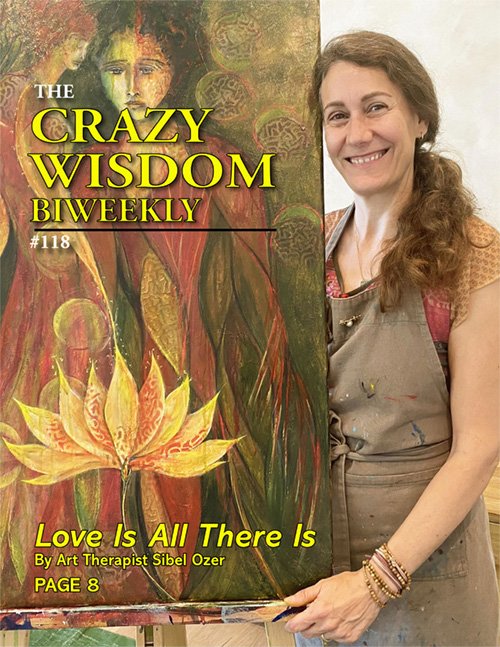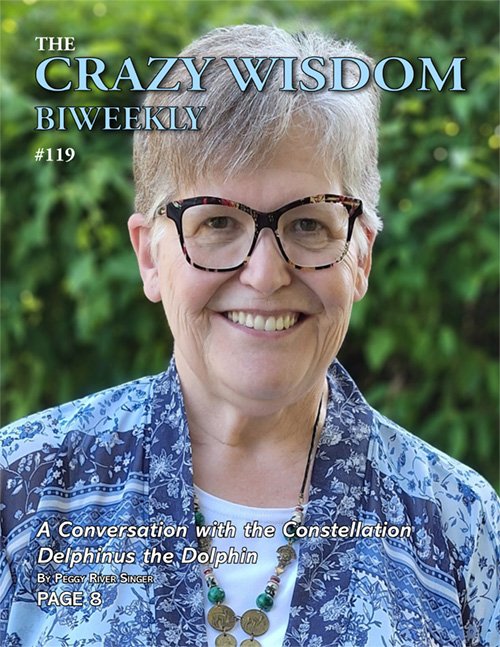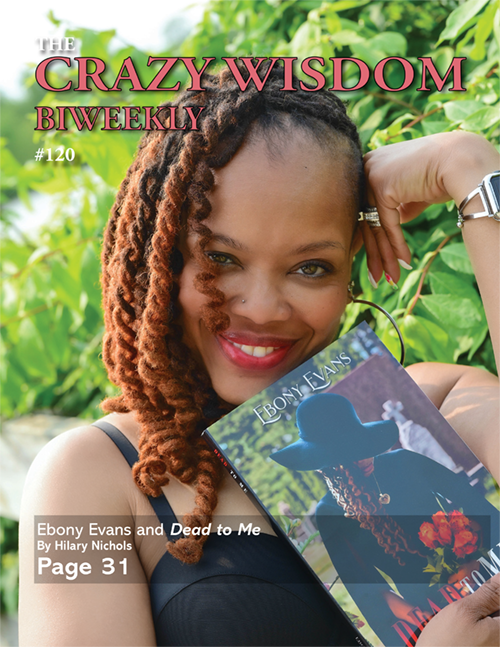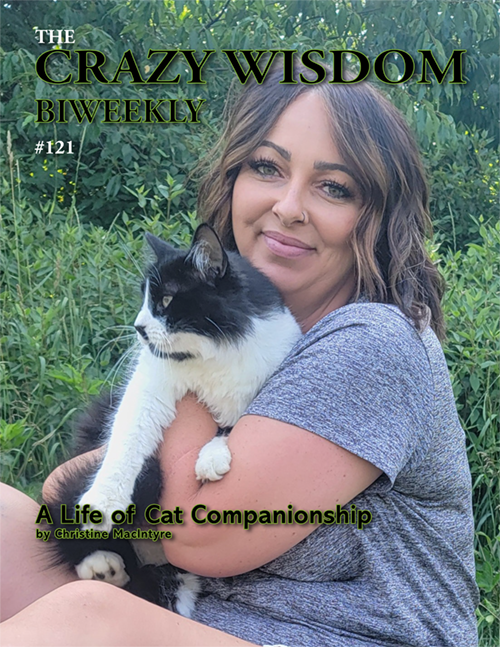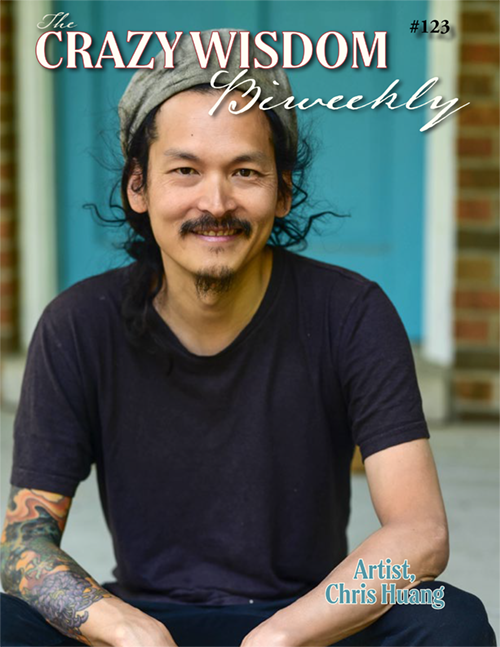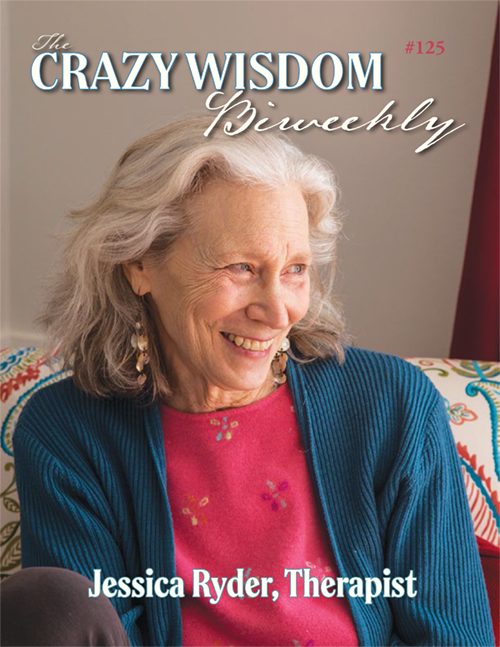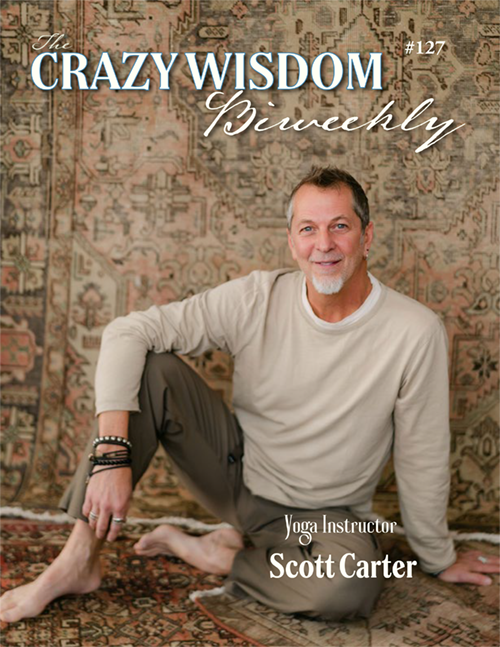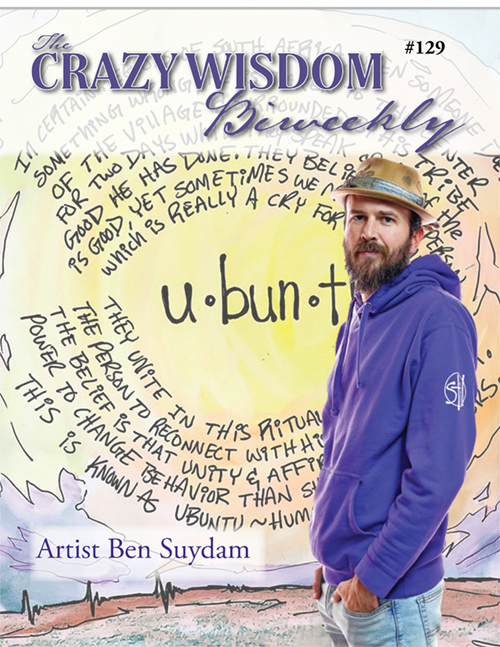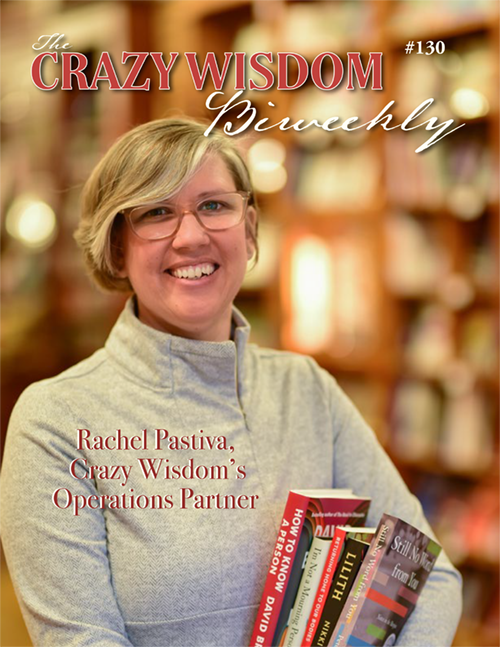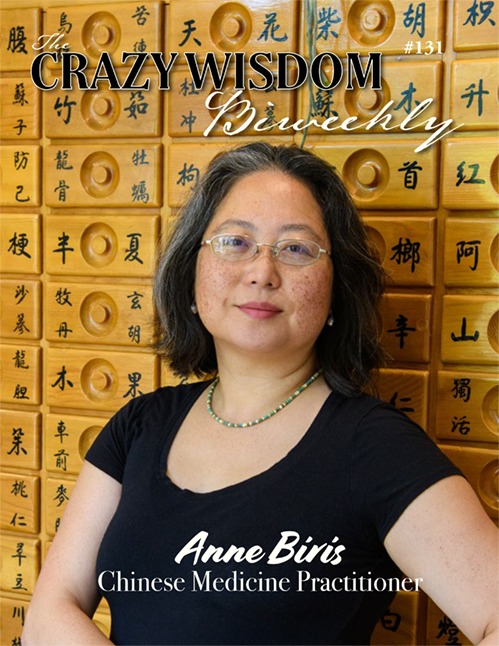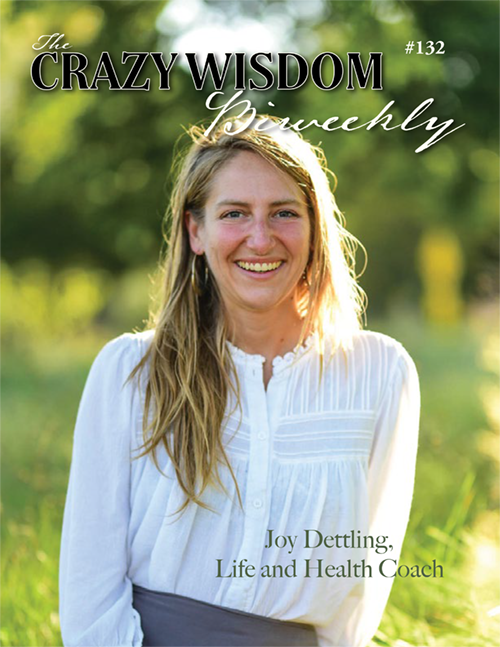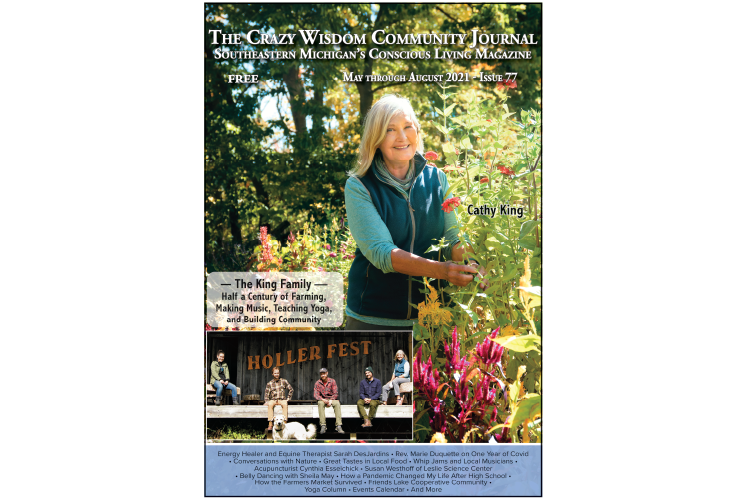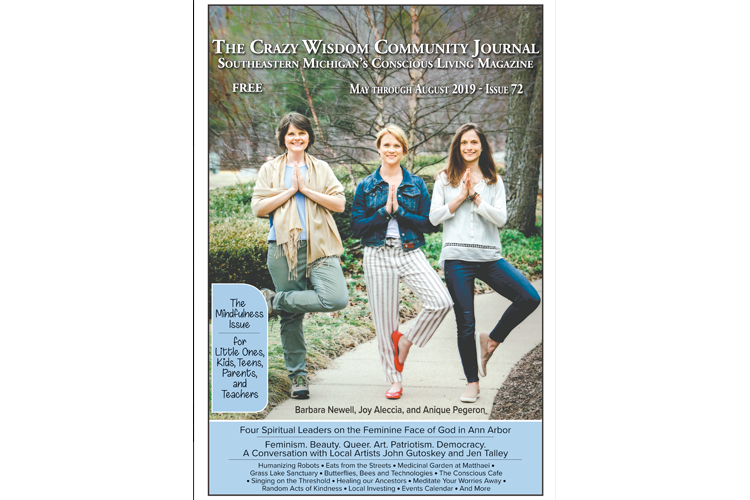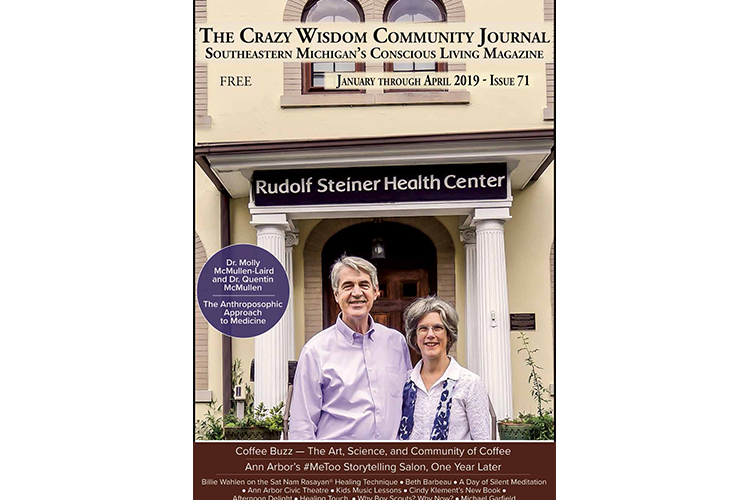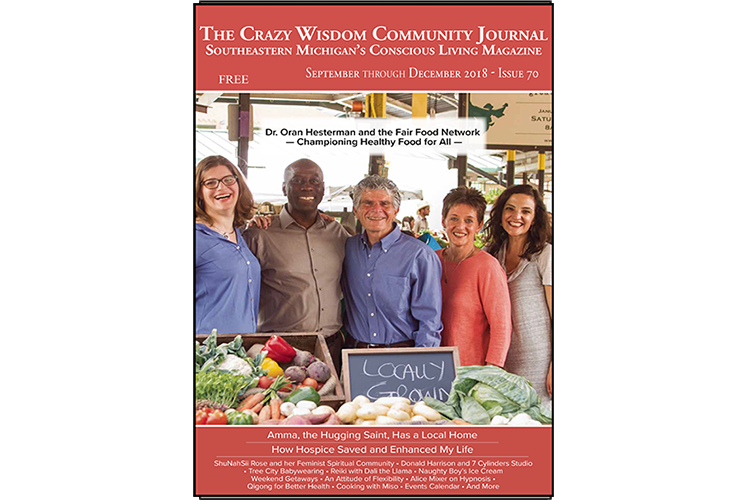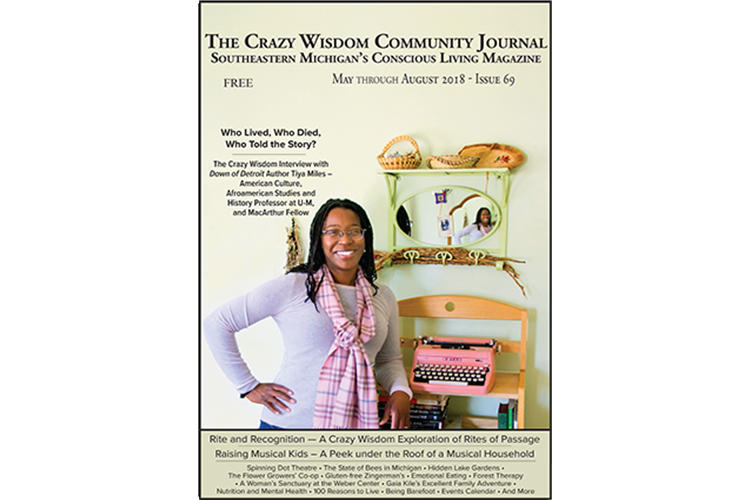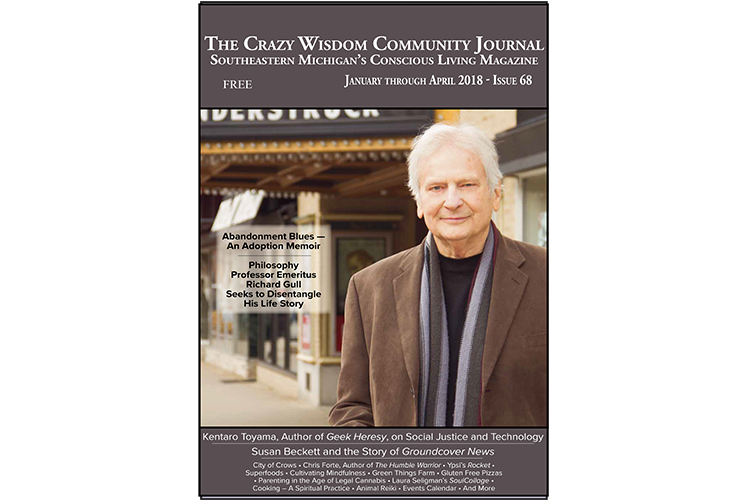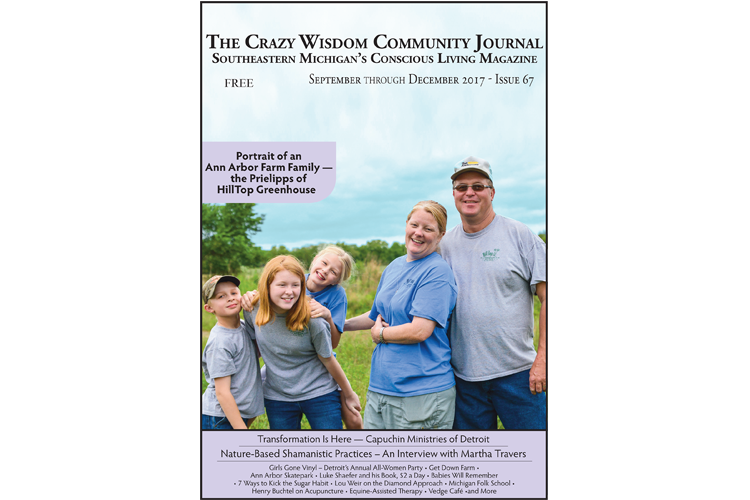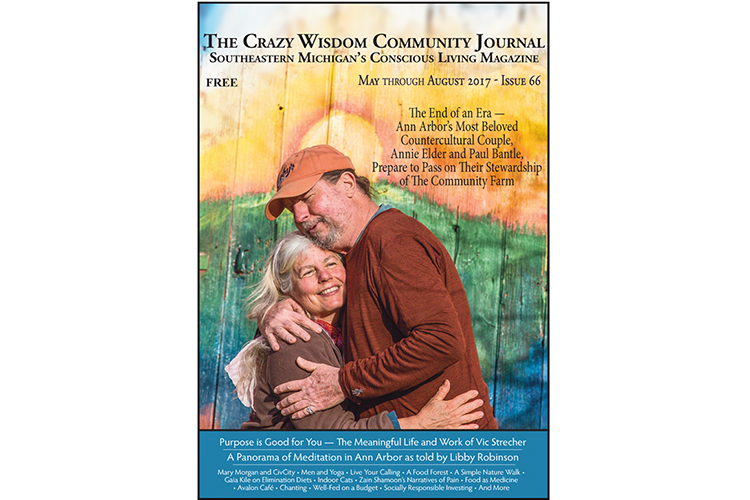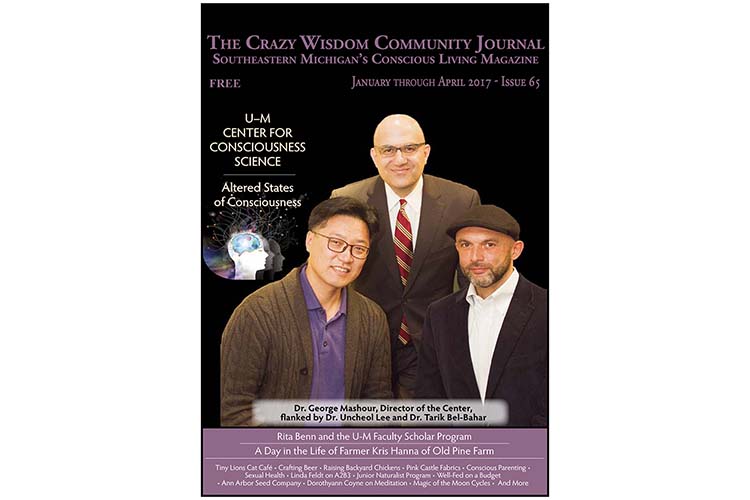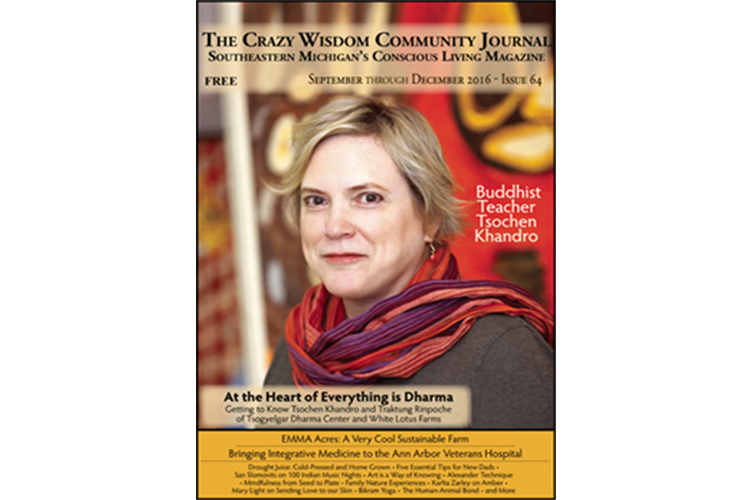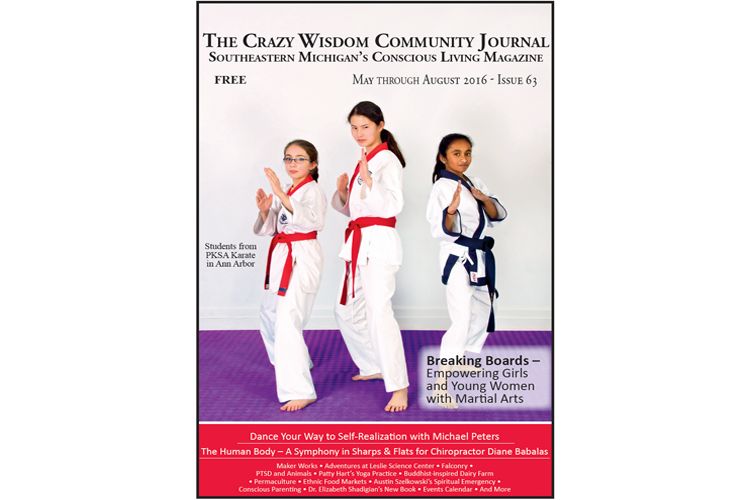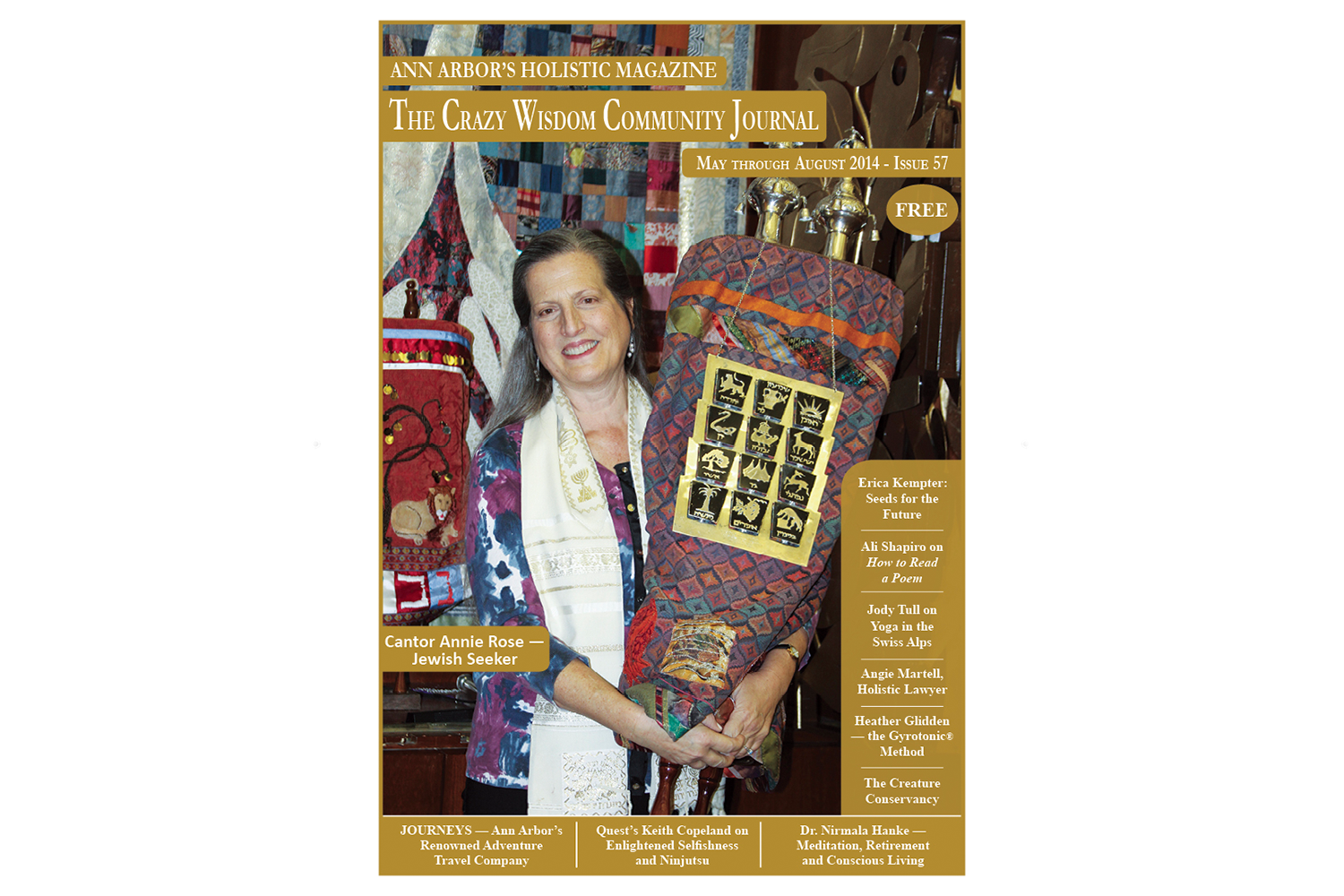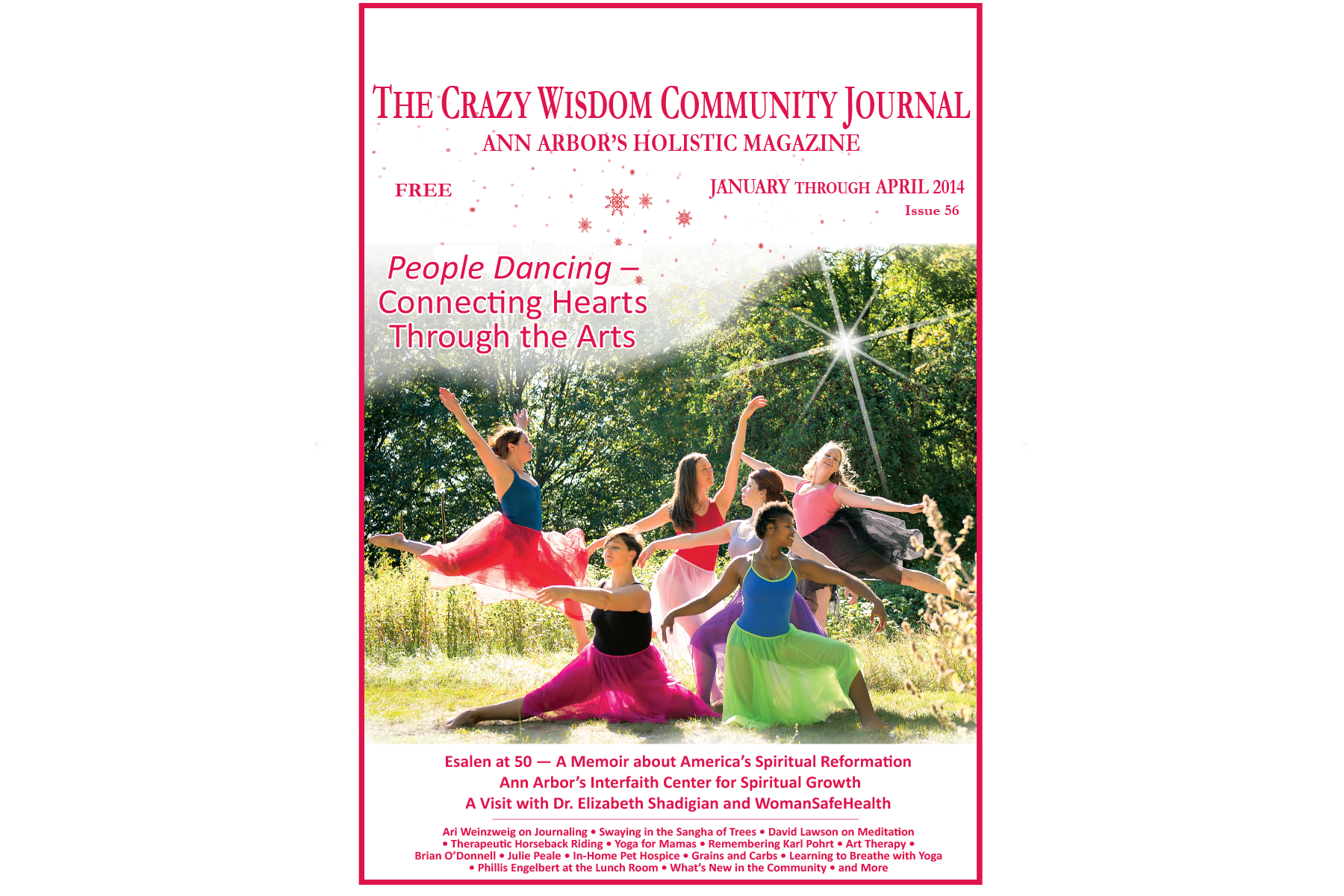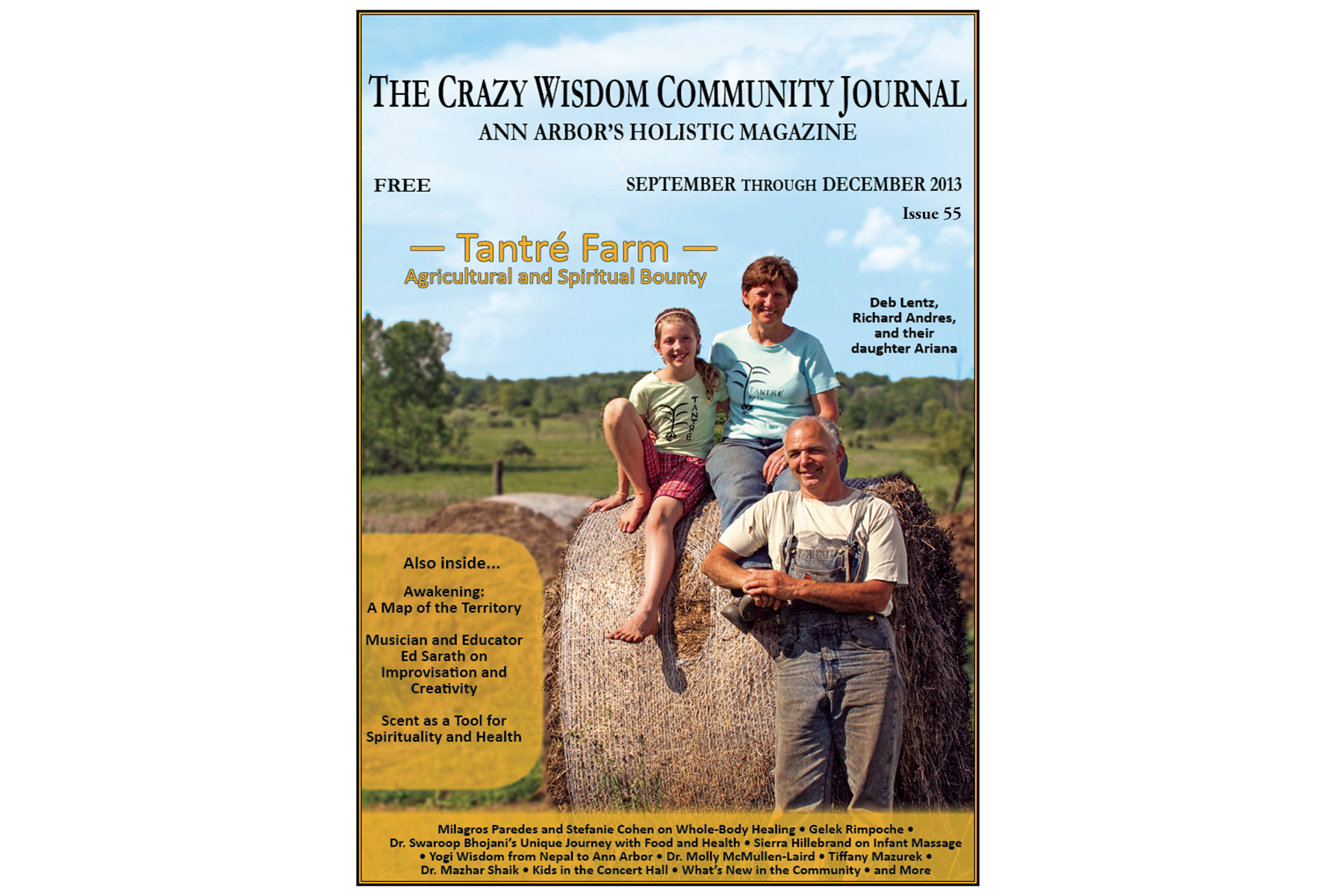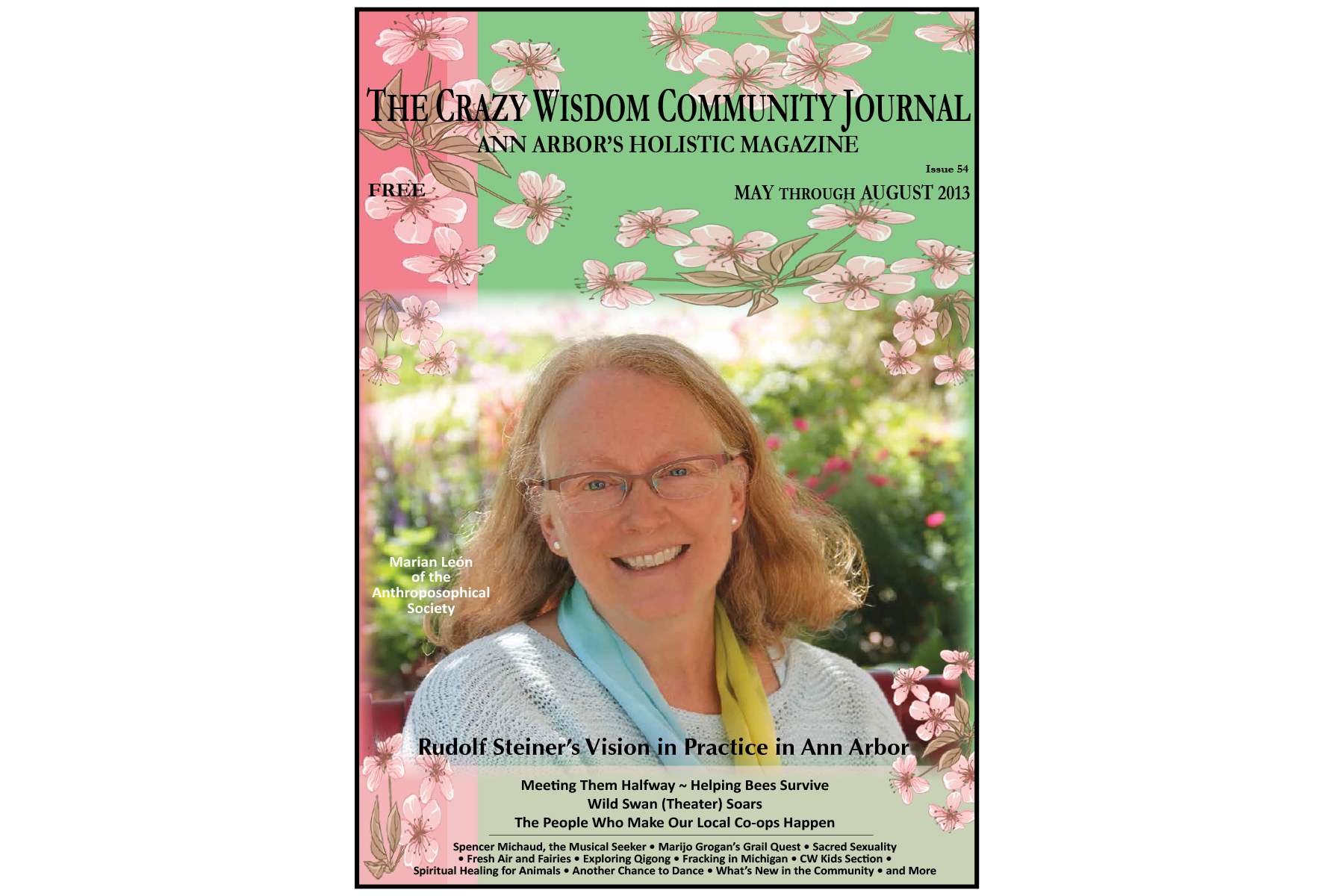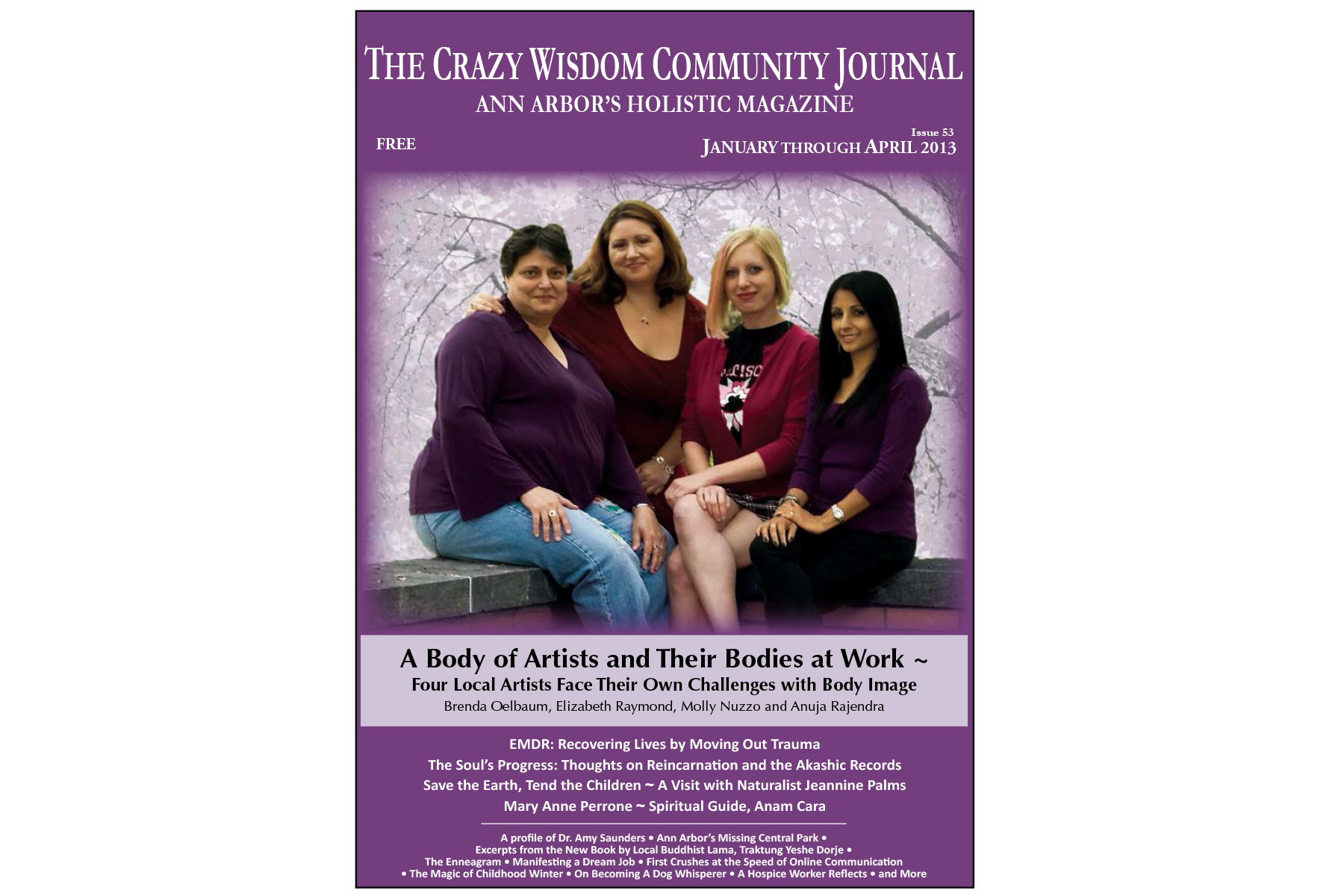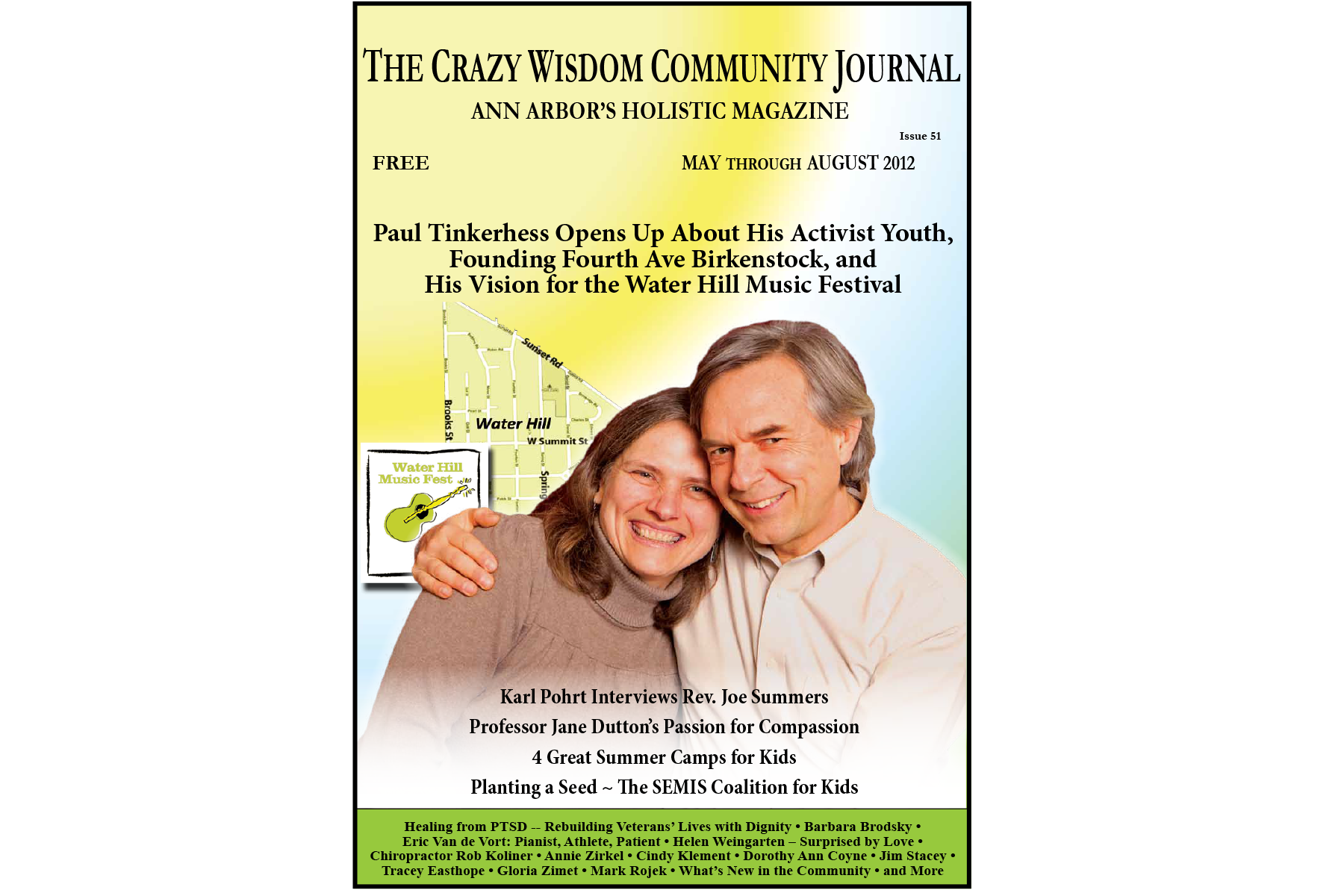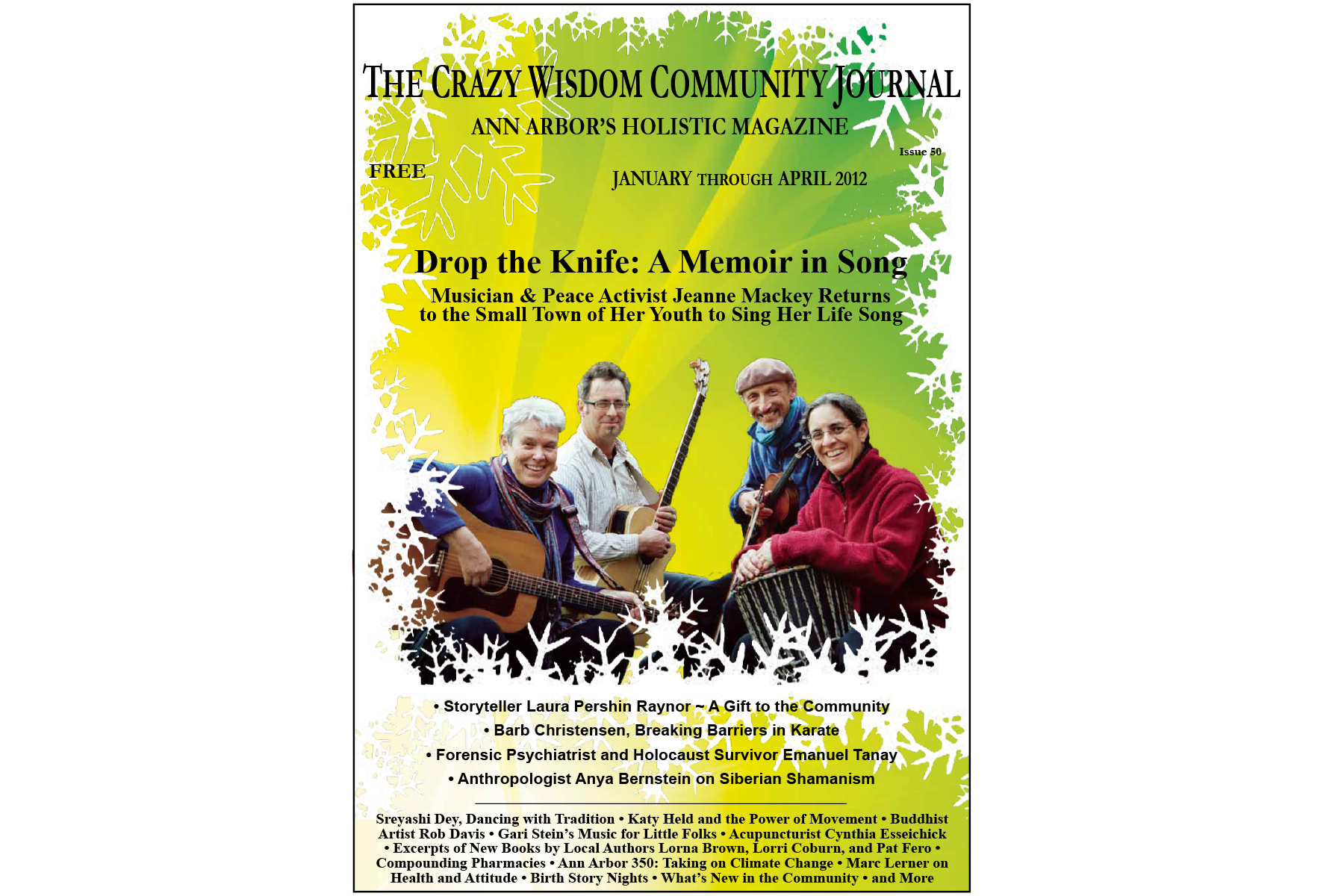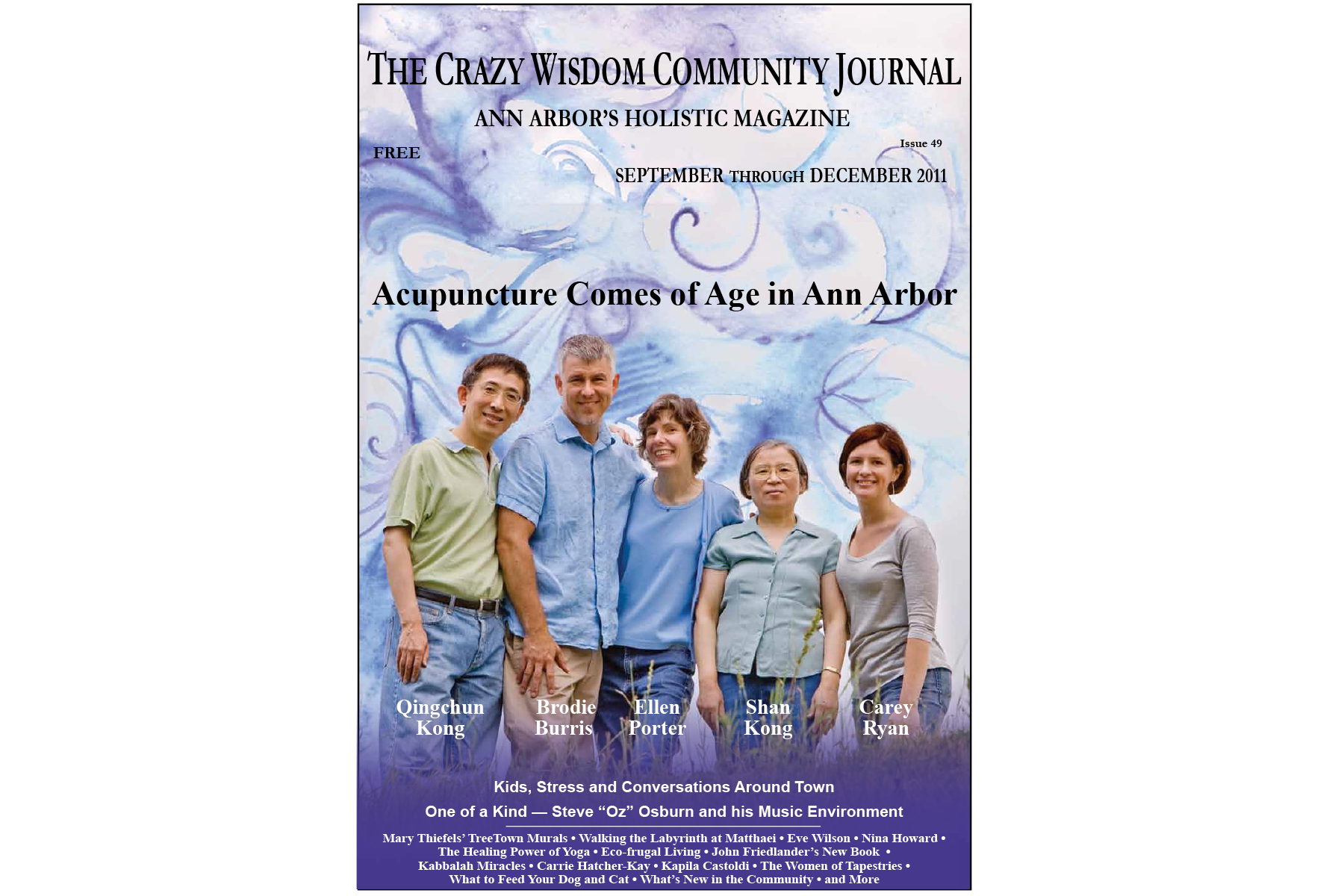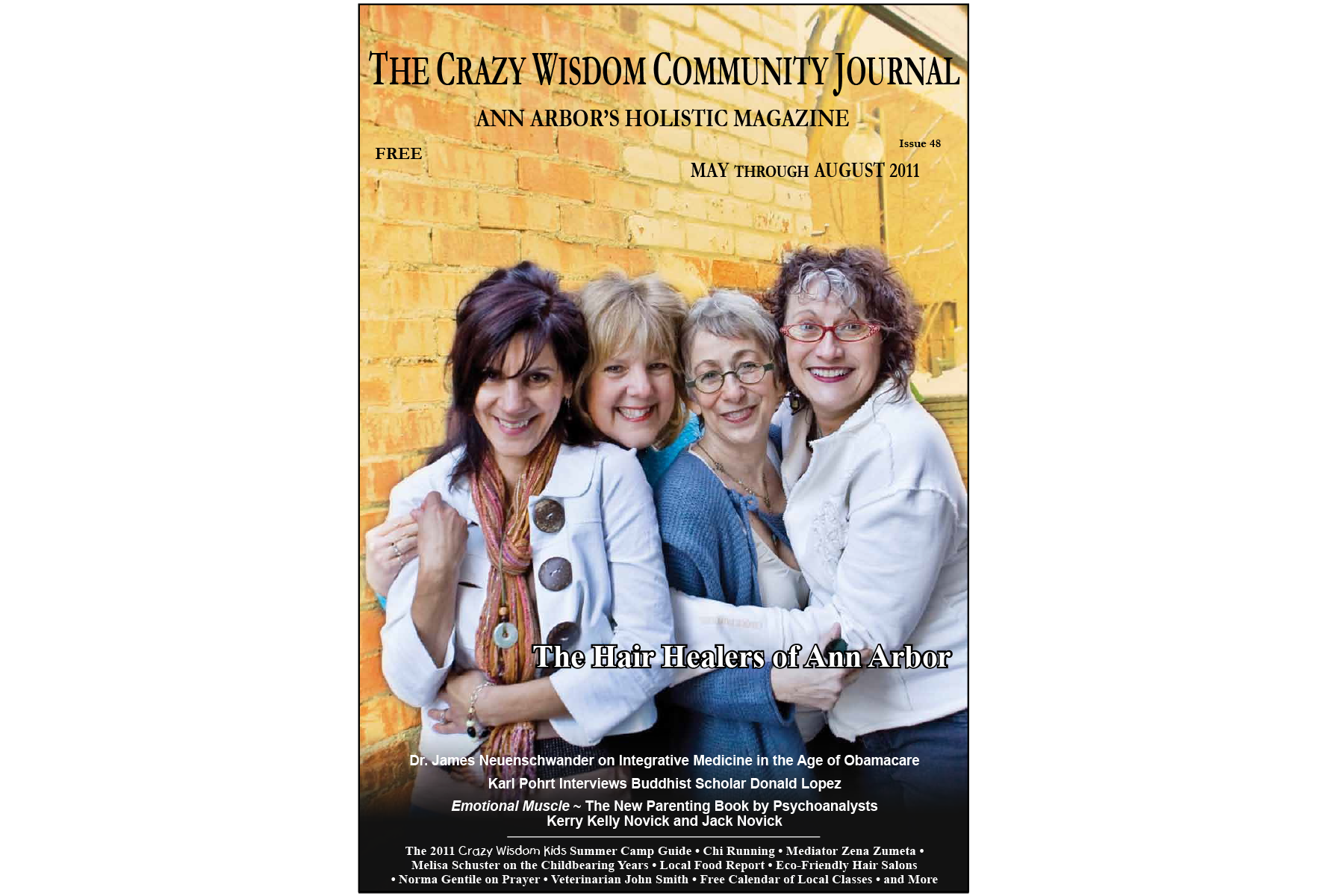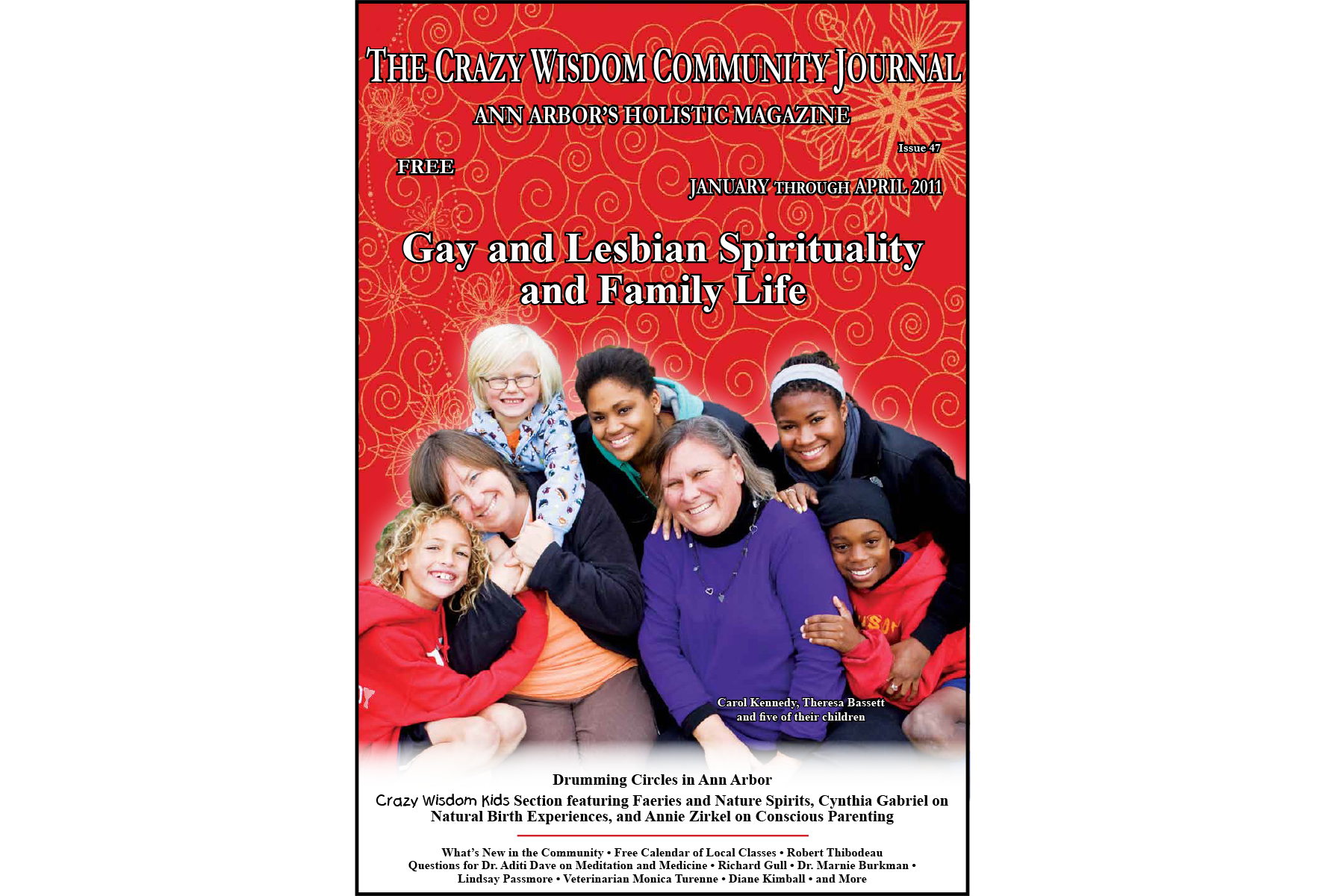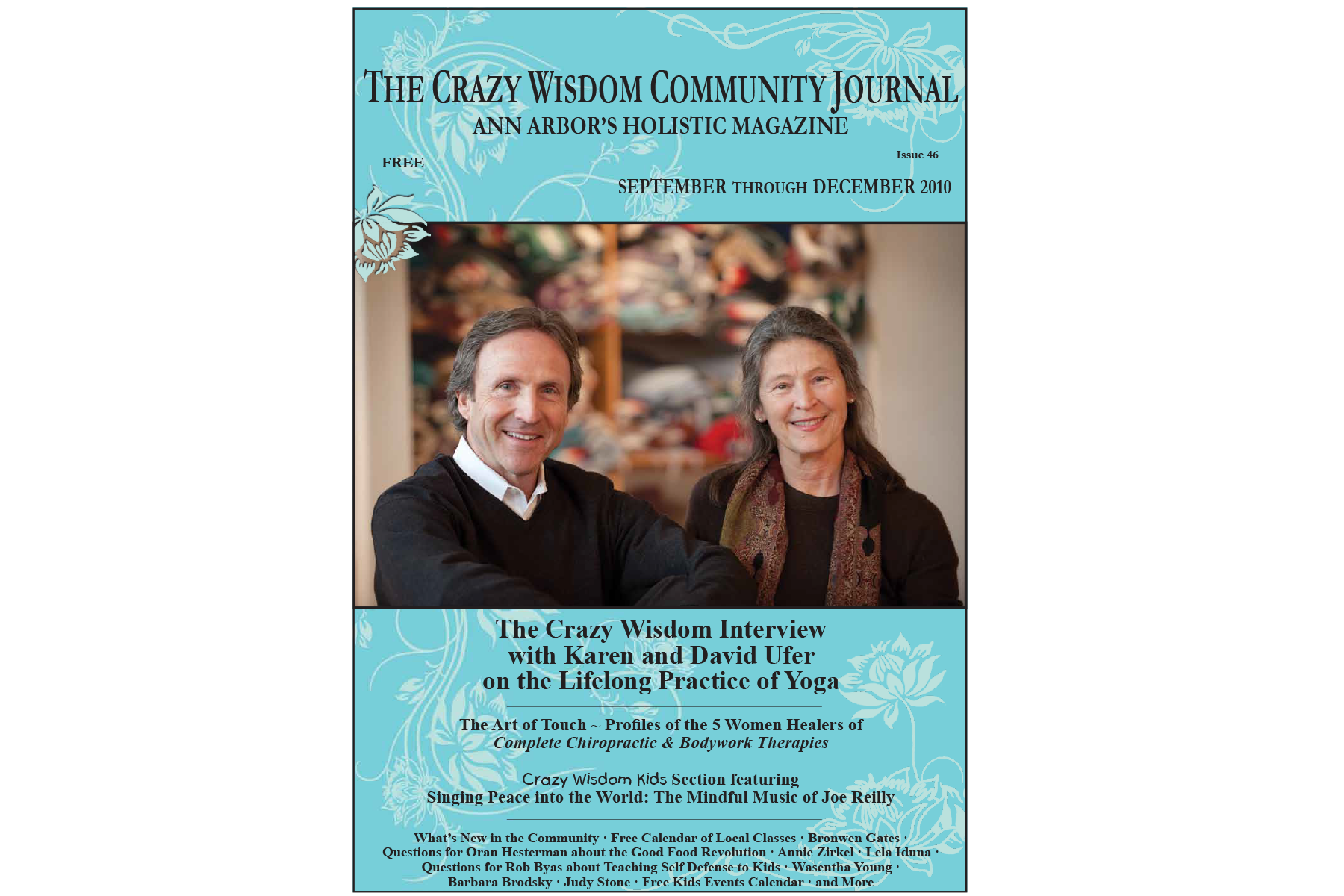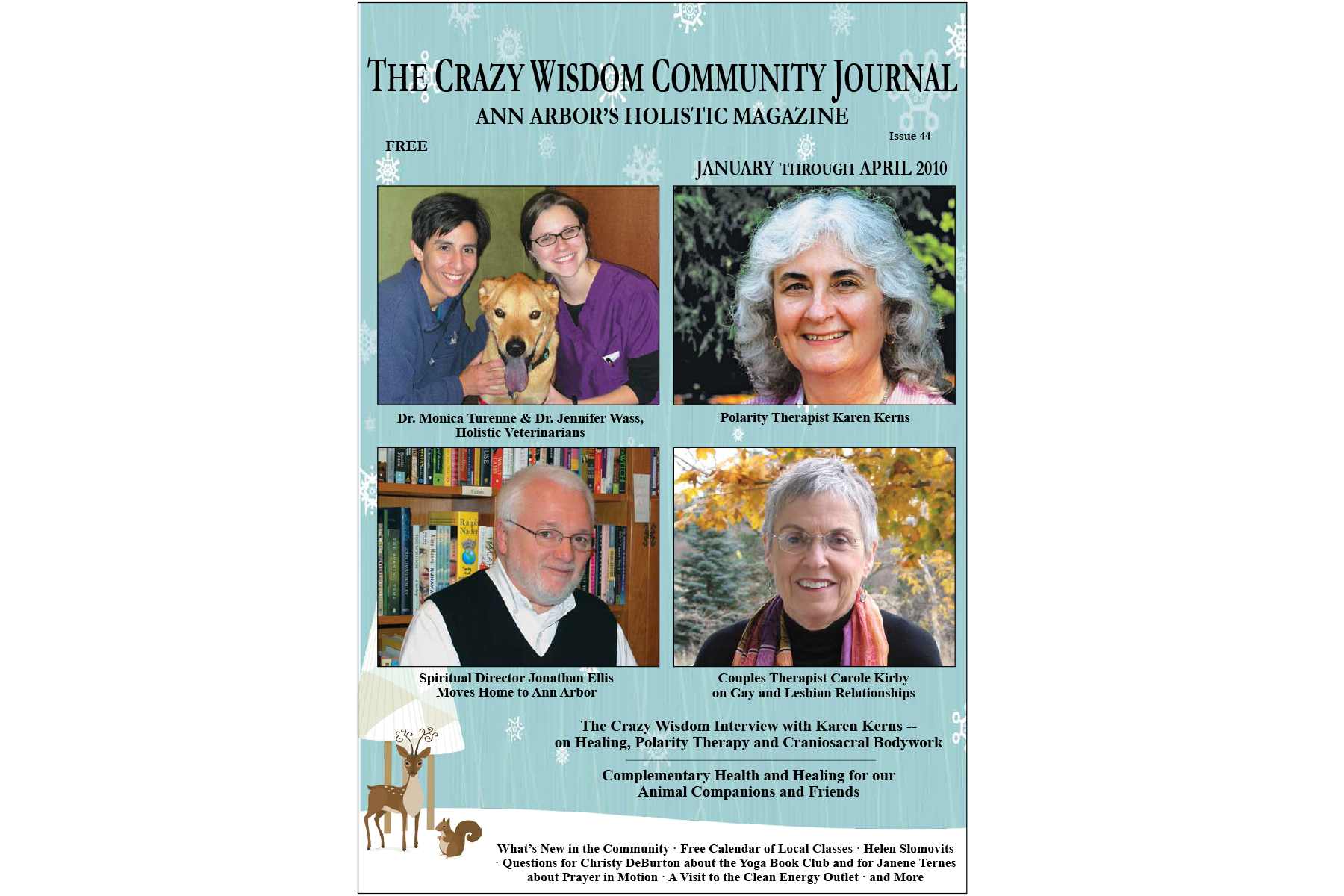A lot of family caregivers are part of the “sandwich generation,” tasked with caring for their own children or grandchildren, and an ageing parent simultaneously. This life transition can trigger grief reactions for the caregiver and the aging parent.
How Humor Helps Me Over a Hurdle
I’m working once again to lose my post-pregnancy weight…it’s been 25 years since the baby. There have been peaks and valleys, fitness regimens and meal plans. Just when I thought I had things under control, menopause slapped me in the face. I hit a plateau. A brick wall. A stand-off.
Finding Myself Through Human Design
On New Year’s Eve 2020, I was feeling a lot of pressure about choosing a career path. The pressure came from my partner of six years, Jake. He was frustrated that I could not just choose a career and stick with it. He couldn’t understand that I no longer wanted to work a traditional job and felt burnt out. I felt like I was living in the movie Groundhog’s Day. No matter where I worked, I always found myself in the same situation. Either the boss would not understand me and become angry or frustrated, or if it was not the boss, it would be a co-worker. Every traditional job I had seemed to chew me up and spit me out. I would find myself in a pattern of staying for about two years before the environment became toxic, and I would hop to the next job. I never understood why this would happen. I was a hard worker, friendly, and did my best, but it did not matter. I was stuck in the same cycle.
The Practice Beneath the Practice
By Kelly Kempter
My bodywork practice synthesizing Shiatsu and Thai massage serves as a physical manifestation of a deeper spiritual practice. Both Thai massage and Shiatsu are rooted in Buddhist traditions, and I feel honored and enlivened to be a part of these pathways in the modern world. The principles of Insight Meditation offer guidance for my bodywork sessions, allowing a somatization of the path.
In my mat-based bodywork practice, I utilize a mapping of the body-mind-heart founded in Shiatsu and Five Element Theory and apply methods from both Shiatsu and Thai massage. I studied Thai massage twenty years ago at the beginning of my massage therapy training and fell in love with the approach; performing Thai massage on a clothed recipient on a floor mat feels like a beautiful duet of healing touch, a slow, meditative dance akin to Tai Chi. The choreography of it, if you will, awakens a sense of being fully embodied in the practice of touch.
Some years later, when I began studying Five Element Shiatsu as taught by Frances Farmer, I was able to connect with a foundational theory that makes my heart sing and reminds me of deeper truths. Utilizing presence, reverence, and full body engagement along with a growing understanding of Five Element Theory and being in tune with nature (with the seasons and tides in our bodies) the stage is set for healing--I’m all in. I am listening with my whole being to another person’s pain and honoring the life force within which is healthy and whole. Frances Farmer observes, “Your body has the inner wisdom to heal itself, and I am here to listen and learn.”
Both Thai massage and Shiatsu are mat-based therapies founded on a premise of oneness and that the giver is healed as much as the receiver. The therapist opens their senses to what is present and holds it in a loving light. Holding is the essence of what I do. I hold tissue with my body weight. I hold points with my fingers, knees, elbows, or toes. I hold words. I hold the pain of embodiment. I hold emotions, sensations, and thoughts. I stay with what arises, watch transformation occur, and remain curious. In the simplest way, I am listening, witnessing, feeling, and accepting while holding the physical form.
My spiritual journey is the foundation of this incarnation; it is the ground I stand on and guides all aspects of my life. For me, it is easy to see how it is the very bedrock of a practice that involves touch and healing. Although, I do not limit my spirituality to a single tradition; it is a living practice steeped in Insight Meditation. Also called Vipassana, Insight Meditation is one aspect of Theravada Buddhism, which is practiced in Thailand. The teachings urge us to sit in meditation, study the Dharma, move with awareness, cultivate Sangha, pay attention to the stillness, speak with kindness, walk in silence, and watch what arises. The idea is to honor whatever is present, inviting all of it in for a cup of tea—the old wounds, fear and grief, the harmonious heart, mundane plans, rehearsals spawned by anxiety, inner peace, re-playing of scenes laced with shame, the exalted states, and everything in between. Returning to this moment over and over again, in a spiraling dance of unfolding, we come closer and closer to home. When we sit with our resistance, its grip loosens, and we are brought back to wholeness.
Vipassana practice, Thai massage, and Shiatsu are all founded upon a cosmology of non-duality. They are based on the radical premise that there is nothing wrong, nothing to be fixed, that we are already healthy, vibrant, and whole--that our true nature is one of peaceful aliveness. We can only gain access to this wisdom in the present moment. Since the body is always in the present moment, it makes for an easy entry point into both healing and spiritual inquiry. Connected to our wholeness, we observe ties to the natural world; we begin to see that we are not separate from nature, but a manifestation of its elements. Awareness of sensations in our bodies brings us closer to our elemental nature and invites its own sort of healing.
My bodywork practice is a somatic exploration of Insight Meditation. In both practices, upon first glance, there is chaos. There are complaints. There is pain. There is dissatisfaction. When a client walks into the room, they give name to the details of their suffering. Similarly, when we sit down to meditate, our patterns of suffering become apparent. When we touch or are touched with care and attention, the resistance begins to melt. When we stay with sensations, mindfulness creates an opening in which suffering can transform. Over time, the consciousness of what is happening becomes larger and more powerful than the details of our pain. As my Thai massage teacher, Paul Fowler wrote, “In the Thai way of thinking, illness and disease are a natural part of life and although it recognizes that the body is out of balance when these things occur and need to be corrected, there is less tension around illness and disease because they recognize that these things are natural and impermanent.”
For me, both meditation sessions and bodywork sessions integrate a ritualistic start and finish. When a person walks through my door, utilizing Buddhist principles around compassion and sympathetic joy, I open myself to be a kind witness, one who accepts whatever is going on, hearing the details and honoring the suffering. Taking in the fullness of a human being, perhaps I am able to discern which elemental phases are speaking the loudest and what parts of a human are in need of nurturing. Moving over to the mat, the process of setting up the body of both giver and receiver in a relaxed alignment contributes to concentration and enhances energy flow through the system. This is true as well for tending to our posture when we sit in meditation. This pre-session care creates a sacred space and a kind of healing cocoon. With the first touch, I am reminded of my Vipassana teacher, Susan Weir’s words, “Let awareness do the heavy lifting.” I feel deeply into the very essence of a person, beyond the complaints that they walked in with, beyond their name and the person they experience themself to be. I too walk beyond myself as a massage therapist working on tissues. I open my awareness to our joined life force. I listen with an intimacy that unites two beings via a shared experience. There is nothing to do but be present while connecting with a solid, relaxed pressure. There is literally nothing that needs doing, fixing, changing, or even healing. Our wholeness and vibrancy is already present, it is the essence of us. With a courageous presence, when we are able to pull back from doing and engage in the art of non-doing, we connect with a force that is always in a state of balance. This is coming home.
Kelly Kempter is a licensed massage therapist specializing in Thai Massage and Shiatsu in her Kerrytown studio. She seeks to inspire balance in the community through the practice and teaching of bodywork. Visit her online at kaizenhealingarts.com.
Related Content:
Ann Arbor Healers: Staunch Stress, Seal Serenity
By Marie Noelle Duquette
I hurt my leg in mid-September while running with my dog, Nala. The air was cool, autumn-fresh, and Nala and I were enjoying our evening walk. I felt so strong that I broke into a light jog, without stretching. I am 61 and not a runner.
About 50 yards into the run, I felt a pull behind my left knee. I slowed to a walk, thinking to myself, “There is no way that itty bitty burst of energy caused anything as serious as a sprain or heaven-forbid tear.” Still, my skin behind my knee was hot, the pain was real, and I quasi-limped home.
After wearing a brace on my knee for weeks, icing it daily, stretching it carefully, and getting an ultra-sound to rule out more serious causes, the pain behind my knee persisted. While researching therapies for leg injuries near Ann Arbor, I stumbled upon the Neurofitness Center website. Their website was convincing. I made an appointment to try everything they offered: Neurofeedback, the Salt Room, the Float Tank, and Cryotherapy.
My partner and I first went to Neurofitness to experience a Neurofeedback session and the Salt Room. Jack Lark greeted us upon arrival. Knowledgeable and engaging, he would help us navigate the different therapeutic experiences. Neurofeedback, he explained, was a therapy in which he would attach a couple of electrodes to my ear lobes and one at my temple. Next, I would put on a comfortable pair of headphones—the kind with soft padding that cover one’s entire ears. Then I would sit in a comfy chair and listen to a recording of meditative music infused with nature sounds such as birdsong, steady rain, and wind rustling through trees. The recording was enchanting. It was easy to close my eyes and give my mind over to what I was hearing. Periodically, the music would skip, like a less-annoying skip of a record that self-corrects and lasts only a second. The ambient recording draws one’s auditory focus—the skips are triggered anytime one’s mind wanders beyond the music and birdsong. At first, the skips happened frequently. Soon, my focus on the audio became steadier and the skips were less frequent. The Neurofeedback session was like yearning to hear a beloved, melodic voice that is almost beyond one’s hearing. I stilled my body and leaned into the strings, rain sticks, flute, waterfall, and windchimes. By the time the session ended, I was ready to book a weekly session, my relaxation was so complete. Lark told me that Neurofeedback was a form of practicing mindfulness in a way that required less effort and more receptivity. As one who struggles with keeping my attention in the here and now, it succeeded beyond my hopes.
If the Neurofeedback session was like yearning to hear a beloved, melodic voice the Salt Room was akin to sitting on a beach, inhaling fresh air. The Salt Room at Neurofitness is lit by infrared lights and is big enough for two people to sit in comfortably. The Himalayan salt is so deep on the floor that it looks like a remote beach of fine sand you can dig your toes into. Salt bricks are laid into the walls and a PVC pipe in the corner emits a burst of fine salt spray into the room every eleven seconds. Upon entering, I removed my shoes, pushed back in one of the zero-gravity chairs, and closed my eyes to focus on my breathing. I quickly fell into a meditative state and the half-hour session slipped away unnoticed.
The next day we returned to float. We had both enjoyed float tanks in the past and were familiar with the drill: enter the room, shower, enter the float tank, and either close the lid, if you are in the egg or turn out the lights if you are in the non-covered tank. Music plays if you are in the open tank, or you can float in absolute silence in the egg. In both tanks, you float in darkness that envelops you so completely that you cannot see the walls, the water, or your own wrist in front of your face. The complete lack of visual stimulation enhances one’s sense of touch so that the salt water, which holds you up without effort, feels like a cradle, the warm water giving a sense of being in a womb—a protected space created for your own nourishment and rest. A gentle recorded voice interrupts your reverie when the hour is drawing to an end. After floating, the colors and lights and sounds outside are more vivid and distinct. There is a newness to the world as if your very eyes have been cleansed—your senses reset.
On Monday, I returned to Neurofitness for the scariest offering: Cryotherapy: standing, with minimal protective outerwear, in a sub-zero chamber for three minutes. Cryotherapy has been used for decades in Europe and Asia to promote athletic recovery. From the Neurofitness website, I read, “The use of liquid nitrogen in a safe and controlled environment provides a gentle but significant amount of cold exposure. The extreme cold stimulates the skin’s temperature receptors to activate the nervous, immune, and endocrine systems, leading to a reduction in inflammation and pain (hey athletes—this means quicker recovery!), elevating mood, and increasing energy. Clients often tell us they feel relief of symptoms including muscle soreness, arthritis, chronic pain, and inflammation.”
Lark, our guide at Neurofitness, was particularly helpful for my Cryotherapy session. He explained that the sub-zero temperatures would not feel quite as cold as I might expect, because it was a dry cold, not the wet cold that we know from Michigan winters. The Cryotherapy chamber looks a bit like a blue hexagon-shaped phone booth. The floor of the chamber is adjustable by adding soft, uniform pads that fit perfectly in the chamber’s footprint, so that no matter your height, your head is not enclosed in the chamber. Lark gave me special socks, shoes, gloves, and a robe and excused himself until I was ready. When he returned, he assured me that I was in control. Once in the chamber I could opt to remove the robe and at any time, or I could ask him to let me out. Still, he urged me to embrace the experience and try not to focus on how cold I felt. “That way, you’ll get the most out of doing it,” he said.
Once inside the chamber, I was not brave enough to drop my robe. The cold was not as sharp as I expected, but neither was it as comfortable as the other therapies had been. I endured the entire three minutes, trying to focus on the benefits. I emerged feeling like a victor. Immediately after Cryotherapy, I felt hungry, and then tired. As the evening wore on, and the new day dawned, I noticed that the pain in my leg was considerably subdued. I could still feel a dull ache where the sharp pain had been, but that continued to lessen in the days ahead. It has been two weeks since I braved the sub-zero Cryochamber and my leg has yet to hurt at the level of pain I endured before the experience. In fact, I’ve not worn my knee brace once since the big freeze. I’m going back for another session today, to continue the full healing of my leg, and to see if Cryotherapy will help heal two toes that I bruised badly yesterday when I wrapped them around a square, wooden chair leg.
Neurofitness is an extremely clean facility. Lark is a helpful guide whose sense of optimism and wonder is infectious. The entire environment underscores that restorative healing and stress-relief is more than a nice occasional treat. It is something we need as much as medications, fresh food, and deep sleep. The therapies offered at Neurofitness act like boosters that enhance other healing practices. They helped me find a place beyond the trauma of life in which restoration of my body, mind, and spirit, is both inviting and efficient.
In my first visit, I commented to Lark that I was pleased that Health Savings Account and Flexible Savings Account dollars offered by many insurance companies could be used for all their therapies. He said, “Of course! We are a health care center.” Indeed.
Neurofitness is located at 6360 Jackson Road Suite A in Ann Arbor. To learn more or make an appointment, call (734) 206-2012 or visit them online at https://neurofitcenter.com.
Related Content:
Green Living: Now is a Great Time to Plan Your Rain Garden
By Serena Dobson
Rain is probably far from your mind this winter. It’s more likely you’re stressing over snow—the mornings you’ll spend plowing your driveway and the salt you’ll inevitably be tracking into the house. But even though drizzly spring days seem a world away, the winter months are the perfect time to start thinking about planting a rain garden.
Stormwater runoff is a major issue facing the health of waterways all over the world. On impervious surfaces like paved roads, sidewalks, and roofs, rainfall flows unimpeded, collecting pollutants like pesticides and animal waste as well as litter like cigarette butts and plastic. This contaminated water makes its way into storm drains, where it enters our sewer system, or might even flow directly into rivers and stream, where it threatens flora and fauna.
Rain gardens were developed as a way to mitigate this problem. Consisting of vegetation planted within a shallow depression in the ground, they collect, absorb, and filter water that would otherwise run freely through urban areas. Washtenaw County residents are lucky to have a robust rain garden program, run through Washtenaw County Water Resources. The County offers a Master Rain Gardener Course that gives participants the opportunity to gain all the knowledge needed to construct and plant their own rain garden. The prerecorded course and necessary materials are available on their website, along with other helpful resources.
By studying up over the winter and making important decisions about your garden ahead of time—such as location, design, and what plants to use—you’ll feel much more prepared when it comes time to plant. Most sources recommend planting your rain garden at least 15 feet away from any buildings to keep water from pooling around and damaging structural foundations. Utilities like wells and septic tanks will need to be considered, too. As far as location goes, one option is to stake out an area near roof gutters or downspouts but still distant enough from your home that there’s no risk of damage while another is to position the garden further down your yard so that it collects runoff from the lawn as well as from the downspouts. Wherever you place it, your rain garden will need to be downhill from the channel that will be directing the water and situated on flat or slightly sloped ground.
The Master Rain Gardener Handbook suggests making your rain garden be “four to six inches deep and 20–30% the size of the impervious surfaces.” Though you won’t need to start digging until the spring, it’s good to figure out and troubleshoot these measurements ahead of time. Once you know how big your garden should be, you can experiment with different shapes—like a crescent, teardrop, or other organic form—settling on one that complements the existing features of your yard. Don’t be afraid to sketch it out! Putting your ideas on paper is the best way to visualize your garden-to-be.
What native Michigan plants you choose should be dependent on how much sun your garden will be getting. Purple coneflower is perfect for full sun, while wild geranium prefers things to be partly sunny. Plants like fox sedge and black-eyed Susan can thrive in either situation. You might also keep in mind the kinds of pollinators you most want to attract. A garden filled with bee balm and rose mallow would be hummingbird heaven!
Leslie Science & Nature Center (LSNC) will be incorporating a rain garden into the design of their our developing Nature Playscape with their upcoming water play installation in 2023. Using pumps along the perimeter of the water play area, visitors will be able to manipulate a flow of water that will run downhill, feeding a rain garden populated with native flowers, grasses, and shrubs. They will design pumps for ease of use, ensuring that visitors of varying physical abilities can enjoy the feature equally. The rain garden will be staggered down the hill and fed underground by runoff from the water play area. Our water feature will provide an opportunity to educate visitors about informed water usage and the role that rain gardens can play in a healthy urban ecosystem.
By using mindful landscaping techniques like rain gardens, the center can positively contribute to the health and beauty of the local watershed. Rachel Carson wrote in Silent Spring that water must be thought of “in terms of the chains of life it supports.” As you begin to plan your rain garden, consider how this choice will impact all the life around you—your family and neighbors, your pets, the songbirds nesting in your backyard, and the trees in your favorite park. From the smallest insect to the tallest sycamore, we all depend on clean water to thrive, and we as humans have the power to make a beneficial and lasting contribution to our environment.
List of resources:
Rain Gardens: Sustainable Landscaping for a Beautiful Yard and a Healthy World by Lynn M. Steiner and Robert W. Domm
Creating Rain Gardens: Capturing the Rain for Your Own Water-Efficient Garden by Cleo Woelfle-Erskine and Apryl Uncapher
Let’s Build a Rain Garden by Sally Wenczel (children’s book)
Water Resources Washtenaw County: Rain Gardens: washtenaw.org/647/Rain-Gardens
Water Resources Washtenaw County: Master Rain Gardener Class washtenaw.org/675/Master-Rain-Gardener-Class
Huron River Watershed Council: Rain Gardens in Our Watershed: hrwc.org/rain-gardens-in-our-watershed/
Serena Dobson is the Development & Administrative Assistant at the Leslie Science & Nature Center and Ann Arbor Hands-On Museum and holds an MFA in creative writing from the University of Michigan. She loves to hike and birdwatch all over Washtenaw County.
Related Content:
Namaste. Katie, Yoga Column Winter 2023
Dear Katie,
I’ve heard you talk about a “Word of the Year” before in classes and was curious if this is the same as a New Year’s Resolution, and how you use this in your yoga practice. I am hoping to incorporate something similar in 2023 for a little inspiration!
Namaste,
Toni, Ann Arbor
Dear Toni,
I am so glad that you noticed the “Word of the Year!” This is certainly not something exclusive to Verapose, though it is a practice we have incorporated for the majority of our seven years in business. We view our word of the year as more aligned with the word Sankalpa, or intention, then with a resolution.
Rod Stryker in his book The Four Desires, dives deep into this ancient concept of Sankalpa, tracing it back to the Rig Veda, one of the first yogic texts. He draws the distinction of a resolution often being more tied to our desires, and a Salkapa being connected to purpose. For example, I may have a resolution to meditate every day, something I struggle with, and when I chase this desire and fail (I am intentionally using strong language here), I am hard on myself. In 2022, I chose Reflection as my word of the year. This allowed and encouraged me to think of all the ways I am able to slow down, quiet down, and engage in more contemplative practices. Through my Sankalpa, I was able to expand my definition: some days this reflection was meditation, some days it was journaling, a walk in the woods, or other reflective practices.
Sankalpas move us closer to that intention through our resolve, and through our willingness to be creative and purposeful. Word of the Year is a broad Sankalpa, and there are times when we are going to want to sharpen our focus and our resolve; this may or may not be one of those times, depending on your vision for 2023. Much like all Sankalpas, yours isn’t set in stone. My amazing yoga partner Courtney loves a hyphenated word of the year, something like Reflective-Rest-Resolve, or something else fun. Try something out! You’ll know it when you have the right word choice.
Namaste Katie,
I am sitting more than usual, and my legs are tight. I feel like I need something that I can do for a few minutes between meetings. I would love to take props, but I am moving around a bit much between offices to have props everywhere. Any recommendations?
Beth, Manchester
Dear Beth,
Yes, the nature of our occupations and our day to day lives has changed the ways in which we engage with our bodies. Many of us have been working more hours in challenging spaces, and many converting spaces that we used for rest into work areas. This has caused cumulative stress on that movement, and release can be really beneficial. There are all sorts of seated releases for the body to engage in during virtual meetings. I highly recommend a few seated cat-cows each day to move the spine and keep us thinking about alignment.
For in-between spaces, take a moment to lie down! I know, some of us are looking at the ground/floor with a healthy dose of skepticism. Let’s give it a go. Releasing the back body into the floor is powerful. Take a few breaths here. Either with your feet planted near the glutes, or legs extended, draw one knee in toward the body. In this Apanasana, there are many choices. We’ve already checked in on the variations of the lower leg. We can also vary the degree to which the leg moves in toward the body. In the photo I have shared,my arms have some bend and are guiding my leg in the direction of the torso rather than pulling. We should strive for that Aparigraha, or non-clenching, in our postures. Take a few breaths in the space and explore where there are points of release, places to surrender. Perhaps there are spaces in the hips, in the shoulders, in the low back. When you are ready, switch sides. Allow yourself to return to a side that needs the attention or to stay longer in one space if needed. Enjoy the time to soften and relax.
Namaste Katie,
I have, over the last few years, developed a regular meditation practice. Of late, my mind has been very active and harder and harder to wrangle in my morning sessions. I continue to sit, yet I am becoming more and more frustrated. I know that moving into the space with a sense of frustration is likely not helping, so I am reaching out for some support!
Prithi, Ann Arbor
Dear Prithi,
Yes, moving from a place of frustration can cause us additional frustration, and lead us down that vicious cycle. Michael Singer, in The Untethered Soul talks about our Inner Roommate as the voice in our heads that is constantly narrating our experiences and provides us with a sense of control. The first step for any of us is noticing the movement and motions of our Inner Roommate, as you have begun to do. This awareness assists us with noticing patterns, and those likely distraction points for the active mind. Finding solace in our active minds, and that awareness, can be part of the process, and as you have been beautifully aware, a challenging one!
The Yoga Sutras recommend that we stick with the form of meditation that is working for us, noting that consistency is a big part of developing those quiet spaces. We also allow ourselves the space to notice when something isn’t clicking. When our Inner Roommate is taking over and dominating the time that we have set aside for our practice, we may ask ourselves if it is time to switch things up. This may be a time to try out some mantra meditation (which can be external or internal). You may need a guided meditation to draw your focus: this may also be the space for a walking meditation to engage the body and the mind together. Doing so, in a kind and caring way, can help to soften your frustrations--and if one of these clicks with you, stick with it for a while. Have this be your consistent and kind space for as long as you need.
Related content:
Are You Sabotaging Your Self-Care?
By Christy DeBurton
What comes to mind when you think of the term ‘self-care?’ Many people think self-care involves a lot of time or money. Others believe that self-care is selfish. These ideas are completely false. Simply put, self-care is essential for you to be the best version of yourself. It isn’t about getting weekly massages or taking candle-lit bubble baths (though these can be part of it if you choose). It isn’t about neglecting your responsibilities or ignoring the needs of others. The real essence of self-care is being true to who you are, so you are living the life that you want to live, and not the life other people want you to live. It’s about making choices from a place of love and connection rather than guilt and obligation. But that love has to start with loving yourself first—and not all of us are so good at doing that—so we end up sabotaging our self-care. A while back, I went on my own self-care journey, examining the obstacles that were getting in the way of taking better care of myself. Here are some things I learned along the way.
Give yourself permission to take time for self-care. Let’s face it, no one else will. We all want someone else to say to us, “You’ve been working so hard. You’ve been under a lot of stress. Why don’t you take the day off and just relax?” Most likely, this is never going to happen. Even if you do have someone like this in your life, ultimately you have to be the one who gives yourself permission to take time for self-care. So why do we have such a hard time doing this? Because we’ve been raised in a society that tells us we always need to be more, do more, and have more. Because we’ve been raised in families that pass down conscious and subconscious beliefs that we are not worthy, that we don’t deserve what we really desire, and that we need to take care of other people’s needs before our own. Take a moment to examine this in your own life. Do you feel obligated by certain people to do things that you really don’t want to do? Do you tell yourself you don’t have time for self-care because you just don’t feel like you deserve to take time for yourself? Or are you worried about what other people will think if you do? What kinds of messages are you telling yourself about your worthiness as a human being? Examining those conscious and subconscious beliefs is the first step. Once you’ve done that, try putting into practice either or both of these helpful techniques:
“Who says so?” Any time you catch yourself thinking that you don’t have time to relax or do yoga or some other form of self-care because you have to check off one more thing on your never-ending to-do list, question that ‘voice in your head’ by asking yourself, “Who says so?” I guarantee you will be amazed at what other voices besides your own (maybe it’s the voice of perfection, or guilt, or your mother!) you are listening to. Is listening to those voices in your best interest? What if you listened to your own voice instead? Once you’ve asked yourself this question, or separately on their own, you could ask the following two questions.
“How do I feel right now?” and “What do I need to do to take care of myself?” In my work with clients, I have come to realize that most people are not good at checking in with themselves to see how they’re feeling throughout the day. We can’t take better care of ourselves unless we take the time to contemplate how we’re feeling and what we need. Getting into the habit of asking myself these two questions has made a huge difference in my life, and I am confident it can in yours, too. I encourage you to write these questions on some sticky notes and put them in places where you’ll see them—like on your bathroom mirror, work desk, or car dashboard—throughout the day. Then, every time you see them, take a moment to pause and ask yourself how you’re feeling and what you need to do to take care of yourself. The trick is that you need to pause long enough to really ‘hear’ the answers, and then go do what you need—without apology!
I had to work at it for quite a while to get to the point where I felt comfortable making time for self-care every day, so let me be the first to say it won’t be easy. You’ll most likely get resistance from those close to you who have certain expectations. But those who truly love you and want what is best for you will understand. And those who give you a hard time? You might want to examine why you want people like that in your life.
Because I benefited so greatly from taking my own self-care journey and learning to implement techniques like the ones above, I created a compact but powerful online course, Stop Sabotaging Your Self-Care, to help others who are ready to make self-care a priority. In this course I guide you on a journey of self-discovery to examine the obstacles that stand in the way of you taking better care of yourself and teach you tools like the ones above to help you cultivate greater awareness around your self-care needs. I’ve included thought-provoking exercises, journal prompts, weekly meditation and yoga practices, and more. You can find out more about this course at yogaroomannarbor.com/online-courses-self-care.
Finally, because I found it helpful to have some supportive people tell me that I did, in fact, deserve to make time for my own self-care, let me pass that support on to you. The world needs your gifts. But you will only be able to shine if you take good care of yourself first. It doesn’t have to be anything elaborate: even taking a 15 minute walk every day can make a world of difference. I promise if you do, you will feel so much better and those around you will also receive the benefits of your new-found sense of well-being, too. You absolutely deserve it, so give yourself some time for self-care today.
Christy DeBurton is a Holistic Yoga and Wellness Educator with 25 years of experience. She helps people feel better inside and out through yoga, meditation, wellness retreats, online courses, and more. She can be reached at info@christydeburton.com.
Related Content:
An Audience with the Pope
As a devout Christian I have studied the Bible and one passage that is very present in my heart is 1 Corinthians 2:9 “No eyes have seen, no ears have heard, and no minds have imagined what God has prepared for those who love him.”
Faith, and the love of God, is a grace given to us. Since I was a child, I have felt God’s presence and remember having Divine unitive experiences of awe of my existence and God’s creation. I attended an all-girls school and thought I was going to be a nun. However, my vocation to be a mother was stronger and I was married young and had four daughters and a son. Raising them full time was a very fulfilling and holy experience for me.
When my children left for college, my hands were empty, but my energy was very strong. It was a time to recreate myself. Coincidentally, my only sister and best friend Marta, died suddenly at the age of 38. In my profound grief I realized that I needed to create. More than the activities in the garden, more than my creations in the kitchen. Creativity was calling me to heal my soul.
At the same time, I felt I needed to rediscover God, so I enrolled at the Shalem Institute for Spiritual Formation where I earned several degrees and became a Spiritual Director and Group Formation Leader. It took me ten years, some of the best of my life. In Shalem, which is Ecumenical, I had the gift of sharing time and studies with people from different religions. It was a time of searching; I visited several temples, churches, and synagogues as my soul was so ready to soak in the many faiths that enriched mine. I discovered Rumi and Hazif. I studied with Rossi Joan Halifax and attended Mystery school with Jean Houston for a year. My soul was soaring, renewed, and refreshed.
Read related article: Creature Comforts on the Camino
Following graduation, I created Women’s prayer groups in my eagerness to share my discoveries.
During this time, I also discovered an interest in sculpture, and it has been one of my greatest gifts from God. My sculptures have been expressions of grief, healing, realizations, discoveries, and longings. Creating these pieces brought a tremendous amount of empowerment, courage, and lots of joy. As my sculpting skills grew, I created classes for beginners and advanced students to share the healing I had received through creating art.
In 1996, I founded the Windrise Retreat Center in Metamora, Michigan. For almost 30 years we have held retreats of many kinds. My husband Greg and I host people who find peace and serenity in a secluded 100-acre estate surrounded by forest and a softly singing river. We are Ecumenical in spirit—all denominations are welcome at Windrise. Now I mainly host sculpture classes at my Windrise studio, Galeria Mariposa, as my way to explore the soul.
In March 2013, Pope Francis was elected. The fact that he is Argentinian, as I am, and the first Jesuit and Latin American to be ordained brought tears of joy. He chose his name, Francis, to honor his spiritual connection with St. Francis of Assisi who cared for the poor and the underprivileged. He lives in a simple apartment in the Vatican and refuses the Papal palace and all the luxurious apparel. At night he wears simple Priest clothes as a disguise and visits the homeless. We can say he is like Christ, revolutionary (bringing changes where needed), humble, compassionate, and very wise. When he appeared on the balcony after his ordination at Piazza St. Peter, his first words were “Pray for me.” I cried as I experienced the humility in his words. It was those three words that inspired me to start working on a bust of him—the work took a few months.
After two years of applying for an audience to gift the Pope with my sculpture, I was finally accepted for an audience on March 18, 2020. Just as my husband and I were ready to embark on this holy and extraordinary trip, Italy closed, and the Covid-19 pandemic crushed our plans.
The Vatican coordinator for my audience with the Pope assured me that I would be first in line for an audience when the Vatican opened back up. So, as I surrendered to God’s plans, I spent the Covid quarantine time sculpting portraits of other people I admire like Ruth Bader Ginsberg.
In the summer of 2021, the Vatican scheduled another audience. With great excitement, we flew to Rome on the 5th of October for an audience with Pope Francis on the 6th. The bust was professionally packed, and we carried it to Rome with our luggage on Lufthansa Airlines. I had visited Rome and the Vatican several times since Pope Francis was ordained. During one visit I saw him in the balcony—it was an unexpected surprise—but it gave me the chance to take the photo I used to create his bust.
The St. Peters Basilica has always made me marvel at its gilded beauty—from Michelangelo’s magnificent sculpture of The Pietà, to all the beautiful art adorning its walls. Being a sculptor, I have always been touched and inspired by my visits. This visit was different, though. The audience was held in a large auditorium in the Vatican. I have no words to describe my emotion and gratitude. When his Holiness greeted me personally, my heart swelled in his loving presence. Pope Francis told me he liked the piece, and after giving me a hug, as we Argentinians do, he said “Thank you for making me smile.”
I am forever grateful for the grace of this gift. Never would I have imagined that my sculpture would be at The Vatican, in Pope Francis’ collection.
You can visit Estela Monjo Boudreau’s virtual art gallery at galeriamariposa.net. To learn about the Windrise Retreat Center visit windrise.com.
Related content:
Conscious Parenting: Five Lessons From My Two-Year-Old
Katy Gladwin
This year I have had the pleasure of spending every single waking and sleeping moment with my two-year-old. While I love her very much, I also had a very hard time, until recently, finding a daycare we connected with that had availability. Spending this absurd amount of time with a toddler has made me a little less sane but has also taught me some very valuable lessons. These are lessons I hope to include in my daily life and will do my best to not force her to outgrow.
Party Every Day
Why not?! We had a lovely bonfire gathering with friends this summer, and it was so fun for her that she asked for a party every day after that. I tried to figure out ways we could “party” every day, because having that fun connection with friends and family was so great. Sometimes that looked like a playground trip or a walk in the woods with her little buddies, while other times it was a smaller family dance party, or a singing party in the car. I think it’s important to point out the moments when we’re having a party—also known as finding the joy in the mundane.
I try to remember this when I’m doing chores or just putzing along doing the everyday work of motherhood/adulthood. Take a moment, find something to make a boring task more fun. Put on a song, laugh with friends, find something to feel energetically joyful about.
Slow Down
While this might seem like the opposite of a party every day, it is really important for toddlers to feel like they can watch and learn without being rushed. So, this might mean I need to let her take ten minutes to figure out how to put her socks on or sit with her on the sidewalk while she watches a bug go by. I notice myself feeling like I need to speed things up, all the time, and she reminds me to sit, and watch, and listen. To be still for a few minutes, even if it’s just for noticing my breath—in and out.
Stop Eating When You’re Full
My daughter is so good at this! I know it’s super common to tell kids to “just eat three more bites,” and sometimes it’s necessary—especially if you have a busy, wandering kind of kiddo. But if you’re able to tap into what’s going on in their bodies, and trust that they know, then you can often allow them to guide. When she’s satiated, she stops eating! Even if the food is her favorite—cookies, sweet potato fries, mac and cheese. As a professional health coach, I meet so many women who don't know how to tell if their bodies are full. For whatever reason, many of us have disconnected from the signals our bodies tell us around food and satiety. We often don’t need to finish all the food on our plate—our eyes are bigger than our stomach kind of thing. Little humans know when to stop eating, and as long as we continue to listen, and trust them, they should be able to keep hearing their bodies little voices throughout childhood and into adulthood.
Take a Hug
She says, “I take a hug?” And “take” is exactly what she means! “This hug is for me.” I love when she takes a hug. We need physical touch from our people—our physiology changes when we receive hugs and loving touch from others. Our oxytocin (the love and bonding hormone) levels rise and our nervous system can relax into safety. It also allows me to know what she needs, she asks and receives, and I can easily provide her with that feeling of certain safety. We’re terrible at asking for our needs to be met, and physical touch is a biological need. Take a hug! Your nervous system and your relationships will thank you.
First, Say “no”—Then Change Your Mind If You Want
We all know a two-year-old’s favorite word is no. This used to annoy me, but now I love how she just has boundaries! She says no, but then always has the option to change her mind. This is so hard to learn, especially if you have caregiver syndrome. We have all heard the saying “No is a complete sentence” and I think we should all be taking this more to heart. Similar to the idea of ‘under promise and over perform,’ standing in our integrity and confident in our boundaries is a lesson we should all take to heart. Sometimes our boundaries are hard to find in the moment or under pressure—so saying no first can allow time to find where our true needs and desires meet expectations.
Katy Gladwin CHC, WHC, as a Holistic Doula and health guide has been supporting women in body autonomy and sovereignty through the childbearing years for over a decade. Through private and group programs, she teaches, guides, listens, and carries sacred healing in whatever form each women finds they need most. Gladwin is trained as a coach though an Integrative Medicine Lens and has studied naturopathic medicine and modalities including homeopathy, herbal wisdom, craniosacral therapy, HeartMath(R), breath work, and holistic nutrition.
To contact her, email katy@katygladwin.com or visit her online
at katygladwin.com.
Related content:
Great Tastes in Local Foods: Winter 2022
By Crysta Coburn
Photos by Susan Ayer
The Ebenezer
I watched in fascination as the bartender held what looked to me like a hot glue gun above the martini glass. A bubble filled with gray smoke formed at the gun’s tip and grew to nearly the size of a baseball. The bubble joined with the pink liquid in the glass, forming a dome over the top.
“This one’s yours,” said the barman as he carefully slid the martini my way.
After marveling at the smoke held within the bubble, I slowly reached out my hand and tapped the bubble’s surface with my forefinger. It popped, and the trapped smoke swirled and dispersed into the air. Now that’s a cocktail!
The Ebenezer is a cocktail lounge with a distinct speakeasy vibe located in downtown Plymouth. The entrance is not obvious, unless you know where to look. The address is on Fleet Street, which runs behind Main Street and serves as the backdoor to many of the businesses located on Main and Penniman. You will find the door to the Ebenezer nestled in the corner where Fleet Street makes a sharp turn to the northwest.
You enter into a dark hallway painted completely black and illuminated only by bare red light bulbs that lead you to the next door, also painted black, with an eye-shaped window. You have arrived.
Have a seat at the bar, where you can watch the cocktail magic happen, or grab a table, perhaps the one with the leather sofas on either side, or a wingback chair. The Ebenezer is all about having a low-key, cozy place to grab a drink and share some delicious small plate dishes with your friends or significant other. (If I were still in that scene, I would absolutely take a date here.)
Not having a reservation, my husband and I took a pair of seats at the bar where we bantered a bit with the bartenders and a few fellow patrons. The smoky cocktail that I ordered was called the Rose Martini. It tasted like raspberry limeade. I never tired of watching a few other Rose Martinis being made and recommended it to curious patrons who asked what I was drinking.
The small plates menu is extensive, with some usual favorites like spinach artichoke dip, wings, charcuterie board, and sliders. But there are also Ahi Tuna Crisps (crispy wonton skins topped with thinly sliced ahi tuna, jalapeno, avocado, and their signature soy sauce), shrimp and crab ceviche (served with crostini), truffle mac and cheese bites, and more. I tried the ceviche, finding it fresh and delicious, while my husband ordered the parmesan truffle french fries. The fries came with a little cup of ketchup and another cup of garlic aioli, which tasted divine.
In addition to the signature cocktails (including some tantalizing dessert cocktails), there is a good wine selection and mocktails for those who do not drink alcohol. If you would like a table, or are a large group, I strongly suggest making a reservation. You are bound to have a great time!
The Ebenezer is located at 305 Fleet Street in Plymouth. They are open Tuesday through Thursday from 4 p.m. to midnight, Friday and Saturday from 4 p.m. to 2 a.m., and closed on Sunday and Monday. For more information, visit theebenezerplymouth.com, email info@theebenezerplymouth.com, or call (734) 404-5552.
The Boro
Northeast of Ann Arbor proper is the mostly rural community of Dixboro. Most of us are probably familiar with the Dixboro General Store or the Humane Society of Huron Valley, both prominent features of the region. But there is something new to check out in Dixboro, the Boro.
The Boro is a restaurant venture with two components. The Boro to Go is an all-day take-out cafe with coffee, tea, and other hot beverage options; morning pastries as well as light lunch and dinner options; woodfired pizzas; desserts; and beverages-to-go (both alcoholic and non). The Boro Dining Room and Bar is their dine-in experience open for dinner that serves plates to share, such as giardiniera, oysters, focaccia, and prawns; entrees that include spaghetti, lobster, scallops, pork loin, duck, steaks, and hamburgers; woodfired pizzas; accompaniments like potato puffs and green beans with prosciutto vinaigrette; and a selection of cocktails, wine, and beer.
The very modern corrugated steel building incorporates a 140-year-old barn with the original stone fireplace. The outdoor deck offers beautiful views and the peaceful sounds of nature. Fleming Creek flows through the property, and the Boro’s website promises that “if you come early for breakfast, you will be serenaded by the roosters from the yard next door.”
Read related article: Great Tastes in Local Food, Winter 2017
Unfortunately, I am not an early riser, so there were no roosters for me. Because our lives have been busy lately, my husband and I decided to try the Boro To Go one day when we knew we would arrive home late and have no energy to cook dinner. Ordering through the website is easy, and when you click on a Lunch & Dinner or Pizza item, a list of allergens is included alongside Modifications and Special Instructions. You mark the boxes next to your dietary needs.
Because I ordered the Italian Meat and Cheese Sandwich and marked the box next to Wheat Allergy, the people preparing our dinner forewent the usual baguette and put the fixings on a bed of lettuce, which was so delicious that I think they need to add an Italian Meat and Cheese Salad to the menu. My husband thoroughly enjoyed his woodfired pineapple pizza with san marzano tomatoes, capocollo, smoked ham, and cheddar with a side of chili oil. The Wisco-Pops that we ordered for beverages left something to be desired. I should have gone with my instinct and ordered a Pumpkin Spice Latte with housemade syrup, but I didn’t want the coffee to disrupt my sleep.
The Boro seems to still be evolving and promises seasonal dishes from local sources. This a spot you will want to keep your eye on.
The Boro is located at 5400 Plymouth Road in Ann Arbor. The Boro To Go is open from 7 a.m. to 10 p.m. every day of the week. The Boro Dine-In is open from 4 p.m. to 10 p.m. Wednesday through Sunday, closed on Monday and Tuesday. For more information, visit theborotogo.com, email info@thedixboroproject.com, or call (734) 669-3310.
MI Juice Garden
Do you like freshly pressed juice? Do you like acai bowls? If you answered yes to either of these questions, then you have got to stop by MI Juice Garden at the corner of Platt and Ellsworth in Ann Arbor. As soon as you step inside, you can smell the delicious fresh fruits in the air.
You can get your bowl and juice to go; there is even a refrigerator with bottles of pre-pressed juice if you are in a real hurry. There are also a few tables with chairs as well as some Adirondack chairs whose backs are shaped like the lower peninsula and a small table shaped like the U.P.
Because my husband and I stopped in during the fall, the specialty juice blends menu included themed juices like Dracula, which got its deep red color from beets. I ordered the Popeye, a sweeter option deriving much of its flavor from pomegranates, strawberries, and kiwis (it also has spinach and ginger). You don’t have to stick to the signature blends, however. If you feel confident enough, you can choose your own blend of fruits, vegetables, greens, and spices.
The acai bowl can also be built to suit. Among the several toppings are strawberries, blueberries, blackberries, gluten-free granola, walnuts, chocolate chips, honey, and, for an extra dollar, peanut butter. It was incredibly tempting to order a bowl with everything, but I wasn’t sure it would actually taste very good, and looking back, I am not sure it would have all fit in the bowl, there are that many options.
If you are looking for a healthy meal-to-go, you can, of course, order upon arrival, or you can log onto DoorDash and order for pick-up or delivery. DoorDash also lists salads, sandwiches, wraps, and more. What a fantastic addition to the south side’s lunch-scape!
MI Juice Garden is located at 3980 Platt Road in Ann Arbor. They are open Monday through Saturday from 8 a.m. to 8 p.m. and Sunday from 10 a.m. to 8 p.m. For more information, visit facebook.com/Mi-Juice-Garden-101762538450934 or call (734) 929-4836.
Related Content:
Book Review: It Doesn't Have to be Perfect to be Beautiful by Myquillyn Smith
By Catherine Carlson
t’s 2022, a brand-new year! You think: This is it. This is the year I’m going to decorate my house beautifully. I’m going to complete that home project I’ve had on my mind. I’m going to make everything exactly how I’ve been envisioning it. The season is in your favor after all. It’s the dead of winter so you’ve got time to work on the inside. Yet, in the back of your mind there’s that other thought: Can I really do it? Will I? Few things are more loaded with potential or expectations than a new year.
According to Myquellin Smith, Author of The Nesting Place, It Doesn’t Have to Be Perfect to Be Beautiful. You don’t have to put in as much sweat, tears, or dollars, as you may think to make your home beautiful, and you certainly don’t have to wait until the calendar changes. Smith is a self-taught home decorating expert and coach with an Instagram following and a website featuring an online community, classes, and events. The Nesting Place is a guide for anybody who’s ever felt their desires were out of proportion to their budget, anyone who is too scared of making an imperfect purchase, or too afraid to begin. It’s for anyone who’s ever thought their home wasn’t good enough because it didn’t look like pictures in magazines, books, or on decorating sites.
Beginning with the first house she and her husband lived in as a newly married couple, Myquillyn has lived in a total of thirteen homes. Gradually the homes grew to contain the additions of three children and a dog. It was her attempts to create beauty in each dwelling that helped her learn how to do it. She’s done it all and made plenty of mistakes—from painting kitchen countertops in a rental property to shocking herself while rewiring a lamp. Along the way she developed impressive creative skills and reframed what constitutes a beautiful home. Her techniques are meant to be applied to a variety of homes because she’s lived in all kinds of spaces—apartments, condos, houses and even a garage. A few of these homes were purchased but many were rentals. She is a strong advocate for renting and currently lives in a rented house. Even in the least ideal home, Smith always found a way to make her love the space more.
The book addresses all the places we tend to get hung-up when it comes to our homes. Fear may be stopping you from a big project—but can also affect the smaller ones—such as moving a chair or making the dreaded nail hole. Then, there are the other people whose opinions lead you to feel guilty about your idea to paint the table that’s sitting in your garage...such as your dad, who says painting over good wood is a sin. And, of course, we all have excuses, whether it’s not enough money or becoming deer-in-the-headlamps frozen because we can’t make a decision. Making a small change can seem risky, but it could always lead to something better. There is no one right way to do something.
There are some guidelines (not rules!) as to how to begin. One technique is to “quiet a room” which involves removing anything you can carry that isn’t a large or fixed item. Once you are only looking at a sofa, window treatments and lamps, for example, you can see your space better and it may reveal a hidden gem you had forgotten about. There are plenty of money saving ideas, too, such as using items found in nature or shopping your home—pretend you are in a store where everything is free, what (that you already have) would you choose?
According to Smith, if you are seeking perfection, in your home (or elsewhere), you have two choices. You can either work hard to achieve it, or give up! She has chosen the latter and generously shares her “flaws.” Several photos of her home, in the book, have not been tidied up. There’s a coffee table covered in books and a laptop hidden among them. She shares a picture that was taken for Ladies Home Journal of her office, appearing neat and staged, next to a picture of the same office after the photo shoot was completed. The after photo has drawers open, papers all over the desk and looks like someone actually works in that space. Your lived-in home on display for everyone to see is still beautiful. She says, “I don’t share it because it’s perfect: I share it because I’m finally okay that it’s not.” She includes an Imperfectionist Manifesto at the end of the book.
Finally, here’s an enjoyable and realistic book for all the Pinterest-weary among us. One that gives you permission to accept the imperfections of your living space. Instead of being restricting and unachievable, the information in The Nesting Place, is forgiving and completely within reach. There is no need to post of a photo of your “doesn’t-quite-fit” homemade slipcover along with a shamefully sarcastic “Nailed it!” There’s nothing to be disappointed about. Making your home the way you want it someday can be right now if you are open to the possibility.
Related Articles:
Green Living: Putting Our Yards to Bed For Winter
Over the past six months, we’ve witnessed the transformation from last winter’s dormancy into a lush and verdant summer. We’ve been enjoying the fruits of Nature’s labors—beauty, food, and shade from flowers, vegetables, and trees. Now is the time in our cycle when all this foliar production returns to earth. What has increased must decrease. For leafy life to begin anew next spring, all this green must become brown and nourish the soil.
Looking at Death, Finding the Heart
This is a falling-down life. It changes, we change, everything changes! Worst of all, we have almost no control over how our life unfolds on a day-by-day basis, and so it becomes essential to learn how to deal with the basic facts of impermanence and no control without resorting to a kind of indifferent resignation. It’s not so easy, is it?
The Aura Inside You: Photographing Your Deeper Self
Article and Photos By Cashmere Morley
If you ever have days when you’re feeling blue, or become red with passion, a recent resurgence in an antiquated form of spiritual photography says those feelings may not be too far off from reality.
Aura photography has become more and more popular on social media these past few years. The concept, which attracts enthusiasts and critics alike, originated in the 1970s. Unlike thermographic cameras which detect heat, aura photography captures a person’s aura. Aura photography is not a fortune-telling device nor a way to resolve questions. It captures the state you are in, right now, in your most present moment.
The uptick in recent interest in the practice has resulted in a flood of wispy, magical polaroids and inkjet-printed stills, scattered across screen feeds like a cotton candy, psychedelic dream. It’s a versatile practice in that everyone from grandma to teen brothers to Gwynth Paltrow is ready to discover what their own aura can tell them about themselves. But to understand what aura photography is, one must first understand the definition of an aura.
The first entry of the word aura in the Oxford Dictionary defines it to be a noun, meaning the distinctive atmosphere or quality that seems to surround and be generated by a person, thing, or place. Used in a sentence— "The ceremony retains an aura of mystery." The second entry, however, defines the word as a noun in terms of “spiritualism and some forms of alternative medicine:” a supposed emanation surrounding the body of a living creature and regarded as an essential part of the individual. Used in a sentence: "Emotional, mental, and spiritual levels form an energy field around the body known as the aura." Both definitions incorporate this idea of the aura surrounding the body, in one form or another.
Healthline.com notes that the “interpretation of what an aura is varies among practices and philosophies.” While that is true, what remains a constant through the different interpretations is the idea that all things in this universe have energy. Whether that energy is a reflection of your spiritual and/or physical body is up for debate. In more generic terms, an aura could be thought of as a vibe. If someone is giving off bad or good vibes, that’s their energy, or their aura, that you are sensing. In short, all things have energy: plants, people, pets, rocks. It’s the way you send out those vibes or energies that manifests as an aura.
Annette Schilz, owner of DNA Sales 2100 in Tecumseh, believes that through aura photography, she can show visitors how to tap into their deeper selves. Specifically, she believes your aura “shows you the energies that you are receiving and sending, and that it changes with your emotional state and your health. Ideally, having a strong aura helps protect and feed your chakras and maintain a good mind, body, and spirit balance.”
Said Schilz, “We interpret the aura as your energy field around your body. It’s like an emotional gauge, a little bit. You can tell what mode your thoughts are in by what colors are going to appear in the photo, and then naturally your chakras come into play with that, too. To me, they kind of meld together. Each thought or layer naturally goes to a different mode. I believe there are seven layers, which align with your seven chakras.” Those layers are physical, astral, lower mental, higher mental, spiritual, intuitional, and absolute.
Auras can change, second by second. With the use of rocks, essential oils, tuning forks, and more, Schilz can help guide visitors toward adjustments in their chakras, if they seek it. Sometimes, chakras can appear in aura photography sessions as blocked or lesser in levels than other chakras. By aligning those troubled chakras with objects that emit vibrations targeting those areas, anyone can learn how to make small adjustments in their lives to open themselves up to their full capacity, spiritually and otherwise.
“If you happen to get creative one day, and you say, ‘okay I need to do this creative thing,’ that's going to bring in those energies, it's going to change your colors to more creative green hues. And then, if you get into a layer of your mind where maybe you're thinking of someone you love, then that's going to change your chakras. What I love about the photography aspect, is that it gives a great visual so people can see how quickly the aura can change.”
A common question people have coming into aura photography, said Schilz, is, “What can I learn about myself?’”
To read an aura photograph, look not only at the colors and what they represent, but how are those colors haloed around the subject? Colors at the top of the photo represent your consciousness. The color to the left of the subject represents the energy that’s coming in, or the lens you see the world through. Are you an optimist? A pessimist? The color emanating on the right side of the subject’s body represents the energy that he or she is expelling. This is how the world perceives you. Are you warm and friendly? Or do people generally try to avoid your company? The visualization of an arch represents a goal or an aspiration the subject is perhaps trying to archive.
Read related article: Soul on a Short Leash: Butterflies, Bees, and Technologies
Colors can appear as a solid through the photograph, or can be mixed, a graduation from one color to the next. Red generally means the subjects are passionate but are encouraged to go out into nature to restore a balance in their lives. Orange auras exude confidence but can be emotionally aloof. Tan auras are generally organized go-getters that work best with structure in their lives. Yellow auras are known for their optimistic, warm personalities, which allow people to feel comfortable around them. Green can mean creative or goal-oriented types, but these energies can also hold themselves back. Blue auras are tied to nurturing, sensitive energies. Water activities can make them feel more grounded. Purple auras are the unconventional, non-judgmental types. They are encouraged to keep a journal and to trust in others. A white aura generally means intense energy and cosmic wisdom.
Schilz brings up a story about renowned psychic Edgar Cayce, who allegedly had the ability to ‘see’ auras without any kind of technology intervening. One afternoon, Cayce was going to board an elevator but stopped himself from entering, when he noticed everyone inside had a black aura clouding them. According to Schilz, the elevator line would end up snapping, killing everyone inside.
“Think about the people you surround yourself with,” said Schilz. “If you’re with someone that really brings you down, brings your energy down, and you tell yourself ‘Oh, I’m only around them for a half-hour, it’s okay,’ this practice disputes that. The energies you surround yourself with, do matter.”
Is the energy that surrounds us and everything else measurable? And if so, how? As we turn to how the camera captures the aura, we must also examine how an aura manifests itself.
To discuss the more tangible, scientific side of the aura phenomenon, we begin in Soviet Russia in the 1930s. Born out of Kirlian photography, the aura photograph was conceived when a scientist accidentally charged an object with electricity while sitting it on a photographic plate. The charge created when the two coalesced created a colorful ‘energy’ as the electricity discharged from the plate.
Aura photography did not take off, however, until the rise of alternative healing methods, such as crystals, in the 1970s. Guy Coggins took the Kirlian technique and tweaked it to his own camera system, resulting in the AuraCam 3000 (a later version, known as the AuraCam 6000, is still widely used today)
The AuraCam 6000 shows auras evolving in real time. To manifest your aura, you begin by placing your hand on a plate that contains sensors. Those sensors collect deviations in temperature, humidity, and static electricity. These parameters are then projected as a brilliant, colored aura on screen. Other parameters such as aura power, chakra levels, and balance between male and female energy, are also reported by infographs, and are all factored into the color that manifests onscreen and in your aura photo. If chakra adjustments are made during this time, the aura will reflect those changes almost immediately.
While Schilz had an AuraCam that connected to the top of her computer, some practitioners of aura photography use a polaroid to capture auras, since it is more portable and can be used anywhere, as opposed to having a set studio space. Christina Lonsdale, Portland creator of the popular roving polaroid photography aura practice, Radiant Human, prides herself on being the first “roving, fully adaptable aura photography laboratory” of its kind, in that she comes to you for an aura reading.
Lonsdale claims Radiant Human works as a “conduit for those seeking a new kind of self-exploration—a brief, metaphysical vision quest, compelling us toward a uniquely tangible kind of self-discovery.” She notes that while aura photography can help occupy “the gray space between science and mysticism,” familiarizing ourselves in the practice “immerses us in the quantifiable forces just outside of human perception—helping us to acknowledge the naked energies we all radiate into our world. Perceptions can pivot with the click of a shutter, illuminating our truest selves, and giving new light to what was there all along.”
Schilz said she has been able to help diagnose and treat everything from stomach ailments to hernias in visitors, based on what chakras appear to be blocked or appear as lower levels in their aura photo. Whether you believe in the technology or not, Schilz suggests everyone should approach aura photography with an open mind.
“My whole theory is that we really need to do more on our emotional level,” said Schilz. “I mean, I think that's kind of what's being missed. People are so focused on the physical, but they never really attach any of their problems to the emotional. So, we decided aura photography would be a great tool to help people first visualize and understand how outside problems might be connected to inside emotions, and it starts with getting in tune with the aura.”
Visit DNA Sales 2100 for an aura photograph at 406 North Pearl Street in Tecumseh, MI, between Monday and Friday, 10 a.m. to 7 p.m., and Saturday, 10 a.m. to 6 p.m. To learn when Radiant Human is coming near you, visit radianthuman.com.
Related Content:
Conscious Parenting: Mindfulness Tips Teens Wish Parents Knew
By Natalie Freeburn
As a high school mindfulness teacher, I enjoy guiding, practicing, and applying mindfulness techniques along with my students. Seeing them learn about themselves as they grow their mindfulness practice teaches me about them daily. Every year, however, my students tell me I should teach a mindfulness class for parents and guardians, too. So, I’ve asked them, what have you learned in this class that you would most like them to know? If adults can practice tuning inward and grounding themselves when they are faced with challenging situations or strong emotions, it becomes easier for us to teach our children to do the same.
Navigating Emotions
As human beings, we all experience a full range of emotions, but identifying how we feel at any given moment can be easier said than done. Of course, it’s easier to allow ourselves the space to feel emotions that are pleasant or acceptable to societal norms. What happens, though, when we’re feeling unpleasant emotions such as anger, sadness, anxiety, or boredom? When we don’t allow ourselves to feel what we feel, it can have many unintended consequences. Avoiding unpleasant feelings with cover-up behaviors is not uncommon. It can be hard to turn inward and admit what we are actually feeling and understand what those feelings are trying to tell us. Many people avoid uncomfortable feelings with distracting behaviors or negative choices. Oftentimes, people act as though they are angry, but when they look deeper, they may find they are feeling ashamed, disrespected, embarrassed, or hurt. Anger is more accessible and acceptable, especially for many boys who are told to “man up” or “don’t be a baby.” We need to be allowed to acknowledge the deeper, more vulnerable emotions. All feelings are normal, human, and okay to feel, however uncomfortable they may be. It can be helpful to think of our feelings as clouds—ever-changing, and some more pleasant than others. Some linger for a long time like the gray of a winter day; some come and go like a passing storm; some are beautifully full of color. When we are feeling unpleasant emotions, remember that eventually, like the clouds, it won’t always be this way. This can be helpful to remember when we feel stuck in an unpleasant emotion like anxiety or boredom—but leaning in to acknowledge the emotion is the first step in loosening its grip.
Accept and Allow All Feelings
One great way to utilize mindfulness is to recognize one’s emotions in order to deal with them, which is a practice Dr. Daniel Siegal calls, “Name it to Tame it.” Consider our feelings like a very excited toddler who has something important to tell you. The sweet child won’t stop begging for attention until what they are trying to say is repeated out loud. Once they are acknowledged, they feel heard, and they move on. Likewise, when we avoid acknowledging an unpleasant feeling, it tends to linger on until confronted. What we resist, persists. Therefore, model being vulnerable with your feelings around your kids. Talk about how you’re feeling, especially when you are feeling unpleasant. This act of vulnerability is not a sign of weakness but demonstrates your humanity to your kids, and it opens the doors for them to be open and vulnerable with you as well. Children and teens often hold difficult feelings inside all day when they are away from home. For many, home is often their safe space where they feel they can be themselves and still be accepted, because of this they often let it all out on the family or trusted loved ones. While this is hard and often creates tension at home, kids do this because they feel safe. As their parent, we should stay grounded, allow for some space, and then get curious about what’s really going on. Try staying calm and open, centered, taking a moment to pause before proceeding.
Power of the Pause
People typically act how they feel to some extent. When people feel right, they act right. However, when the emotions are less positive, having a personal meditation practice can help parents center themselves and avoid reacting rather than responding. Allowing time to pause when feeling annoyed, angry, or frustrated to think about how to respond rather than react out of strong emotion takes time and practice. Although hitting the pause button is difficult, kids are asked to do it all of the time. So, model this, “I’m so frustrated with your behavior right now. I need some time to cool off and then we’ll come back to it.” Or if you see your teen getting revved up, offer them time to step away for a moment. This lets our thinking brain and feelings brain reconnect; otherwise, we end up saying things that don’t work toward discovering the root of the problem.
Read related article:Where the Rubber Meets the Road: Strategies for the Emotional Challenges of Parenting — Helping Children Adjust to a New Sibling
Listen With Compassion and Without Judgment
Growing up is hard. Our teens face immense amounts of pressure to “succeed” in all areas of their lives. This pressure doesn’t only come from external sources like parents, teachers, coaches, and the media, but they are constantly comparing themselves to each other and putting additional pressure on themselves. All this while trying to figure out who they are, what they stand for, and where they fit in. It can feel hard and messy at times. From teaching, I have learned not to assume I know what’s going on in the lives of my students. Kids and teens can be very open and honest when they are given the space to say what’s on their minds without the fear of being judged or ridiculed. Try asking questions about how something might pan out to get them thinking of things they may not consider instead of judging them or offering advice. This helps them process and come to conclusions on their own and helps them build confidence in their ability to make difficult decisions.
Allow Space to “Mess Up”
We are all human. We all make mistakes. One of the top contributing factors to anxiety and students feeling hopeless is the fear of failure. Sometimes, fear is so great it prevents people from taking healthy risks such as contributing to discussions, talking to unfamiliar people, saying the wrong thing when making a phone call to schedule an appointment, or facing a challenge. A student once told me her mom calls mistakes “learning opportunities.” Wise advice! As a parent, it’s hard to see our kids struggle, and we want them to be successful and feel joy. However, we must allow our kids to feel disappointed, bored, and frustrated with low-stakes problems in life so that they may learn how to cope when life gets more challenging. When we “fix” problems for them, we rob them of the belief that they are capable of working through problems on their own. Becoming aware of how you respond to your own mistakes and how you react when your kids inadvertently mess up is more valuable. Responding with kindness, compassion, calmness, and blamelessness, allows them (and ourselves) the space to think about how to work through a mistake or problem, whether we process together or independently, can be one of the biggest gifts we can give them on how to handle the challenges they will face in adulthood.
Natalie Freeburn is a high school Family and Consumer Science, Mindfulness, and Careers in Education teacher in Saline, MI. She can be reached at freeburn@salineschools.org
Related content:
Crysta Goes Visiting, Spring 2021
By Crysta Coburn
Erin Berger and the Bookend Candle Co.
“I have always loved reading, collecting books, and visiting libraries. There’s nothing like immersing yourself in a good book,” said Erin Berger, the woman behind Ypsilanti-based Bookend Candle Co. You and me both, friend!
Originally from Garden City, Berger attended grad school at Eastern Michigan University, where she “grew to love Ypsilanti, especially the (surprisingly affordable) old houses.” The year following completing her master’s degree in historic preservation, she bought her home in the Historic District. As for starting her own home-based candle business, she said, “I remember attending DIYpsi in the summer of 2017 and thinking about how amazing the artists were and what in the world could I create to take part in the event. Later that year, I decided to start what would become Bookend Candle Co.”
Berger is a self-taught candlemaker. “I learned through trial and error and many nights spent in deep dives on candle-making forums,” she said. “But the best part is that for every candle that doesn’t make the cut, I still get to burn it myself.” Deciding on a name was difficult, she said, “until [she] looked around at [her] collection of candles interspersed throughout the shelves and stacks of books” of her home. “Most were functioning as impromptu bookends. And that was it; Bookend Candle Co. had a name.”
Her candles are 100% soy made without dyes or phthalates. “I do my best to offer the highest quality product in terms of performance, safety, and sustainability,” Berger explained. “I have asthma myself and don’t want to be breathing in harmful chemicals. I would never sell a product that is not up to my own standards, so I use as natural components as possible and buy from vendors I trust. Our tagline is ‘realistically scented and ethically made,’ and I take that to heart.”
Some of the scents in the Signature Collection are Breathe Easy (scent notes: camphor, eucalyptus, and mint), Rare Book Room (scent notes: cedarwood, leather, and vanilla), and Mountainside Cabin (scent notes: balsam, cedar, and wood-burning fireplace). There is also a Spring and Summer Collection with names like Spring Meadow, Kitchen Garden, and Seaside Cottage. If you are in a situation where you can’t burn candles, there are also wax melts and reed diffusers.
All of these names evoke in me a sense of comfort and relaxation. Berger shared that one thing that inspires her business is “being able to provide people with a sense of comfort and happiness through scent.” She went on to say, “My goal is to transport you to a different place or time. Hearing one of my candles reminds someone of time spent as a child with a grandparent no longer with them makes it all worth it.”
For more information and a list of shops that carry Bookend Candle Co. products, visit www.bookendcandleco.com. Bergen can be contacted at erin@bookendcandleco.com or via Instagram @bookendcandleco.
Lyanna Bennett and Mystic Creations
Lyanna Bennett has moved around a lot in her life, but she is putting down roots in Ann Arbor. She told me, “I fell in love with Ann Arbor after spending a lot of time here in my early 20s and finally decided to settle in one place.” And her specialties certainly fit right in with our community.
“I first discovered mysticism when I was 12 years old,” she shared with me. “I was fascinated by the supernatural nature of it. Spells and potions and magickal beings were what drew me in, but it brought me to the concept of natural healing, herbalism, and spiritual guidance, which is what led me toward the path I am on today … offering services to the community reading tarot, runes, and tea leaves, as well as offering advice on alternative healing methods.” Bennett is mostly self-taught, but, she said, “I did go to college to learn more about plants and the human body in order to know more about how natural medicine works.”
The drive to help people is what inspires her. “I have always been drawn to serve others,” she said. “I was a home health aid for many years, I have always worked in some sort of customer service industry, and I even thought about going into the military to be a medic.” Bennett is also motivated to make her spiritual practices a central part of her life. “I do think we all find the path that we are meant to be on,” she said.
The name Mystical Creations came to Bennett one day after working for a metaphysical store in Lansing. In addition to offering private readings, Bennett plans to soon add “online courses ... covering everything from the basics of witchcraft to divination techniques, properties of herbalism, advanced magick, the philosophy of magick, and many more.”
Right now, you can find Bennet offering tarot cards and runic divination readings at Evenstar’s Chalice in Ypsilanti.
To make an appointment, visit facebook.com/lyannabennett.mystic or call (734) 680-2707. For in-person readings, visit Evenstar’s Chalice in Ypsilanti on Thursdays 2 p.m. to 6 p.m. or Saturdays 3 p.m. to 7 p.m. Appointments can also be scheduled by calling Evenstar’s Chalice at (734) 905-7980.
Drew Hill and The Drewbie’s Zoo
“I am all about fun,” said Ann Arbor native Drew Hill. “I try to find a little fun and whimsy in everything I do, and since starting Drewbie’s Zoo, my goal has been to share that with others.”
Hill attended Pioneer High School then studied Costume Design at the University of Michigan. “Since graduating college,” he said, “I’ve lived in Chicago and Los Angeles, but Ann Arbor keeps calling me back. It’s such an amazing city to live in, and it’s great to be close to my family.”
It was Hill’s grandmother who taught him how to knit when he was ten years old. “I became obsessed!” he said. “I knit on and off all the way through middle school and high school. When I was in my last year at Pioneer, I started a small club for knitting and yarn crafts, and it was at this time that I first picked up a crochet hook. I taught myself from a book and was amazed at the artistic freedom that crochet offers.”
When a good friend from high school and his wife were expecting their first child, Hill first tried his hand at amigurumi, the Japanese art of knitting or crocheting small stuffed animals and other anthropomorphic creatures, which make up the bulk of Drewbie’s Zoo.
Where did the name Drewbie’s Zoo come from? “It wasn’t until I opened an Etsy shop that I realized I would need some sort of business name, which was surprisingly difficult,” Hill said. “I wanted it to have something to do with animals and to be a little whimsical. I toyed around with a lot of different ideas, but I settled on Drewbie’s Zoo because it was the most fun to say out loud!”
Looking through Hill’s Instagram, there is no denying his talent or the cuteness of his clever creations. Said Hill, “Sometimes you just need something cute or punny or beautiful to make you smile, and providing that for others definitely makes me smile!” Some of my personal favorites are the adorable little dragons, smiling tea cups and coffee mugs, the cast of the Lion King, and Luna from Sailor Moon (I grew up in the 90s). But, they all make me smile! And how inspiring for a young person to have a plush Ruth Bader Ginsburg or Rosie the Riveter?
If you have an idea in mind, but don’t see it in the shop, worry not because Hill takes special orders. He explained, “One of the best parts about running a small business is that I can provide something completely unique, whether it’s your favorite animal, character, or even a replica of your pet!”
For more information, visit drewbieszoo.etsy.com or instagram.com/drewbieszoo. Hill can be contacted through Etsy or at drewbieszoo@gmail.com.
Related Articles:
Book Reviews: New Reads From Long-time Favorites
By Catherine Carlson
Both Caroline Myss and Julia Cameron are well-known authors in the self-help, healing, and spirituality genres. They both burst onto the scene around the same time, nearly 30 years ago. Since that time each of them has produced an entire shelf of books unto themselves and each became classroom teachers of their work. Coincidentally, both grew up in the Chicago suburbs. Devotees of their work can’t help but wonder what else might Caroline or Julia might have to offer, so I decided to read and review their newest books.
Author, and spiritual teacher, Caroline Myss was an original and powerful voice in the self-help genre back in the 1990’s, beginning with books such as Anatomy of the Spirit: The Seven Stages of Power and Healing. Her gift of medical intuition was a new concept. Her newest release is called Intimate Conversations with the Divine: Prayer Guidance and Grace. The pre-press preface was written at the onset of the shift of 2020 and addresses the global Covid-19 pandemic. She’s quick to point out that, “We have been living in a psychic pandemic of fear for many years,” and this prayer book seeks to address that fear.
Myss is the product of a Catholic upbringing which gave her a foundation for connecting to the divine in a unique way, bridging spirituality with healing. This is the theme in all her books. Myss also teaches her work. Several years ago, at the end of her classes, Myss would share her prayers with her students. Much to her dismay, they began to request copies. Out of the many requests for copies grew the birth of this book. Sharing her own personal spiritual practice with the world was not something she ever thought she would do, but realized it was something she had to do.
According to Myss, people have been praying in one form or another for centuries, but it is a language that has become absent in our daily lives. Prayer books are not new, but Myss’ own prayers may be. At first glance, I expected to see pages full of simple stanzas surrounded by white space. Instead, they are actually short chapters, 100 in total, each devoted to a relatable theme. I randomly opened to a page to see what came up (something she suggests doing). It was Prayer 39 called Healing Night Flights, a prayer for repairing one’s “depleted soul. . . weary body and . . . burdened heart,” while asleep. As we follow her conversation, she talks about the work we have to do ourselves and writes, “There is no such thing as a small act of darkness just as there is no such thing as a small act of love.” There you have it. This is not a light and airy prayer book.
The prayers read more like essays, or soliloquies on different topics, much like reading a sermon, only very intimate, deep, and relatable. Each two-to-four-page chapter is divided into Prayer, Guidance, and Grace, and ends with an italicized message as in chapter 39 above, “Lord grant me the grace to awaken—truly awaken—and the courage to embrace that mystical experience.” This is the part that is what you might expect a traditional prayer book to look and sound like. Other chapters have titles such as: Confronting my Frightened Inner Self, Sharing Blessings, and The Gift of Aging. What is labeled Prayer is essentially her conversation to the Divine about a certain subject. In the Prayer section of the chapter There but for the Grace of God Go I, she discusses her encounter with a homeless man who joins her on a park bench. He asks her for an iced tea, she agrees and offers to get him a sandwich as well. She becomes uncomfortable when he asks her to eat with him, not wanting to be alone. She obliges him and shares her—not often seen—vulnerability in this experience. She has another meeting with another woman she feels has the signature of a saint and muses as to how the Divine is choosing them these days.
The sections on Guidance involve Myss going deeper into the subject matter of the related Prayer. Here she asks questions and may share a relevant story. In the chapter called Only You Could Change the World so Fast, she says the current virus is the agent of bringing the world to a stop but not the mystical agent—the agent behind the scenes, so to speak. She says “We haven’t really grasped that ‘creating our own reality’ is a mystical truth, not a behavioral one.” The Guidance here is to understand the truth that we have the power to create through every choice we make.
In the Grace portion of a chapter on faith she says faith and trust go hand in hand and they are the foundations of self-esteem. In typical fashion, she does not mince words. “If you cannot Trust yourself, you can never—ever—Trust another person.” The thing you have to appreciate about Myss is that she’s going to take you deeper than you might be comfortable with so you’ll do your own inner work. She’s a strict teacher and regularly raps the spiritual ruler on the reader’s knuckles.
Myss makes a tight case for prayer in our lives and her book provides us with the medicine. She points out that we are in a historical crisis of sorts. Where the “majority do not know what they believe in.” Humanity is vulnerable. Not knowing where we stand, we might believe the loudest, strongest voice around even if it’s negative, even in the context of religion.
Prayer or words, can help or heal and she defines the true meaning of prayer as “a request for help in how to see.” To find the words and the hope to guide you in this life. In this most personal work of hers yet, Myss gives us an opportunity to join her in asking for help through prayer.
Book Review:
The Listening Path
by Julia Cameron
Switching gears, readers and students of Julia Cameron’s 1992 original creativity course, The Artist’s Way, will undoubtedly have their ears perk up upon hearing about her new book, a six-week Artists Way Program titled The Listening Path: The Creative Art of Attention. Creativity is the foundation of Cameron’s teachings and her new book builds on this with the concept of listening. She seeks to answer the question—how does listening feature into our lives as creatives?
At this point in her career Cameron is a seasoned teacher. Her long-time students and readers are seasoned as well. The Listening Path refines the creative process even more. The introduction explains the three main tools of The Artist’s Way: Morning Pages, The Artist’s Date, and The Daily Walk. One need not have read any of her prior books to understand these.
Morning Pages are the work portion, an opportunity for you to be heard, by you! These are three completely imperfect handwritten pages of whatever is in your head written each morning upon waking. My experience is when morning pages are done consistently, they make everything a little easier. The Artist Date brings in the fun factor. Often resisted, giving yourself this special time to focus on your inner artist, you can’t help but listen. A period of strong writing followed one student’s artist date to a pet store where she got to pet the baby rabbits. Lastly the Daily Walk “brings us into the present moment.” We can’t help but look and listen to our environment as we move through it. These three pieces are the foundation of her Artists Way programs.
Read related article: Book Review: Being at Your BEST When Your Kids Are at Their Worst
The first three weeks of The Listening Path are all about listening to what is in your immediate vicinity: the sounds in your environment, other people, and your higher self. Cameron writes at length about part of her day with respect to the entirety of sounds around her: The loud noise of a hail storm and the effects it has on her dog. She says by tuning out sounds we do ourselves a disservice. For example, tuning in to the alarm clock noise you despise may inspire you to take the action of getting one you like better. Liking your alarm clock sound will have the added effect of making you happier, and you will be more likely to tune in further. Listening to pleasant sounds makes us more pleasant. “Happiness is a primary characteristic of the Listening Path,” says Cameron.
When it comes to listening to others Cameron points out there can be the tendency to interrupt, have your response ready ahead of time, or listen without saying anything. She interviews fellow artist friends and shares with us how listening factors into their own creative processes. This is a non-intimidating workbook with simple “Try this…” invitations for our ears peppered throughout. She took what she heard from her actor and writer friend and turned it into one of those suggestions. Try this: Plan to meet a friend for a chat with the intention of listening carefully to learn. Afterward, consider what you learned and discovered. It’s a great opportunity to practice being curious.
Working with the previous Artists Way tools can make us feel more ready to listen to our higher self. Cameron shares how writing to her “inner elder,” calmed her anxiety about buying a home for the first time in many years. She addressed the naysayers: the inner critic and others who claim this is just our imagination. There are a series of questions she asks herself when faced with any troubling situation, such as: “What do I need to accept?” Tuning into our intuition provides comforting guidance.
The following weeks invite us to consider something we may have never in our lives actively listened to—voices beyond our immediate environment such as listening to those beyond the veil like deceased loved ones or historical figures, and lastly, listening to silence. Here Cameron shares that she communicates regularly with close friends that have passed on. I was surprised how simple and easy she made it sound. “Can I hear from Jane?” she asks and immediately, Jane responds. Having her friends’ supportive messages are encouraging.
Similarly, Cameron listens to voices of public figures that are no longer living. She says the intention is key here. Who do we admire? Cameron admires and writes to Bill Wilson, the co-founder of Alcoholics Anonymous. He offers appreciation and reassurance of her work. Cameron has previously shared that the late famous duo—Rogers and Hammerstein, helped her write musicals. Writing music was something new that her Morning Pages suggested she try. She has now completed three musicals and two collections of children’s songs. Cameron points out that to communicate with our heroes builds connections that strengthen ourselves. Why not make an attempt to listen to someone you find wise, who has all the time in the world to speak to you?
The final chapter on listening to silence may be challenging to many. “We quake in its unexpected emptiness.” So many of us live with constant background noise, be it TV, radio, or even going shopping with earbuds in. Cameron encourages her silence avoiding friend to try sitting in silence for five minutes. He calls her after the experiment and reports that although it was different, he remembered something important and had some new ideas for his week. Cameron insists the silence isn’t silent at all, it is filled with a benevolent presence. For those that seek silence it can also be difficult to find it, especially in the city. She suggests finding the quietest environment you can. It could be a church or a library (when open), and tuning into the silence to discover what you hear within it. After time spent in silence, our senses are undeniably sharper and more alert. As I was enjoying a bit of silence at a park recently, I picked up a safe but unpleasant burning smell from a distance which I might not have noticed otherwise.
Once I began this book, I immediately found myself paying closer attention to my environment and others. I noticed listening takes patience and time, but that’s also what it gives you. On the cover of the book is a single Conch shell, a perfect illustration of a seemingly silent object found in nature—an ideal image to capture the essence of The Listening Path.
As it turns out Caroline and Julia do have more to tell us, more to teach us. These two books, unique on their own, actually fit together nicely as a pair. Each book highlights an aspect of conversation, one is about communicating, the other listening. The invitation to participate in either requires very little on our part and by all accounts seems more than worth it.
Related Content:
Namaste, Katie...Our Yoga Column, Spring 2021
Whether you're a seasoned yogi or getting ready to roll out your mat for the first time, here you'll find a variety of useful tips from local yoga instructor, Katie Hoener.
Dear Katie,
My family and I have had a challenging time, which we agree is a shared experience, and are wondering if there is a posture we can share that can bring us together, and bring our stress levels down.
Marcus, Ann Arbor
Dear Marcus,
I agree this year has been unbelievably challenging, with multidimensional trauma, and challenges coming from all directions. It can be challenging to feel reset, and at times to be set at all. Through yoga there are a number of ways that we can come into our bodies and do our best to work toward a sense of balance, even if only for a moment. One key path is to slow down, focus, and reset, through an inversion. These spaces, where the base of the spine is elevated above the base of the skull, signals to the parasympathetic nervous system to kick into gear. This part of us is the ‘tend and befriend’ part of the nervous system that cares and comforts. A delightful way to come together in an asana place is through a Salamba Sarvangasana, a supported shoulder stand.
Here, I offer two versions. One is using your own body, and strength to support yourself, and the other is settling into supports. Whether we are using props, or using our own body is often dependent on the day. To come into Salamba Sarvangasana we want to be comfortable on our mats, with arms planted into the mat close to the body. On an inhale, core muscles engaged, we lift the legs toward the sky, planting the hands on the low back, and cradling the pelvis. The amount of lift through the pelvis is very much up to you. There are many variations of supported shoulder stand, and you will see many that show legs and body in one line, and others with more of an angle. The most important thing is that your core muscles are engaged, and feel lifted through the legs.
The other option, often called Candlestick, places a blanket or pillow under the pelvis, and allows the legs to reach up toward the sky. If you need a bend in the knees, take that adaptation. This variation is quite restorative, and is something that I practice for a few minutes before bed on most days. Though children may love a supported shoulder stand, you may find that family time holding Candlestick can be held for a little longer, and can offer you a space to offer balance to one another.
Namaste Katie,
You talk with many readers about the challenges of meditation, and I have been struggling. I am looking for something that I can use while at work when I cannot play a guided meditation, or use one of my other go-to tools. Do you have any suggestions during this hectic time?
Liz, Ann Arbor
Dear Liz,
This has been a time when meditation has been recommended a lot and has been more challenging than ever. I have found myself going back to the basics in many cases, as practices that are complicated or involved have, for me, felt overwhelming. In The Science of Breath by Yogi Ramacharaka there is a wonderful practice of pranayama that is itself meditative and fits the situation you are describing. It is called Yogic Rhythmic Breath, and involves connecting with your own heartbeat, and connecting your breath to the pace of your heart.
Find your pulse, perhaps on your wrist, or on your neck. Take a minute to find a place where this is easy, so that when you start the practice you are not searching or struggling. When you are ready you will begin counting the inhale to match six beats of your heart, allow the exhale to match six beats of your heart. Take ten breaths to feel comfortable with this practice, and if this is where you want to start, stay here. This is a beautiful way to connect deeply with yourself. If you would like to continue the practice, the space between the breath is half that of the length of the inhale and the exhale, so at this point, the count of three pulses. If the location and time allow, the length of the breath can be increased, as well as the space between. Check in that as you expand the breath you remain comfortable.
Yogi Ramacharaka recommends that we start with twenty rounds of this breath practice, adding more rounds if time and space allow. This connection with our own rhythms draws us into a place of concentration and can become a meditative place. Connections to the breath are the foundation of a mindful practice.
Dear Katie,
Recently as part of a workshop on positive psychology we were all assigned to start a gratitude journal. I was discussing this with my partner, and they suggested that I also look into other heart chakra practices. Are there ways to expand on this gratitude work?
Dan, Saline
Namaste Dan,
I am a big fan of gratitude journals and keep one myself. As you mentioned they are a part of a growing amount of research in a number of fields, including positive psychology. The Anahata Chakra, or the Heart Chakra, is the midpoint in the traditional chakra system, with three below and three above. Gratitude work is important to cultivating an open heart and forming connections with others.
To build on your work of gratitude journaling, transfer this intention and energy to a meditation practice, or into an asana practice, if you find that more accessible. Breathing in feelings of gratitude and opening ourselves up to recalling moments when we feel grateful builds our own abilities to come to these feelings and sensations over and over again. As discussed in positive psychology and in yoga, there are so many negative influences and attachments impacting us and attempting to steer us away from a compassionate and loving mindset. Gratitude is a powerful way to stay open and connected to others, and to our own ability to forge deep bonds. Whether through meditating on a particular moment of gratitude, or using a gratitude mindset as a sankalpa, see if there are ways to infuse this mindset into other practices to make your heart center shine!
Katie Hoener is an RYT 500, receiving her 200 and 500 hour trainings. She is also a Licensed Master Social Worker and a partner at Verapose Yoga in Dexter (veraposeyoga.com). Please send your own yoga questions to katie@verposeyoga.com.
Related Content:
Visual Journaling: Image and Word, a Journey to Self-expression
This quote is sometimes attributed to Napoleon Bonaparte, who said, "A good sketch is better than a long speech." Creating a journal with images and words is a place to honor your experiences through exercises that expand your own process of describing your world and your distinct expression of it. It is a journey into the heart of self-expression, free from competition and comparison.
